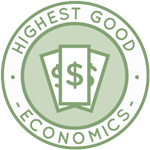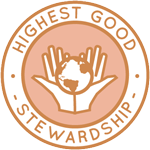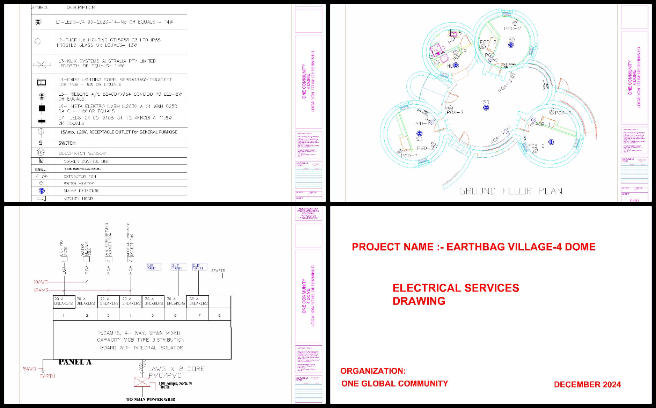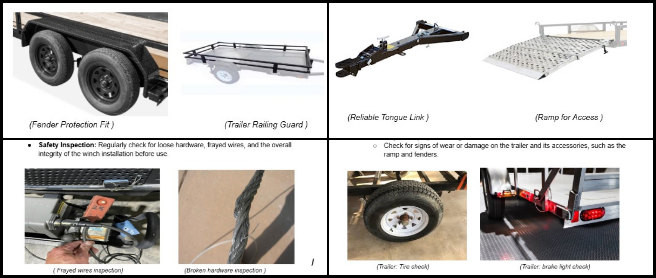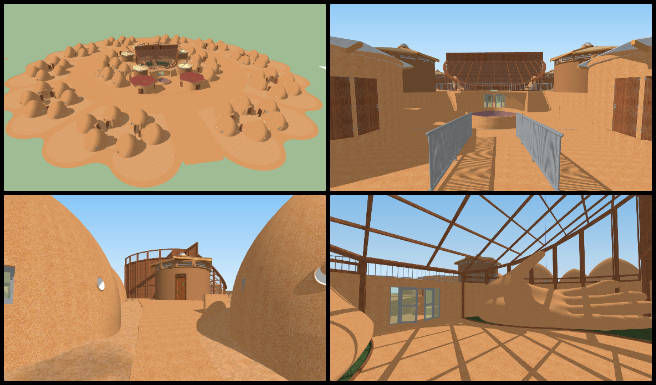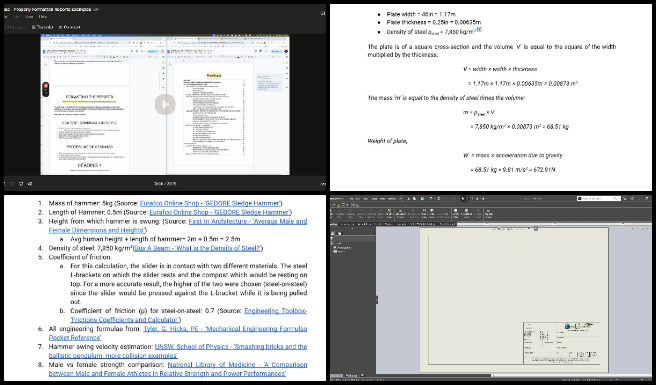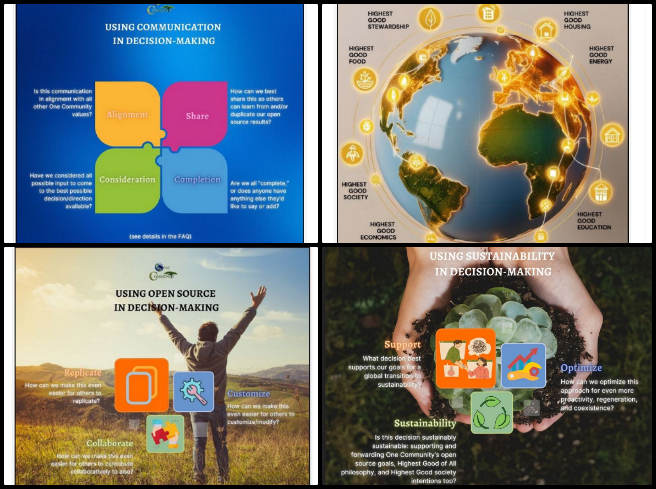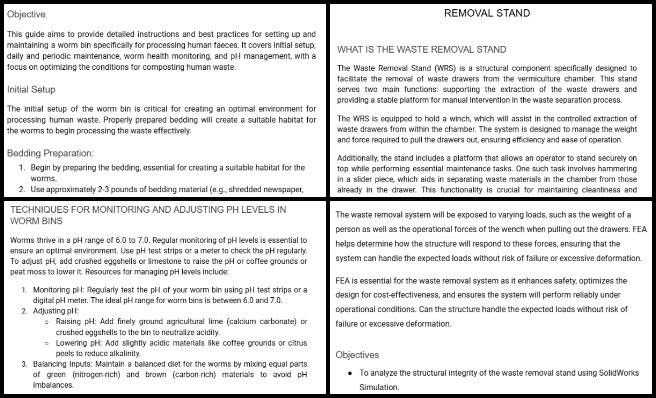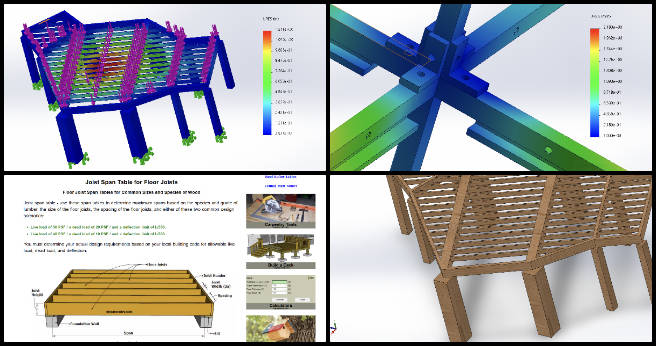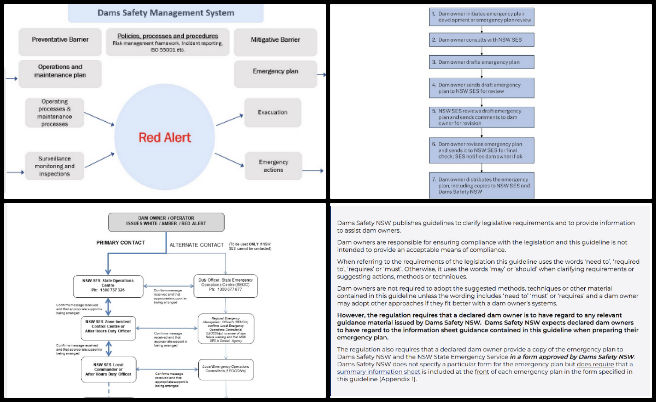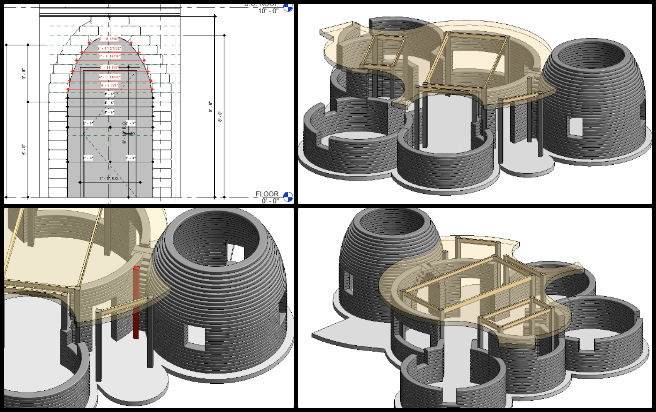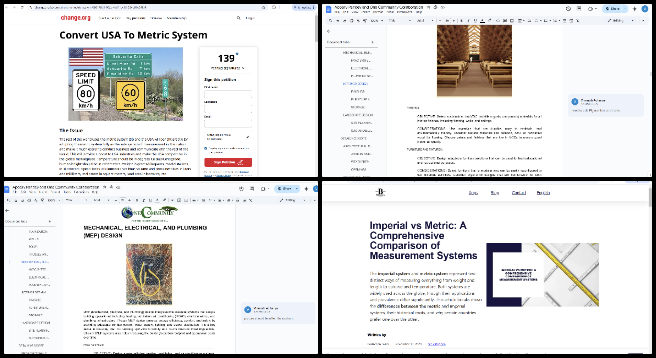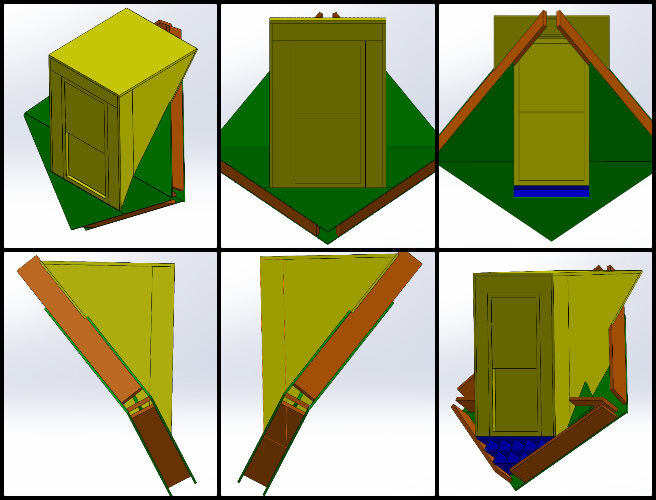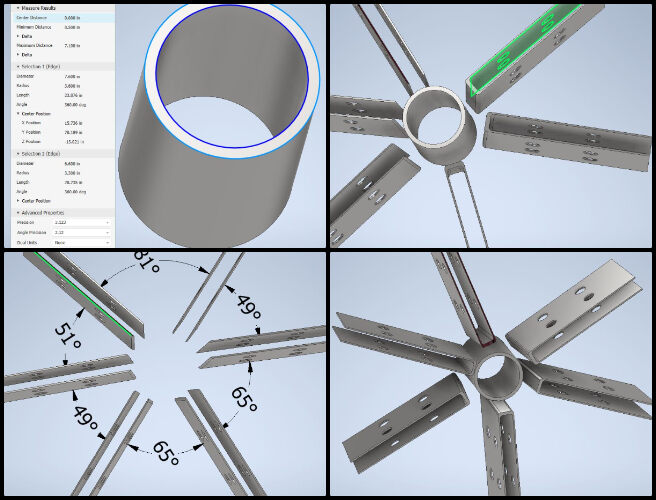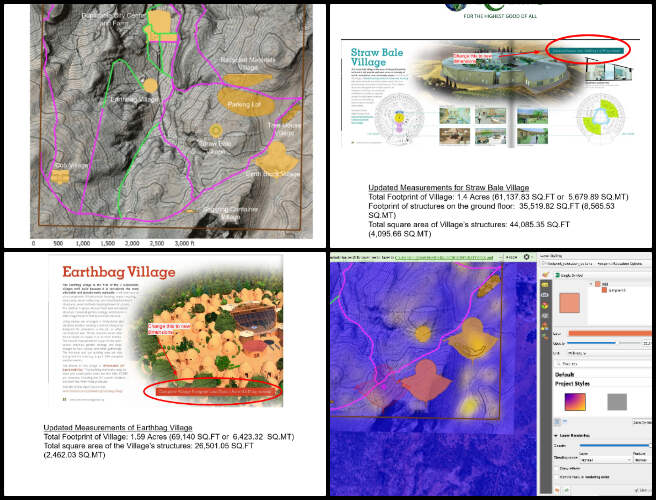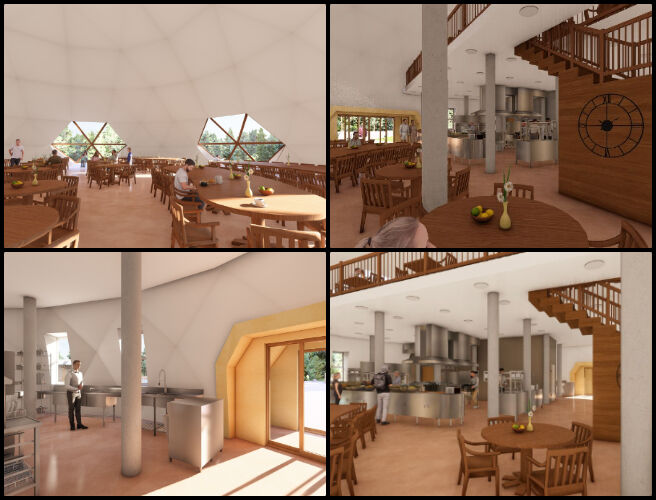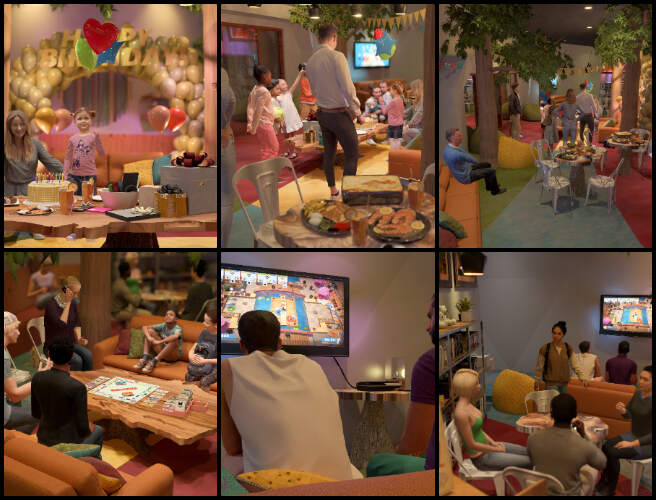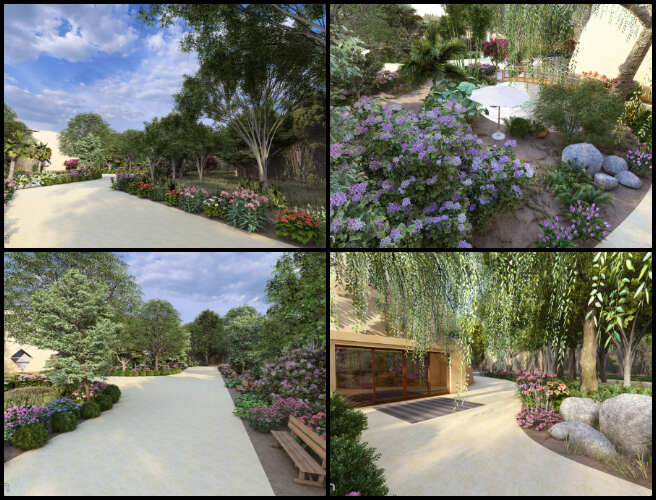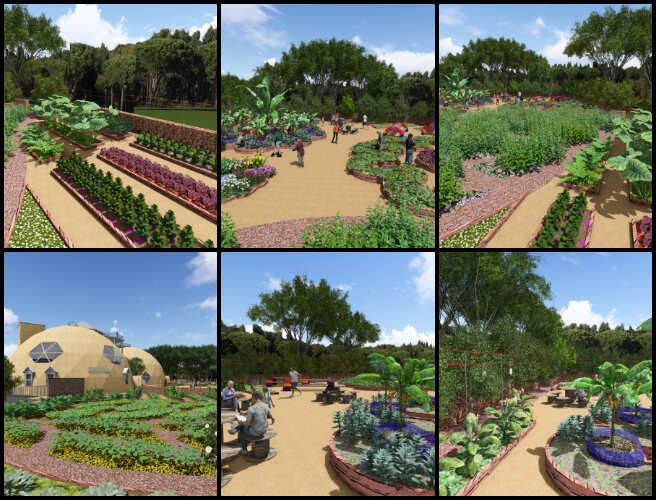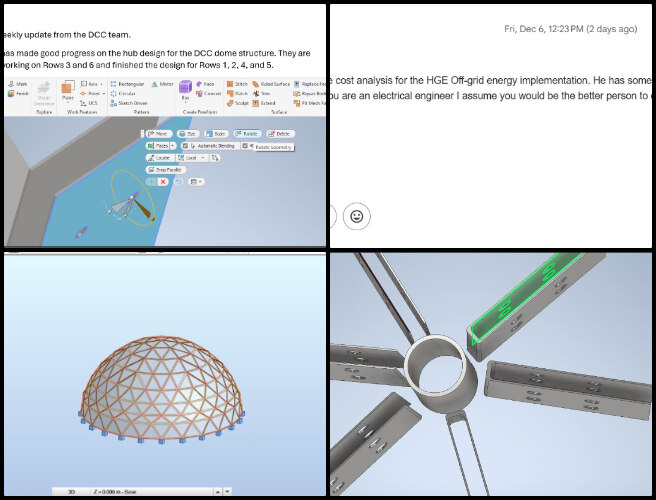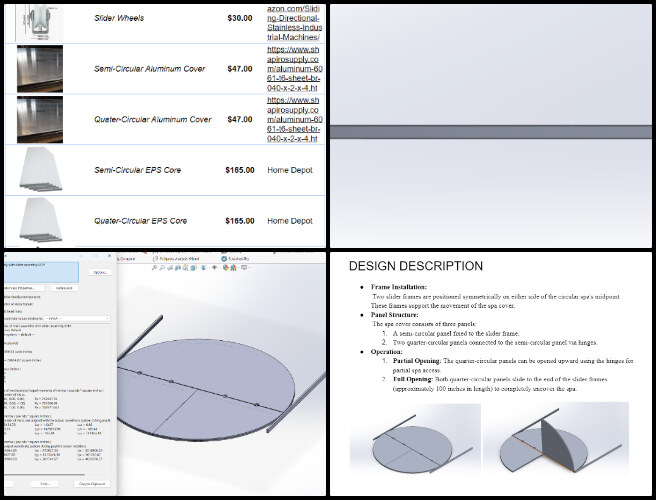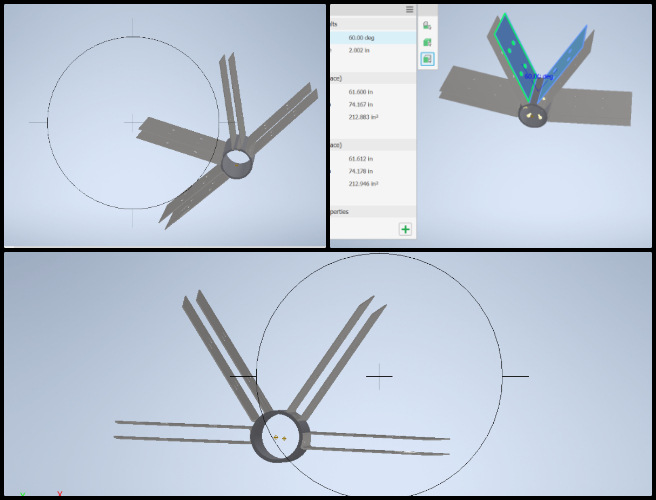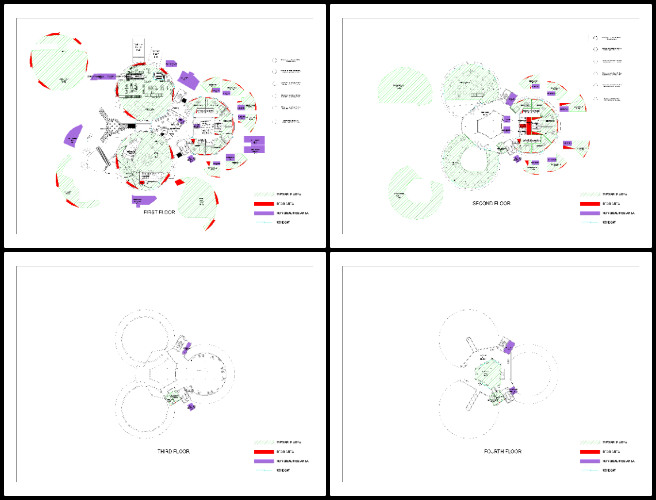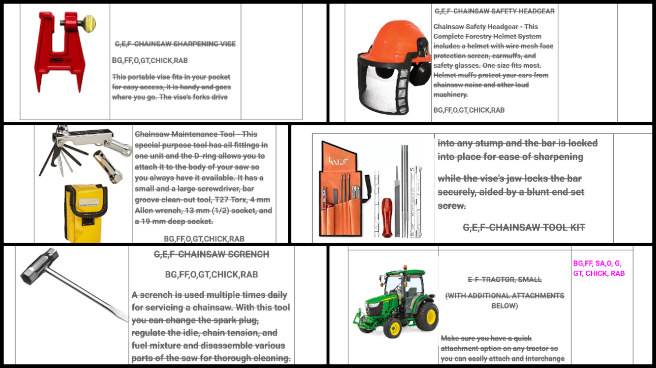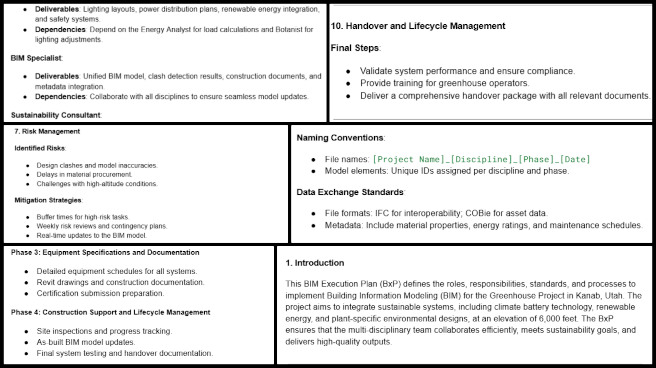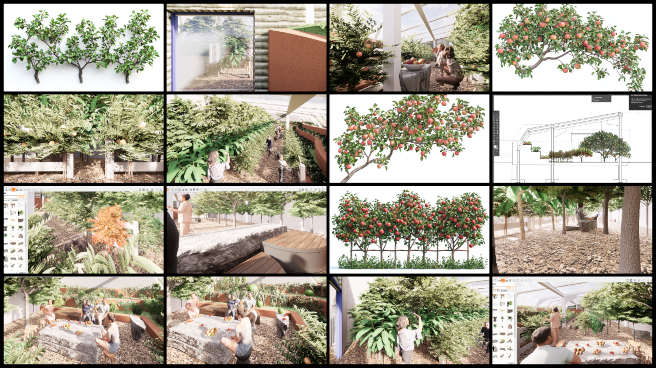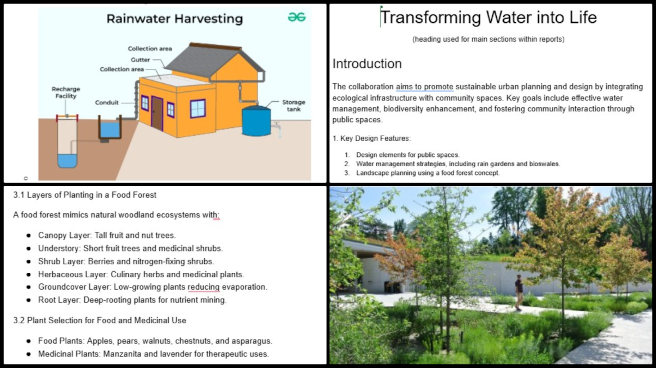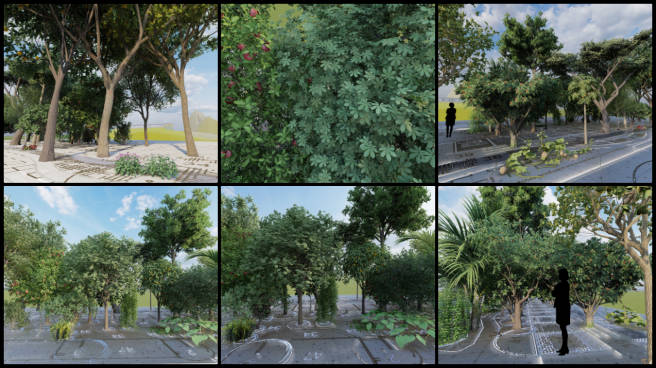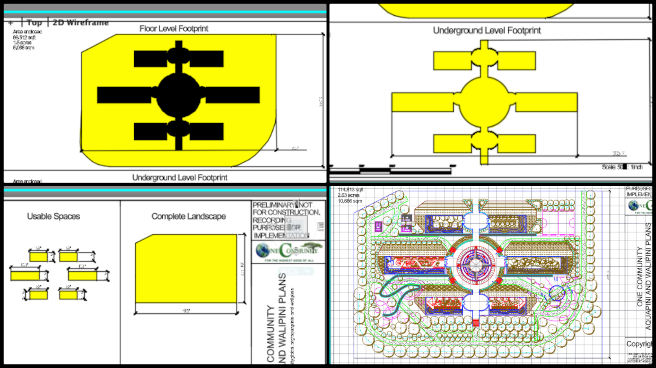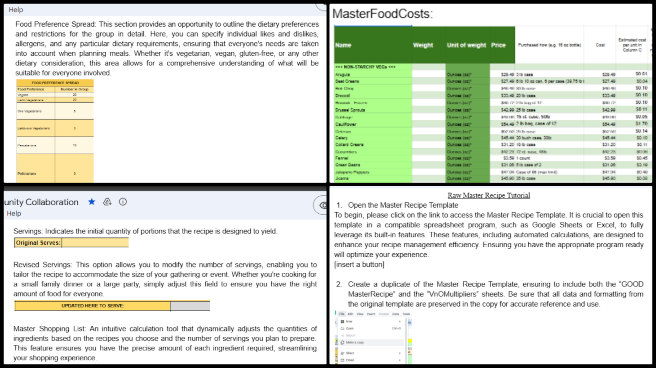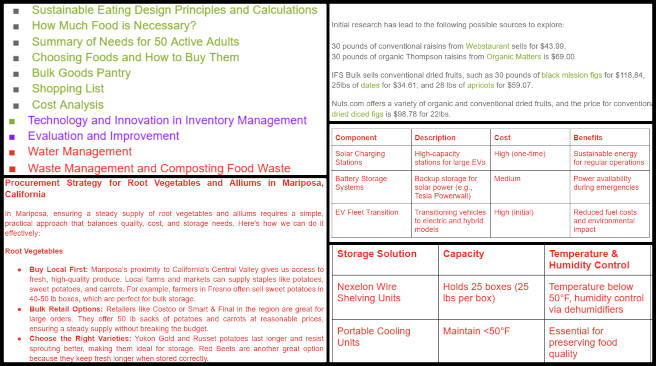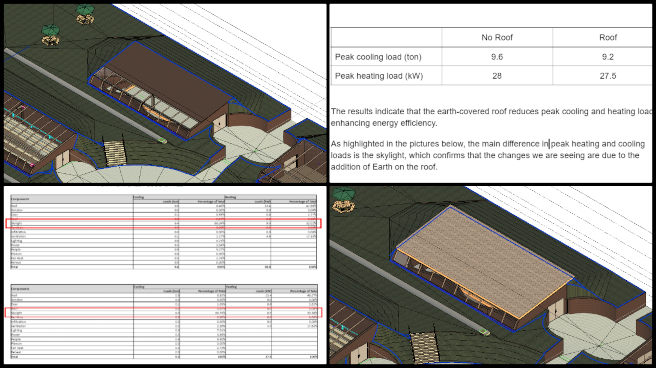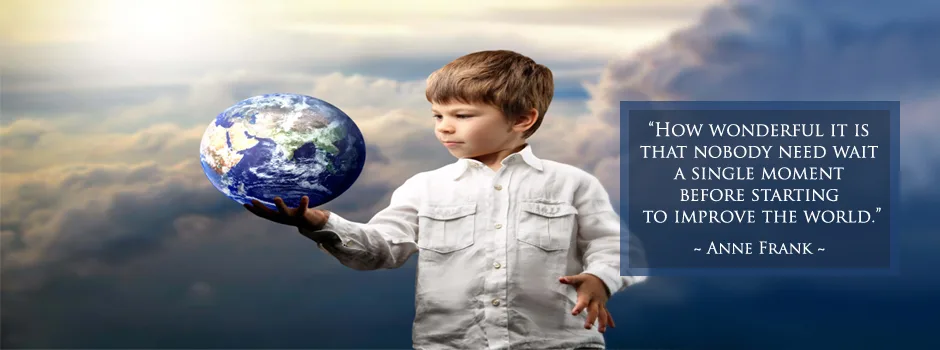
One Community Welcomes Yashwanth Pokala to the Software Development Team!
Posted on December 12, 2024 by One Community Hs
One Community welcomes Yashwanth Pokala to the Software Team as our newest Volunteer/Consultant!
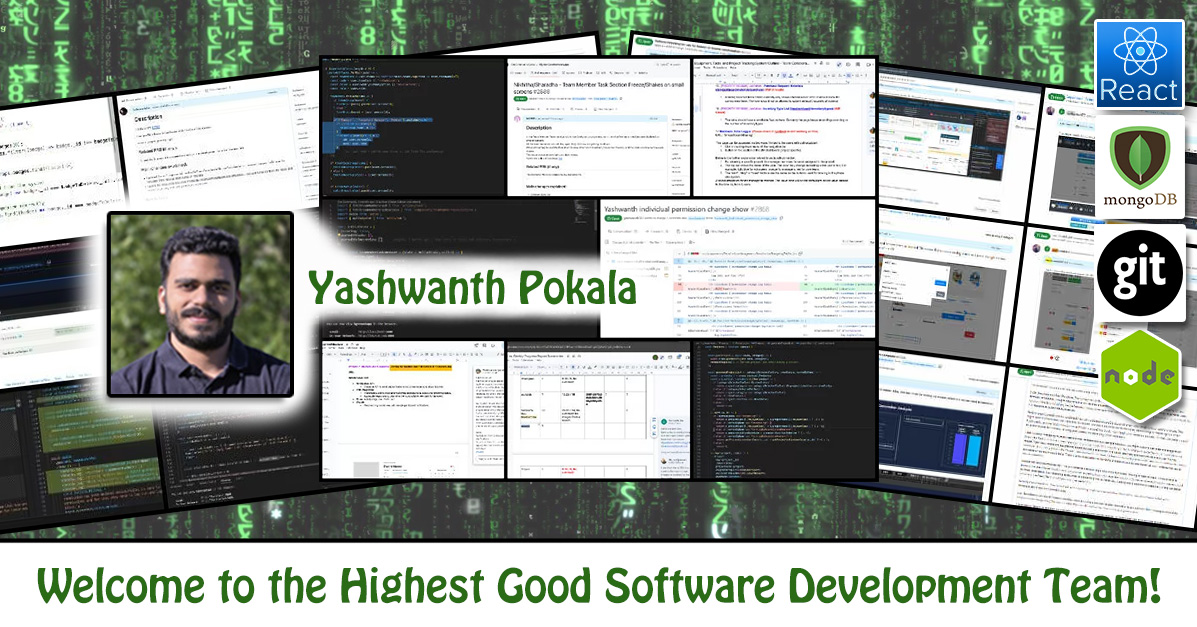
Yashwanth is a skilled developer with a strong focus on creating seamless, user-focused applications through expertise in both frontend and backend development. He has led projects like building a video streaming platform with real-time session management and designing a high-performance distributed indexing system. At One Community, contributing to the Highest Good Network Application, Yashwanth has contributed to developing new features, including a permission management tracker with a MongoDB model and APIs to monitor permission changes efficiently. He is committed to enhancing user experience, ensuring code quality, and delivering impactful, well-designed software solutions.
WELCOME TO THE TEAM YASHWANTH!
FOLLOW ONE COMMUNITY’S PROGRESS (click icons for our pages)
INVESTOR PAGES
GET INVOLVED
Thanks for Your Contributions to Our Software Development Team Ajay Kumar Reddy Inavolu!
Posted on December 11, 2024 by One Community Hs
One Community thanks Ajay Kumar Reddy Inavolu for his contributions as a Volunteer/Consultant on the Software Development Team!
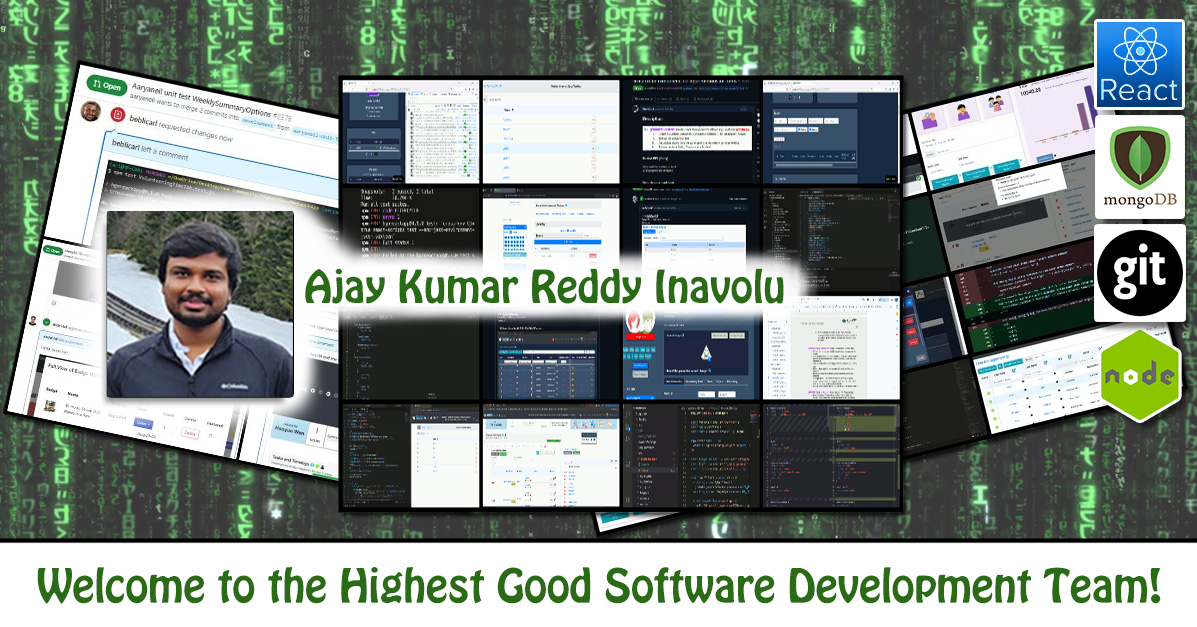
Ajay is a software engineer currently pursuing his Master of Science in Computer Science at Northeastern University’s Khoury College of Computer Sciences. Specializing in the MERN stack (MongoDB, Express.js, React.js, Node.js), he builds robust and scalable web applications. Ajay is proficient in both front-end and back-end development, with expertise in JavaScript, React, and Node.js. While a member of the One Community team, he has contributed to the development of the Highest Good Network Software reports, team location, and user management components and has reviewed over 110 pull requests, supporting improvements in system functionalities and collaborating effectively with the team.
WELCOME TO THE TEAM AJAY!
FOLLOW ONE COMMUNITY’S PROGRESS (click icons for our pages)
INVESTOR PAGES
GET INVOLVED
One Community Welcomes Cillian Ren to the Software Development Team!
Posted on December 9, 2024 by One Community Hs
One Community welcomes Cillian Ren to the Software Team as our newest Volunteer/Consultant!
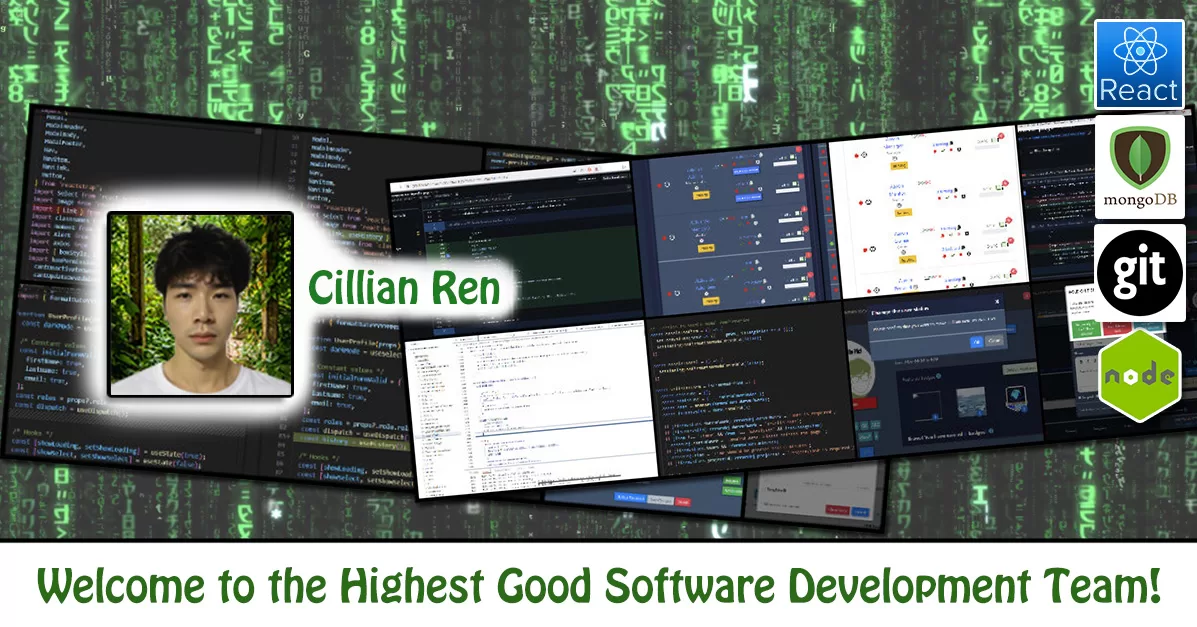
Cillian is an accomplished software engineer with experience in both frontend and backend development, focusing on building and enhancing full-stack applications. He brings a strong foundation in computer science principles and applies a meticulous approach to problem-solving, ensuring that code is clean, efficient, and designed to improve user experience and functionality. Cillian’s work is driven by a commitment to delivering high-quality software solutions that address complex technical challenges. As a member of the One Community team, he has contributed by identifying and resolving bugs in the Highest Good Network Software project and implementing new features to enhance operational efficiency and user interface interactions. His efforts have helped create a more robust and user-friendly platform, aligning with the organization’s mission of promoting sustainability and collaborative innovation through technology.
WELCOME TO THE TEAM CILLIAN!
FOLLOW ONE COMMUNITY’S PROGRESS (click icons for our pages)
INVESTOR PAGES
GET INVOLVED
Maximizing Sustainable Human Potential – One Community Weekly Progress Update #612
Posted on December 9, 2024 by One Community Hs
At One Community, we are maximizing sustainable human potential by integrating sustainable approaches to food, energy, housing, education, and economics. Our all-volunteer team is creating a self-replicating model that supports fulfilled living and global stewardship practices. Through open sourcing and free sharing every aspect of our work, we aim to establish a global network of teacher/demonstration hubs focused on regenerating our planet and evolving sustainability for “The Highest Good of All“.
- Here’s our project overview on maximizing sustainable human potential
- Here’s our world-change methodology
- Here’s how this becomes self-replicating
- Here’s how we are open source and free-sharing all the do-it-yourself designs
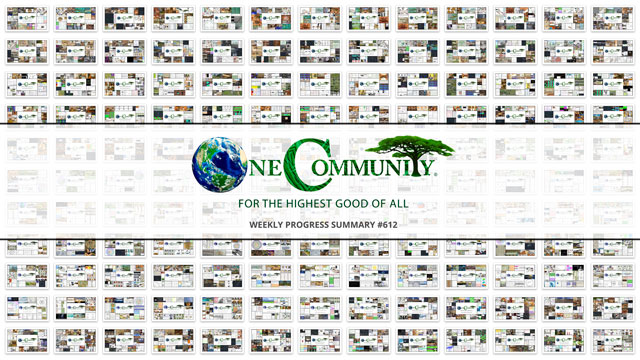
OUR MAIN OPEN SOURCE HUBS
Click on each icon to be taken to the corresponding Highest Good hub page.
One Community’s physical location will forward this movement as the first of many self-replicating teacher/demonstration communities, villages, and cities to be built around the world. This is the December 9th, 2024 edition (#612) of our weekly progress update detailing our team’s development and accomplishments:
Maximizing Sustainable Human Potential
One Community Progress Update #612
DONATE | COLLABORATE | HELP WITH LARGE-SCALE FUNDING
CLICK HERE IF YOU’D LIKE TO RECEIVE AN EMAIL EACH WEEK WHEN WE RELEASE A NEW UPDATE
YOU CAN ALSO JOIN US THROUGH SOCIAL MEDIA
ONE COMMUNITY WEEKLY UPDATE DETAILS
HIGHEST GOOD HOUSING PROGRESS
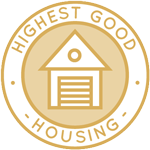 One Community is maximizing sustainable human potential through Highest Good housing that is artistic and beautiful, more affordable, more space efficient, lasts longer, DIY buildable, and constructed with healthy and sustainable materials:
One Community is maximizing sustainable human potential through Highest Good housing that is artistic and beautiful, more affordable, more space efficient, lasts longer, DIY buildable, and constructed with healthy and sustainable materials:
- Learn about maximizing sustainable human potential: Our Upcoming Crowdfunding Campaign
- Learn about the different village models: 7 Sustainable Village Models
- Visit the open source portals for the first two: Earthbag Village OS Hub | Straw Bale Village OS Hub
This week, Adefola (Fola) Madehin (Electrical Design Specialist) continued his work with Earthbag Village electrical designs; which can be important in maximizing sustainable human potential. Fola worked on the Earthbag Village project, completing the socket and panel layout with receptacles positioned in the bedrooms and living room, and the distribution panel installed in the living room. He finalized the lighting circuit lettering and selection, along with the socket ring circuit lettering and selection, for the Earthbag 4 Dome Village. He also completed the schematic diagram for the distribution panel in compliance with the National Electrical Code (NEC) and made progress on the schematic diagram using the American standard for single-phase voltage. The Earthbag Village is the first of 7 to be built as the housing component of One Community’s open source model for maximizing sustainable human potential. See some of his work in the collage below.
Adil Zulfiquar (Engineer) continued working on the Vermiculture Toilet engineering designs. Designs of this nature may be key in maximizing sustainable human potential His work centered on adding a new section on the trailer components, featuring images to enhance the utility trailers’ documentation. Safety measures in the winch operating manual were updated to include checks for frayed wires and broken connections, and the trailering operation manual was revised with guidelines on regular maintenance and inspection. Pictorial representations were introduced to improve clarity, and the report formatting was adjusted for better alignment and readability. The Earthbag Village is the first of 7 to be built as the housing component of One Community’s open source model for maximizing sustainable human potential. See below for some of the pictures related to work.
Akshit Sethi (Architectural Designer) continued working on updating the Earthbag Village SketchUp and AutoCAD layouts. Akshit focused on advancing the EarthBag Village project by finalizing plans and updating the AutoCAD drawings to incorporate feedback and revisions. Maximizing sustainable human potential is also largely dependent on adjustment and updates. He also completed the SketchUp model, refining the materials to match the existing design. This work involved ensuring visual accuracy and consistency across the model, aligning it with the overall design goals. These tasks contributed to moving the project forward, maintaining precision and quality in the deliverables. The Earthbag village is the first of 7 villages to be built as part of One Community’s open source model for maximizing sustainable human potential. See his work in the collage below.
Anil Karathra (Mechanical Engineer) continued helping complete the Vermiculture Toilet engineering and designs. His work focused on reviewing documentation updates for accuracy, preparing weekly summaries, and uploading relevant screenshots. Feedback from the latest review video was incorporated into the collaboration document. The success of maximizing sustainable human potential also requires collaboration and continuous feedback. During the weekly team meeting, discussions addressed the feasibility of developing a BIM model for the eco-toilet and ensuring that early-stage project requirements align with current progress to keep the project within scope.
Progress was also made on developing SolidWorks engineering drawing templates for use across One Community projects. Additionally, a basic outline for the vermiculture toilet bill of materials was created, and a list of parts and potential vendors for the toilet system was initiated. This approach to maximizing sustainable human potential supports the development of innovative solutions that are both environmentally friendly and effective. See below for pictures related to this work.
Charles Gooley (Web Designer) continued working on the Aircrete Engineering and Research: Compression Testing, Mix Ratios, R-value, and More page. He completed the Open Source DIY Earth Dam Design & Construction for Water Retention, Pond & Lake Creation tutorial by finalizing sections on construction methods for uses such as irrigation, aquaculture, recreation, and ecosystem support, which are central to maximizing sustainable human potential. Additionally, Charles integrated images into the One Community Pledge and related pages, resizing them to a width of 640 pixels and linking each to its full-size version. Aircrete is an alternative being explored for the Earthbag Village, a foundational part of One Community’s open-source model for maximizing sustainable human potential. Take a look at some of the work in the images below.
Joseph Osayande (Mechanical Engineer) continued helping finish the Vermiculture Toilet engineering and design details. Joseph focused his efforts on improving the formatting of technical reports, including significant updates to one report. Effective reporting can be a good way of maximizing sustainable human potential assessment. Updates involved reducing technical jargon to improve readability, checking grammar, and adding images and step-by-step instructions for clarity. Additional context was included to simplify the content and provide a clearer process for a general audience. The Earthbag Village is the first of 7 to be built as the housing component of One Community’s open source model for maximizing sustainable human potential. See some of his work in the collage below.
Karthik Pillai (Mechanical Engineer) continued helping finish the Vermiculture Toilet engineering and helping with the Earthbag Village 4-dome home roof plan. Karthik conducted finite element analysis (FEA) for the roof of the 4 Dome Cluster project, which determined that standard timber would not achieve the required deflection of less than one inch, prompting the decision to use I-section wooden beams. He also worked on optimizing the vermiculture toilet design by performing additional FEAs and making iterative adjustments to the model to improve functionality and meet project requirements. The Earthbag Village is the first of 7 to be built as the housing component of One Community’s open source model for maximizing sustainable human potential. See the work in the collage below.
Loza Ayehutsega (Civil Engineer/Assistant Civil Engineer) completed another week working on the Earth Dam risk assessment and dam break hazard assessment. Risk and hazard assessment is an integral part of maximizing sustainable human potential. Loza reviewed comments on the report, focusing on updating sections with revised image links. Additionally, she examined documents on emergency actions to protect dams and their remedial measures, emphasizing the importance of safeguarding lives, property, and the environment. Her work included structuring a guide for emergency response and outlining subsequent remedial actions. This approach to maximizing sustainable human potential supports the development of innovative solutions that are both environmentally friendly and effective. See below for pictures related to this work.
Michaela Silva (Architect) continued working on the interior details for the Earthbag Village 4-dome home design. Michaela worked on the Revit model, detailing each layer of the earthbag structure. Defining and distinguishing each layer is essential for maximizing sustainable human potential. She also facilitated a meeting to review the structural frame, during which it was noted that the current framing dimensions tested did not meet the 1″ maximum deflection requirement. This led to a recommendation to explore alternative framing members. The Earthbag Village is the first of 7 villages to be built as part of One Community’s open source model for maximizing sustainable human potential. See her work in the collage below.
Vimarsh Acharya (Engineering Manager and Technical Reviewer) continued working on identifying sustainability-related arguments covering the Highest Good Lifestyle Considerations and sourcing quality research to support each one. Maximizing sustainable human potential is largely dependent on thorough research. Vimarsh finalized corrections in the Ultimate Classroom Structural Design file, addressing minor revisions before completing the task. He also reviewed a document prepared by Jae, intended for community finalization. Additionally, he conducted research on the process of filing a petition to convert the United States’ measurement system from imperial to metric, producing initial content for further development. The One Community model, which combines forward-thinking education with sustainably built classrooms like this, is an excellent example of maximizing sustainable human potential. See the collage below for his work.
DUPLICABLE CITY CENTER PROGRESS
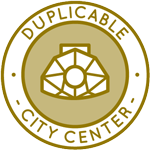 One Community is maximizing sustainable human potential through a Duplicable and Sustainable City Center that is LEED Platinum certified/Sustainable, can feed 200 people at a time, provide laundry for over 300 people, is beautiful, spacious, and saves resources, money, and space:
One Community is maximizing sustainable human potential through a Duplicable and Sustainable City Center that is LEED Platinum certified/Sustainable, can feed 200 people at a time, provide laundry for over 300 people, is beautiful, spacious, and saves resources, money, and space:
- Learn about this building and it’s function: Duplicable City Center Open Source Hub
This week, Adithya Bhalaji (Mechanical Engineer) continued exploring various types of dormer designs available in the market. Understanding market trends is an integral part of maximizing sustainable human potential. He focused on the design of the second-floor dormer, addressing its internal structure, external enclosures, window frame, and panes, as well as defining the attachment methods for the overall structure. The dormer assembly was completed, with materials specified for each component. Adithya is currently preparing the assembly instructions and compiling a slide deck. The next phase of the project involves performing a structural FEA study for individual components and the overall structure before submitting the final design for review. The Duplicable City Center represents a fundamental element of One Community’s open-source approach, dedicated to maximizing sustainable human potential. View examples of this work in the pictures provided below.
Arnob Mutsuddi (Mechanical Engineer) continued working on Duplicable City Center structural engineering model and details. Work began on the 6-3 hub connector, with the middle ring design currently in progress. Efforts continued on the row 6-2 hub connector, where the middle ring and five side struts have been designed. Progress on the row 6-3 hub connector included completing the middle ring and all side struts. Alignment of the side struts with the middle ring for the 6-3 hub connector was initiated, with ongoing efforts to ensure compliance with GD&T standards throughout the week. The Duplicable City Center is a foundational part of One Community’s open-source model, which excels in the mission of maximizing sustainable human potential. This approach is integral to their mission of maximizing sustainable human potential through innovative and scalable solutions. See some of this work in the pictures below.
Chris Blair (GIS Technician/Horticulturist) continued working with GIS data as part of One Community’s Permaculture Design that includes the location of the Duplicable City Center. He worked with GIS data as part of One Community’s Permaculture Design. Spatial analysis is an important technique in maximizing sustainable human potential. Using accurately scaled footprints of the villages and city center, he created a new master plan for the property, taking into account slope and solar potential. He also prepared a write-up identifying updates needed for the village sizes in One Community’s digital book, Seven Model Villages and City Center. Within One Community’s open-source framework, the Duplicable City Center plays a central role in maximizing sustainable human potential. The images below showcase some of this work.
Faeq Abu Alia (Architectural Engineer) continued his work on the Duplicable City Center kitchen. The existence of food security measures is key strategy in maximizing sustainable human potential. He refined the Duplicable City Center kitchen model in SketchUp, addressing design issues and implementing feedback to improve its overall quality. He adjusted materials in Lumion to enhance the visual details, created three walkthrough paths to highlight the kitchen’s design, and completed rendering the walkthrough videos to meet project specifications. The Duplicable City Center represents a fundamental element of One Community’s open-source approach, dedicated to the mission of maximizing sustainable human potential. View examples of this work in the pictures provided below.
Jason Bao (Architectural Designer) continued working on producing renders for the Duplicable City Center library. His work focused on producing renders for the requested game night and birthday scenes. Both scenes required rearranging existing assets within the model and sourcing new assets to complete the desired setups. For the game night scene, adjustments were made to lighting, models, textures, and figures to create a realistic environment depicting people of varying ages, demographics, and interests engaging in gaming within a shared space. Knowing the key population characteristics is essential in maximizing sustainable human potential. After identifying optimal camera angles for storytelling shots, high-quality renders were completed and uploaded to Dropbox.
For the birthday scene, adjustments were made in SketchUp to incorporate party-specific elements such as decorations, food, and drinks, followed by importing the model into Lumion for further refinements. Lumion adjustments included tweaking textures, colors, and lighting to ensure consistency and addressing issues such as texture overlay problems, balloon quality, and clipping errors. The finalized birthday scene renders were completed and uploaded, with a note added in Dropbox to confirm if additional renders of the scene are required. The Duplicable City Center is a foundational part of One Community’s open-source model, which excels in maximizing sustainable human potential. This approach is integral to their mission of maximizing sustainable human potential through innovative and scalable solutions. See some of this work in the pictures below.
Mohammed Maaz Siddiqui (Architect) continued working on the outdoor landscape areas for the Duplicable City Center. He focused on developing the front landscape area of the Duplicable City Center project by integrating trees based on permaculture plans, selecting and planting specified or similar species to align with design requirements. The adoption of diverse species contributes to maximizing sustainable human potential. He enhanced the landscape’s volume by increasing tree density and incorporating undergrowth to reduce the appearance of emptiness. Additional plants, trees, and flowers were added to create a more vibrant and engaging environment. Changes were made to the landscape based on review feedback to refine the overall scene. Within One Community’s open-source framework, the Duplicable City Center plays a central role in the mission of maximizing sustainable human potential. The images below showcase some of this work.
Nimika Devi (Architect) continued her contributions to the landscape design and development of the Duplicable City Center‘s urban farm. Her work on the poultry area involved incorporating additional birds, cows, and sheep based on the project map. Such integration is vital in maximizing sustainable human potential. Small rendering details were incorporated to enhance the visual quality of the walkthrough. Within One Community’s open-source framework, the Duplicable City Center plays a central role in the mission of maximizing sustainable human potential. The images below showcase some of this work.
Rachan Rao (Project Manager) worked with Vatsal to assist him with the cost analysis for Off-Grid energy implementation in the Highest Good energy project. Adopting sustainable energy is also another way of maximizing sustainable human potential. He reviewed each project phase, providing a detailed explanation of the energy sources and how to use the provided spreadsheets effectively. He also introduced Vatsal to Sarmad so that they can connect with each other for additional help. Rachan also collaborated with the DCC structural design team to assess their progress and provide updates on their weekly objectives. Within One Community’s open-source framework, the Duplicable City Center plays a central role in the mission of maximizing sustainable human potential. The images below showcase some of this work.
Sanket Basannavar (Mechanical Engineer) continued working on the Duplicable City Center spa cover as part of the City Center Natural Pool and Eco-spa Designs. The weight of the spa cover was reduced from 1200 lbs to 630 lbs by modifying the initial design. Such modifications are important in maximizing sustainable human potential. Static and thermal analyses are being prepared for the updated design, and the report is being rewritten to align with the website format. Research on market-available products for spa covers was also initiated to support cost analysis. Within One Community’s open-source framework, the Duplicable City Center plays a central role in maximizing sustainable human potential. The images below showcase some of this work.
Tasmia Hasan (Design Engineer) continued her work on the structural engineering of the Duplicable City Center. She focused on refining the row 3 hub connector design by adjusting the angles of the steel ledges to achieve a better fit with the frame. She reviewed the original fit calculations and made the necessary modifications; which can also be vital in maximizing sustainable human potential. Additionally, she worked on optimizing the ring angles and fit. As a foundational component of One Community’s open-source strategy, the Duplicable City Center is designed for maximizing sustainable human potential. You can see examples of this work in the following images.
Yancong E (Architectural Designer) continued working on the Duplicable City Center project. He updated multiple sections of the tutorial based on recent feedback, including formatting changes to the quotes section, headings, and bullet points, as well as revisions to the wording in the floor-by-floor analysis section. He also added a legend labeled “Non-Qualified Area” to the floor plan and updated the hatch color for the corresponding sections to improve clarity and readability. Within One Community’s open-source framework, the Duplicable City Center plays a central role in the mission of maximizing sustainable human potential. The images below showcase some of this work.
HIGHEST GOOD FOOD PROGRESS
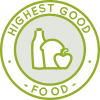 One Community is maximizing sustainable human potential through Highest Good food that is more diverse, more nutritious, locally grown and sustainable, and part of our open source botanical garden model to support and share bio-diversity:
One Community is maximizing sustainable human potential through Highest Good food that is more diverse, more nutritious, locally grown and sustainable, and part of our open source botanical garden model to support and share bio-diversity:
- Learn about the structures: Hoop House Hub | Aquapini & Walipini Open Source Hub
- See what we’ll be growing: Gardens & Hoop Houses | Large-scale Structures | Food Forest | TA
This week, the core team continued working on the Highest Good food Master List of Tools, Equipment, & Materials/Supplies adding items sourced from the Goat, Chicken, and Rabbit pages. Each added entry represents a shared item used across multiple projects within One Community. Some of the items added this week include a mid-sized tractor, chainsaw tool kit, scrench, chainsaw sharpening vise, chainsaw safety headgear, chainsaw replacement chain, and chainsaw maintenance tools. Items specific to a single project and not used elsewhere are excluded from the Master List of Tools, Equipment, and Materials/Supplies. This effort is part of One Community’s open source model for maximizing sustainable human potential. See below for some of the pictures related to this work.
Jay Nair (BIM Designer) continued working on Aquapini and Walipini Planting and Harvesting lighting and HVAC design; creating a spreadsheet for the cost analysis of parts used in the Greenhouse project, organizing data to support financial evaluation and planning. Maximizing sustainable human potential is largely dependent on financial costing. Additionally, Jay developed a BIM Execution Plan, outlining the project’s standards, workflows, responsibilities, and deliverables to ensure clear guidelines and efficient collaboration among team members. The Highest Good Food initiative is a key component of One Community’s open source plans, focused on maximizing sustainable human potential, and exemplifies the organization’s commitment through innovative design and implementation. Below are some of the images showcasing this work.
Junyi Shi (Landscape Architect) started working on developing a design for Walipini #2 as a part of Aquapini and Walipini Planting and Harvesting project. She adjusted the materials for the People Space structure, switching the primary material to stone; which can also be essential in maximizing sustainable human potential. In CAD, the tree distribution was rearranged to ensure a height progression from south to north. The route within the People Space was redesigned, and these updates were synchronized in SketchUp, where suitable plants and visual representations were selected to accurately reflect the materials and vegetation. For the Apple Wall structure, additional AI rendering was completed to ensure the accuracy of the final section. Lastly, the plants were roughly arranged in the section map to enhance clarity in subsequent visuals. The Highest Good Food initiative is essential to One Community’s open source plans, focused on promoting a sustainable approach to maximizing sustainable human potential. Her contributions are highlighted in the collage below.
Purva Borkar (Landscape Architect) continued with her work on creating an outdoor merge of a food-producing ecosystem and people spaces for the Aquapini and Walipini Planting and Harvesting structures. She worked on a report exploring sustainable urban design through green infrastructure integration and community spaces. Sustainable designs is central in maximizing sustainable human potential. The report focuses on advanced water management systems, including rain gardens and bioswales, enhancing biodiversity with native plants, and designing functional green spaces. It emphasizes creating ecologically balanced, visually appealing, and community-focused environments that promote sustainability and public interaction. As part of One Community’s open source efforts, the Highest Good Food initiative embodies a commitment to maximizing sustainable human potential. The images below offer a glimpse into these ongoing efforts.
Silin Wang (Landscape Designer) continued rendering work for Aquapini and Walipini Planting and Harvesting #2: Tropical Moist House. She searched for edible aquatic plant models that were not available in the Lumion asset library and created custom models to supplement them. The supplementation of models can also contribute to maximizing sustainable human potential effectively. She then arranged these accurate, high-quality plant models within the planting beds in the aquatic zones on both sides. While preparing the rendering documentation for the Highest Good Food initiative, focused on maximizing sustainable human potential, she identified discrepancies between some models and the CAD drawings, along with design flaws that could hinder circulation within the space, prompting her to propose potential optimization suggestions. Her work is showcased in the collage below.
Surya Teja Anumolu (Volunteer Mechanical Engineer) continued his work on the Highest Good Food most sustainable construction and agricultural equipment. He focused on refining Aquapini and Walipini Planting and Harvesting footprint drawings to include scale bars and legends at each level for the different types of footprints created last week. Using the master AutoCAD file from the One Community Dropbox folder, Surya combined five distinct drawings to create the final file for the Aquapini and Walipni databases. The Highest Good Food initiative is a key component of One Community’s open-source plans, focused on maximizing sustainable human potential. This approach is critical to ensure alignment with the initiative’s goals. See his work in the collage below.
Syahrina Maulida Majid (Volunteer Nutritionist) continued working on creating menu implementation tutorials as a part of One Community’s Transition Food Self-Sufficiency Plan. She worked on menu implementation by refining and testing the master recipe template, a key component in maximizing sustainable human potential. She developed step-by-step instructions for a tutorial to guide users on data input, adapting the template to various dietary needs, and interpreting its outputs. Observations from earlier testing were integrated to address potential challenges and enhance the tutorial’s clarity. Additionally, Syahrina documented examples to provide practical context, ensuring the tutorial is accessible and applicable to a wide range of users. The Highest Good Food initiative plays a crucial role in One Community’s open source plans for maximizing sustainable human potential. Her work is showcased in the collage below.
Tanmay Koparde (Industrial Engineer And Team Administrator) continued working on the Menu Supply Chain and Shopping Plan, Cost Analysis, and Food Procurement and Storage Plan to streamline organizational workflows and enhance efficiency. Maximizing sustainable human potential largely depends on the implementation efficiency. He performed a case review to assess existing plans and added critical improvements, including new sections on waste management and water management, ensuring alignment with project objectives. He also focused on a hypothetical location, Mariposa, California, tailoring strategies to address its specific needs. Additionally, Tanmay reviewed Kushagra’s training work, identifying minor errors and providing actionable suggestions to improve accuracy and clarity. The Highest Good Food initiative is a key component of One Community’s open source plans, focused on maximizing sustainable human potential. See his work in the collage below.
Vatsal Tapiawala (Mechanical Engineer) continued working on integrating ideas from Paul Wheaton’s “Truly Passive Greenhouse” designs into the Aquapini/Walipinis structures. The incorporation of Aquapini is essential to maximizing sustainable human potential. He focused on analyzing the heating and cooling loads for Walipini 1. He performed a comparative study of the peak loads under various scenarios to understand the thermal performance of the structure. In addition, Vatsal documented the findings and began drafting the report to detail the analysis outcomes. The Highest Good Food Initiative is a key component of One Community’s open source plans, focused on maximizing sustainable human potential. See his work in the collage below.
Ziyi Chen (Landscape Designer) continued working on the design of the outdoor spaces for the Aquapini/Walipinis structures. She worked on model development, focusing on the area between the north road and the outer avenue of the Zen building. Improving movement by designing roads and other modes of transport contributes to maximizing sustainable human potential. Ziyi designed the main landscape connecting the building and the road, incorporating a peripheral straight guide road with repeated low plants and ground cover to create a rhythmic visual effect while minimizing winter shadows. Red dogwood branches were included to enhance visual interest during winter. Given the proximity to the building structure, the design emphasizes a low-color, repeated palette and includes an open space to allow pedestrian access to the Zen structure. The Highest Good Food initiative is a key component of One Community’s open source plans, focused on maximizing sustainable human potential. See her work in the collage below.
HIGHEST GOOD ENERGY PROGRESS
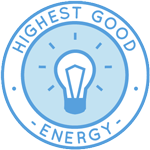 One Community is maximizing sustainable human potential through Highest Good energy that is more sustainable, resilient, supports self-sufficiency and includes solar, wind, hydro and more:
One Community is maximizing sustainable human potential through Highest Good energy that is more sustainable, resilient, supports self-sufficiency and includes solar, wind, hydro and more:
- Learn about the open source sustainable-energy foundations: Solar, Hydro, and Wind
- Explore our research into the most sustainable products and companies for saving water and energy: Insulation, Eco-laundry, Lightbulbs and Light Bulb Companies, Doors and Door Companies, Windows and Window Companies, Toilets, Faucets and Faucet Accessories, Urinals, and more.
This week, Muhammad Sarmad Tariq (Electrical Engineer) continued helping finish the Highest Good energy component and evaluating grid-tie vs off-grid solar design. He created an Excel sheet to calculate the costs of off-grid versus on-grid PV solar systems, which also contributes to maximizing sustainable human potential. The calculator compares the costs of grid-tie and off-grid solar PV systems in terms of annualized costs and determines the cost of energy generated by each system per kWh. The model assumes that the electricity load is equal to the solar panel PV power, meaning that no electricity is bought from or sold to the grid in both off-grid and on-grid solar PV systems, which relates to maximizing sustainable human potential. View some of the work in the collage below.
Vatsal Hitendra Shah (Volunteer Engineering Project Manager) continued reviewing the One Community Highest Good energy initiative and gained an understanding of its phases. This week, Vatsal worked on clarifying the relationship between the Ruiqi sheet and the cost analysis sheet for the Highest Good Energy project. He learned that component selections are based on requirements outlined on the website for different project phases. Maximizing sustainable human potential can also be achieved in well-defined phases. Additionally, Varsal outlined a plan to create a new sheet showing cost analysis per phase, including justifications for component choices and total phase costs.
On another project, Vatsal met with Chitra to address issues in the Building and Inventory Management dashboard, creating an account for testing and identifying non-functional elements. He also reviewed the work breakdown structure (WBS) used to track tasks and plans to begin drafting a manual focusing on tasks functioning correctly. See the Highest Good Society and Highest Good Network pages for more on how this relates to maximizing sustainable human potential. View some of the work in the collage below.
Viktoriia Zakharova (Administrative Assistant) continued her research to complete the update of the Most Sustainable Lightbulbs and Light Bulb Companies. This week, Viktoriia worked on updating the Most Sustainable Light Bulb and Light Bulb Companies webpage. She compiled feedback from a second review and created a task list to address the suggestions. Viktoriia added missing links to the table of contents to improve navigation, included images for each lightbulb type, made the lightbulb comparative analysis graphic clickable for enlargement, and adjusted the coding to add spacing between sections, which leads to maximizing sustainable human potential. See below in the collage for the work.
Yi-Ju Lien (Environmental Engineer) continued her work on the Highest Good energy LEED points related to stormwater retention. She focused on updating the content for the water harvesting section of the webpage. She introduced the basic components of water harvesting systems and provided an overview of water disinfection technologies. Yi-Ju also included a cost comparison for the various water disinfection methods and created a comparison table for household-scale water infiltration methods, detailing their cost, function, and pros and cons. The tables were designed to help readers evaluate the best options for their system based on their specific needs of maximizing sustainable human potential. See for work in the collage below.
HIGHEST GOOD EDUCATION PROGRESS
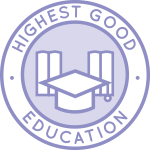 One Community is maximizing sustainable human potential through Highest Good education that is for all ages, applicable in any environment, adaptable to individual needs, far exceeds traditional education standards, and more fun for both the teachers and the students. This component of One Community is about 95% complete with only the Open Source School Licensing and Ultimate Classroom construction and assembly details remaining to be finished. We’ll report on the final two elements to be finished as we develop them. With over 8 years of work invested in the process, the sections below are all complete until we move onto the property and continue the development and open sourcing process with teachers and students – a development process that is built directly into the structure of the education program and everything else we’re creating too:
One Community is maximizing sustainable human potential through Highest Good education that is for all ages, applicable in any environment, adaptable to individual needs, far exceeds traditional education standards, and more fun for both the teachers and the students. This component of One Community is about 95% complete with only the Open Source School Licensing and Ultimate Classroom construction and assembly details remaining to be finished. We’ll report on the final two elements to be finished as we develop them. With over 8 years of work invested in the process, the sections below are all complete until we move onto the property and continue the development and open sourcing process with teachers and students – a development process that is built directly into the structure of the education program and everything else we’re creating too:
- Program Overview: Education Open Source Hub
- How the components work together in designing human orchestrated eco-abundance: How to use the Education for Life Program
- Lesson Plans for Life – Lesson Plans How-to
- Foundations of Outstanding Leaders, Teachers, and Communicators
- Curriculum for Life
- Teaching Strategies for Life
- Learning Tools and Toys for Life
- Evaluation and Evolution
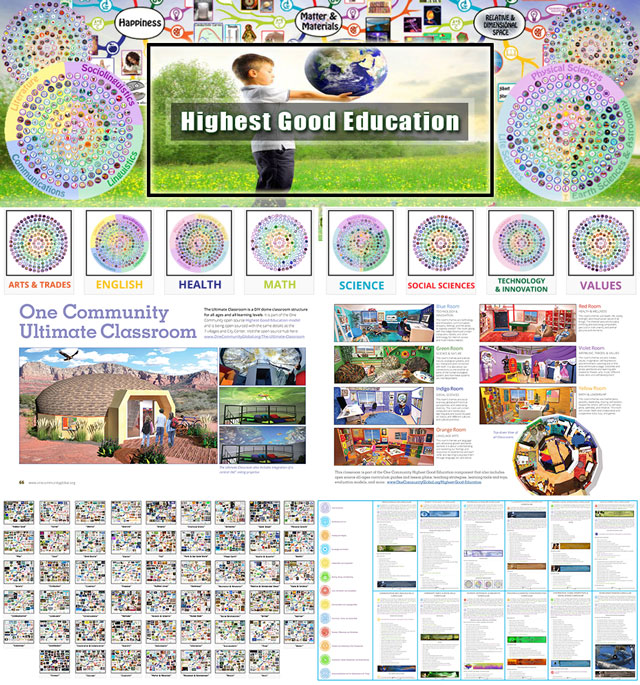
Highest Good Education: All Subjects | All Learning Levels | Any Age – Click image for the open source hub
HIGHEST GOOD SOCIETY PROGRESS
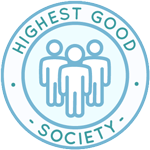 One Community is maximizing sustainable human potential through a Highest Good society approach to living that is founded on fulfilled living, the study of meeting human needs, Community, and making a difference in the world:
One Community is maximizing sustainable human potential through a Highest Good society approach to living that is founded on fulfilled living, the study of meeting human needs, Community, and making a difference in the world:
- Read the Highest Good society overview: Highest Good Society
- Learn about the model for fulfilled living and sharing: A Day in the Life
- Learn about the 4 economic models: RBE | For-profit | Non-profit | Entrepreneurship
- Learn about our open source community collaboration and management software: The Highest Good Network
This week, the core team completed over 55 hours managing One Community’s volunteer-work review not included above, emails, social media accounts, web development, new bug identification and bug-fix integration for the Highest Good Network software, and interviewing and getting set up new volunteer team members. They also shot and incorporated the video above that talks about maximizing sustainable human potential and how maximizing sustainable human potential is a foundation of the bigger picture of everything One Community is doing. The image below shows some of this work.
Anoushka Hazari (Data Analyst) continued working on code to automate and simplify the Highest Good Network software promotion process. She reviewed team pull requests, updated the PR review table, and ensured all documentation was accurate and current. A blog was created and complemented with a collage, and a prior error on the blog was addressed for accuracy. Updates were also made to the HGN spreadsheet to align with team requirements. In terms of coding, work progressed on refining a script for data extraction, with initial errors resolved and the script functioning as expected. However, subsequent challenges arose, including a runtime error related to the StringIO library and difficulties extracting phone numbers and emails. Efforts continued to troubleshoot these issues, researching solutions and experimenting with various approaches while noting the need for additional input to resolve remaining challenges. This work helps One Community’s mission of maximizing sustainable human potential and reinforces our commitment to maximizing sustainable human potential. The following images show her work for the week.
Chitra Siddharthan (Data Analyst And Team Administrator) continued focusing on existing web pages of the HGN Phase II website, starting with testing its functionality. She created a table to track the implementation status of wireframes designed for HGN Phase II. Chitra had a meeting with Vatsal to discuss and plan the creation of a user manual for the sub-tasks of Task 1 listed in the Phase 2 WBS Excel sheet. She reviewed and provided comments on Kushagra’s Admin Training document and blog, and also checked the images and folders submitted in Dropbox related to Kushagra’s work. Additionally, she also had a meeting with Supriya to discuss work progress, plan tasks, and address the pull request raised for the Projects dropdown and the 404 page. This work helps One Community’s mission of maximizing sustainable human potential and reinforces our commitment to maximizing sustainable human potential. The following images show her work for the week.
Durgeshwari Naikwade (Data Analyst) created a new tracking spreadsheet for use with Google Analytics and Rank Math Analytics. She also completed the integration of Google Analytics with Google Search Console and Rank Math Analytics, documenting the process. In addition, Durgeshwari led the weekly meeting, assigned tasks to team members, and provided access to GA4 and GSC. The team was tasked with analyzing one webpage using the free tools and the shared spreadsheet. Key action items included reviewing progress on improving the tracking spreadsheet and SEO metrics for Rank Math. She also created 2 Excel dashboards for analyzing LinkedIn data, identifying trends for each day of the week, and providing actionable insights to help increase engagement. This work helps One Community’s mission of maximizing sustainable human potential and reinforces our commitment to maximizing sustainable human potential. The following images show her work for the week.
Feras Rehman (Data Analyst) continued working on developing One Community’s Mastodon account and strategy. He also managed his part of the One Community Updates Blog by reviewing and adding images to supplement the summary. He implemented targeted Mastodon social media strategies, resulting in a 300% increase in post reach through optimized hashtag use and improved post structuring. Feras also scheduled five additional Mastodon posts for the coming week using Buffer. Additionally, he completed a weekly review for OC Administration, enhancing the summary document with visuals. This work helps One Community’s mission of maximizing sustainable human potential and reinforces our commitment to maximizing sustainable human potential. The following images show his work for the week.
Hritvik Mahajan (Data Analyst) continued focusing on multiple tasks related to marketing, promotion, software development, and administrative activities. He worked on a Google Sheets tracker for social media engagement by manually adding Twitter data and analyzing the performance of high-engagement Twitter posts across various communities. In software development, he continued designing the HGN social media scheduler on Figma. He documented the progress while also testing frontend pull requests, addressing merge conflicts, and following up with team members for changes. Additionally, he began creating a Google Sheet to track overall social media engagement. On the administrative side, he reviewed the Step 4 documents for four team members by checking their blog pages, folders, and comments, and tested frontend pull requests on the development site. This work helps One Community’s mission of maximizing sustainable human potential and reinforces our commitment to maximizing sustainable human potential. The following images show his work for the week.
Raghav Dinesh Pamuru (Product Manager) continued focusing on designing and building a Google Sheets dashboard to simplify tracking and analyzing social media engagement. The dashboard consolidates metrics like weekly engagements, total followers, posts made, and engagement growth percentages from multiple platforms. He ensured it was accessible for team collaboration and formatted it with clear visualizations, including charts, to make data interpretation straightforward. He also collaborated with team members to gather relevant data and incorporated their input to align the dashboard with our goals and project needs. This work helps One Community’s mission of maximizing sustainable human potential and reinforces our commitment to maximizing sustainable human potential. The following images show his work for the week.
Rahul Bavanandan (Data Analyst) continued working on several key projects within the Highest Good Network software, One Community’s Reddit presence, and administration. He contributed to One Community Global by curating content for the weekly progress update, adding weekly summaries and photo collages to the webpage, and ensuring all information was accurately presented. He also reviewed summaries and images from other team members, providing feedback to enhance their contributions. For the Alpha Team, he engaged with diverse Reddit posts to increase comment karma while contributing original content to establish a presence and boost post karma. Additionally, he refined and formatted a document outlining an effective Reddit strategy. On the HGN Software Development front, he focused on translating Figma designs for the Phase 2 dashboard. This work helps One Community’s mission of maximizing sustainable human potential and reinforces our commitment to maximizing sustainable human potential. The following images show his work for the week.
Shireen Kayal (Humanitarian Program Developer & Data Manager) continued her work on branding graphics for all of One Community. This week she created new graphics for both the Highest Good energy Page and the For The Highest Good of All® philosophy page by creating clearer visual representations of key concepts. She concentrated on updating the visual content for the Highest Good energy page. She finalized the images and created a new infographic outlining the conflict resolution process. She added a version of the ‘Highest Good energy’ graphic that includes a URL, modified the ‘Holistic Farming Systems’ infographic, and created a new design for the ‘Phases of Food Infrastructure’ component. Additionally, Shireen produced new infographics for Phase I and Phase II of the Food Infrastructure on the Highest Good Food page. This work helps One Community’s mission of maximizing sustainable human potential and reinforces our commitment to maximizing sustainable human potential. The following images show his work for the week.
Vatsal Mendpara (Security Analyst) continued focusing on several tasks related to website security and plugin management. He began by deactivating unnecessary plugins and creating a detailed report on the effects of these deactivations. He also researched alternative scripts to replace the functionality of UpdraftPlus. Additionally, Vatsal tested the OWASP framework against onecommunityglobal.org, using various security tools and documenting the results in a report. He performed further testing for broken access control and SQL injection vulnerabilities on the website, compiling a report based on the findings. Lastly, he worked on patching vulnerabilities identified on the site and researched plugin version vulnerabilities to ensure the website’s security was up to date. This work helps One Community’s mission of maximizing sustainable human potential and reinforces our commitment to maximizing sustainable human potential. The following images show his work for the week.
Yash Shah (Data Analyst and Team Administrator) continued his admin work and managed the social architecture component of the Highest Good Network software. His work included addressing queries from team members working on Phase 3, explaining documentation details, and reviewing feedback from Jae. A meeting with Shreya was attended to discuss tasks, and missing pages were created during a call. A blog for Dev Dynasty was also developed, which involved organizing the weekly folder, creating a collage, and editing the summary to include all members. This work helps One Community’s mission of maximizing sustainable human potential and reinforces our commitment to maximizing sustainable human potential. The following images show his work for the week.
ADMINISTRATION TEAM A-O
The Administration Team’s summary, covering their work on administration and managing most of One Community’s program for maximizing sustainable human potential was managed by Muhammad Huzaifah (Administrative Assistant) and includes, Jessica Fairbanks (Administrative Assistant), Michael Juma (Administrative Assistant), Kishan Sivakumar (Administrative Assistant and Software Team Manager), Jibin Joby (Data Analyst), Vishnu Murali (Data Analyst), Wasim Akram (Administrative Assistant) and Olawunmi “Ola” Ijisesan (Administrative and Management Support). This week, Jessica collaborated with Syahrina on the Menu Implementation Tutorial project, focusing on testing functions in the Master Recipe Template and linking rankings from the VnOMultipliers sheet to the main Master Recipe sheet. Her efforts ensured ingredient alignment with target audience diets. She also worked on simplifying and improving the design of the Highest Good Food implementation for small-scale organizations to enhance usability and completed administrative tasks, and provided feedback to other administrators.
Jibin reviewed team contributions, created collages, updated an assigned page, attended a Google Analytics meeting, and offered project suggestions. He also uploaded corrected PDFs, researched Rank Math Analytics, and explored webpage analysis methods using Google Analytics and Search Console. Kishan carried out senior admin duties, reviewed volunteer documentation to track progress and address requests, and completed checks and edits for assigned SEO pages. He began new administrative tasks, revisited optimized pages based on feedback, and completed a weekly blog assignment for another administrator. Michael managed the energy team of three contributors by updating summary reports, reviewing the #611 blog, and improving its keyword density with Rank Math SEO, achieving a score of 90%. He addressed pending administrative feedback, communicated with senior administration, and engaged with his team to discuss projects, challenges, and timelines. One way of maximizing sustainable human potential is through effective communications channel.
Huzaifah performed administrative tasks, including a blog audit, team bio follow-ups, and blog contributions. He focused on deadline management by coordinating with volunteers to update their task durations and completed his personal bio. Ola followed up on tasks for the PR review team, monitored progress tables and social media platforms, reviewed and resized social media images, and organized admin files. Follow-up is also an effective way of maximizing sustainable human potential. Vishnu reviewed team member contributions, participated in Google Analytics meetings to discuss task assignments and deadlines, and enhanced the keyword density and word count of blogs #119 and #330 to meet content objectives. Wasim completed weekly administrative tasks for the Highest Good energy team, including uploading summaries and collages to WordPress. He attended a Google Analytics meeting to allocate tasks and improve collaboration, familiarized himself with tools like Rank Math and SEO optimization, and reviewed Khushagra’s work for the Analyzing Training team to ensure project alignment. One Community’s model for maximizing sustainable human potential includes developing and maintaining a supportive administration team like this. You can see the work for the team in the image below.
ADMINISTRATION TEAM R-Z
The Administration Team’s summary, covering their work administrating and managing most of One Community’s ongoing process for maximizing sustainable human potential was managed by Sneka Vetriappan (Data Analyst) and includes Rachna Malav (Data Analyst), Ratna Meena Shivakumar (Data Analyst and Admin), Rishabh Rao (Administrator), Saumit Chinchkhandi (Administrative Assistant and Software Engineer), Shrinivas Patil (Software Engineer) and Zuqi Li (Administrative Assistant and Economic Analyst). This week, Rachna scheduled three interviews with candidates. She then focused on checking emails and comments, continuing with SEO page optimization, and working on various assignments. Ratna prepared the weekly summary, created collages for blog posts featuring members from various teams, and scheduled posts for One Community’s Facebook and Instagram pages. She also continued to work on prompts for AI music tasks.
Rishab handled administrative tasks for Team Skye related to the blog Maximizing Eco Potential, scheduled posts for the Facebook page Sustainable Lives, and developed a tracking system to support data collection and reporting. He also attended the analytics team meeting where Phase 1 was discussed and gained access to various SEO tools. Saumit managed the pull request workflow for volunteers with first names between L and Sg, reviewing submissions and verifying necessary changes. Verification is also an important part of maximizing sustainable human potential. He updated his WordPress page, added a team summary, and created a collage. Saumit also addressed questions from Nazanin about her training document and completed frontend testing for multiple pull requests across different phases and team organization sheets, resolving merge conflicts and addressing development-related issues.
Shrinivas completed work on blog 611 for both Team Moonfall and Team Reactonauts, providing feedback to team members. He managed 28 people across the two teams and assisted Sara with the admin feedback spreadsheet. Shrinivas also tested multiple pull requests in the development environment, ensuring functionality and alignment with requirements. Maximizing sustainable human potential must also meet specific requirements. Sneka reviewed teammates’ contributions to the weekly blog, identified errors, and provided feedback for improvement. She followed up on comments to ensure alignment, added weekly summaries and collages to the webpage, and addressed conditions outlined in the review table. Zuqi organized and compiled the weekly summary for the Graphic Design Team, ensuring all key updates were communicated. She also researched key performance metrics for tracking blog page performance and identified strategies to improve SEO and increase visibility. One Community’s model for maximizing sustainable human potential includes developing and maintaining a supportive administration team like this. You can see the work for the team in the image below.
GRAPHIC DESIGN TEAM
The Graphic Design Team’s summary was managed by Zuqi Li (Administrative Assistant and Economic Analyst) and included Aurora Juang (Graphic Designer), Junyuan Liu (Graphic Designer, UI/UX Designer), Jaime Yao (Creative Technologist), and Pranali Desai (Communication Designer), covering their work on graphic designs for maximizing sustainable human potential. This week, Aurora designed bio announcements and imagery materials, organizing content in Google Documents before importing it into Photoshop. She tailored imagery to reflect each individual’s profession, prepared announcements for posting on the blog, wrote the necessary code, and ensured all details were accurate, resulting in updated bio announcements for volunteers who completed a cycle with One Community. Aurora also refined designs for Facebook campaigns based on feedback from Jae, incorporating suggestions to enhance visual elements and messaging. She addressed errors highlighted in a review video and took over tasks previously handled by a graphic designer, reworking typos and ensuring the classroom layout book met required standards.
Jaime developed visuals based on the theme “What if we saw global warming as an opportunity for collective innovation?” Projects included concepts like “Solar Canopy in Nature,” “Glacier Preservation,” “Rainmakers in Action,” and “Future Rain Systems,” which explored innovative solutions for addressing climate change. Maximizing sustainable human potential is also largely affected by changes in climatic and environmental conditions. Additionally, Jaime began work on exaggerated depictions of global warming impacts, including the “Frozen in Heat” concept, to emphasize the effects of rising temperatures on polar ecosystems. Junyuan focused on creating social media content, completing three new images through an iterative design process, and began gathering resources and developing design ideas for future images. Pranali revised visuals for the “most sustainable” graphics, incorporating feedback to update data points and statistics for greater accuracy and relevance, replacing older figures with precise information. See the Highest Good Society pages for more on how this contributes to maximizing sustainable human potential. See the collage below to view some of their work.
HIGHEST GOOD NETWORK PROGRESS
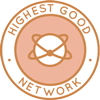 One Community is maximizing sustainable human potential through open source Highest Good Network® software that is a web-based application for collaboration, time tracking, and objective data collection. The purpose of the Highest Good Network is to provide software for internal operations and external cooperation. It is being designed for global use in support of the different countries and communities replicating the One Community sustainable village models and related components.
One Community is maximizing sustainable human potential through open source Highest Good Network® software that is a web-based application for collaboration, time tracking, and objective data collection. The purpose of the Highest Good Network is to provide software for internal operations and external cooperation. It is being designed for global use in support of the different countries and communities replicating the One Community sustainable village models and related components.
- Learn about our open source community collaboration and management software: The Highest Good Network
This week, the core team continued their work on the Highest Good Network PRs testing, confirming the fixed PRs and resolving several issues. They focused on HGN PR testing, confirming fixes for multiple issues, including the inability to create teams in the Teams feature, adding an invisibility indicator to the Teams page view, resolving load icon inconsistencies in the “Add New Project” feature for Safari, addressing cropping issues in the Team Calendar under Reports, updating the changes tracker to reflect time adjustments, enabling the deletion and re-adding of teams without saving, and correcting button spacing on mobile and tablet views. They also noted that the issue related to improving the loading time for the Total Team Report remained unresolved. Additionally, they logged hours for a Core Team account that exhibited a discrepancy in required hours when a Weekly Summary report was not submitted, contributing to PR #1141. They added a volunteer to a task with specified hours and reviewed an issue with the Edit Links window, requesting further details to replicate the problem. Lastly, they reported a bug concerning a one-day difference in end dates between the User Management and Reports pages. We continue to focus on maximizing sustainable human potential that works for everyone through iterative improvements and user-centric solutions. See the Highest Good Society and Highest Good Network pages for more on how this relates to maximizing sustainable human potential. The collage below shows some of their work.
ALPHA SOFTWARE DEVELOPMENT TEAM
The Alpha Team’s summary, covering their work on the Highest Good Network software software was managed by Lin Khant Htel (Frontend Software Developer) and includes Carlos Gomez (Full-Stack Software Developer), Nanguan Lin (Software Developer), Rupa Rajesh Bhatia (Software Engineer), and Sujith Reddy Sudini (Full-Stack Software Developer). The Highest Good Network software is how we will manage and measure our processes for maximizing sustainable human potential across our social architecture, construction, production, and maintenance processes. This week, Lin reviewed and approved PR #2929, gaining additional understanding of the codebase and testing the changes locally, with all five test cases passing. Lin also reviewed weekly summaries, photos, and videos submitted by Alpha team members and assigned new tasks to some team members based on project priorities.
Carlos resolved merge conflicts in FPR2855, FPR2772 and BPR1128, allowing Jae to successfully integrate both pull requests into the development branch, which will contribute to the overall project progress and functionality. Additionally, Jae requested Carlos’s expertise to collaborate on identifying opportunities to enhance the functionality and user experience of the dashboard components. Nanguan worked on unit tests for the WBS/WBSDetail/ImportTask/ImportTask.jsx component. The tests covered the rendering and behavior of the component, including the import button, modal, and file input. He discovered several errors and continued working on fixing them. Maximizing sustainable human potential is also prone to error that needs immediate fixing. He also edited the test file, making changes to functions that handle file selection, file reading, data validation, and uploading the imported tasks. Sujith is investigating a change on the specified page by identifying the modified element and tracking its code history to locate the PR associated with the update.
Rupa worked on styling and developing Pages 4, 5, and 6 in the multi-step form project, focusing on implementing user-friendly layouts and ensuring consistent design patterns through custom CSS. These pages incorporated dynamic form elements such as text inputs, checkboxes, and dropdown menus, with React-controlled components managing state changes to enhance user interaction. Navigation between these pages was established using React Router to ensure a smooth user experience and maintain state integrity across components. Rupa also focused on handling form validation logic and refining user input handling for better responsiveness. Additionally, Rupa reviewed summaries and Dropbox as part of managerial responsibilities, analyzing workflows and identifying strategies to improve operational efficiency. Rupa also reviewed Lin’s summary for training and learning purposes to identify patterns and techniques for technical improvement. See the Highest Good Society and Highest Good Network pages for more on how this relates to maximizing sustainable human potential. View some of the team’s work in the collage below.
BINARY BRIGADE SOFTWARE DEVELOPMENT TEAM
The Binary Brigade Team’s summary overseeing advancements in the Highest Good Network software was managed by Vijay Anand Pandian (Full Stack Software Engineer) and includes Aaryaneil Nimbalkar (Software Developer), Anirudh Sampath Kumar (Software Developer), Ashish Nagaraju (Software Engineer), Deepthi Kannan (Software Engineer), Sandhya Adavikolanu (Software Developer), Sriram Seelamneni (Software Engineer), Xiaolu Li (Software Engineer) and Ziyu Chu (Volunteer Software Engineer). The Highest Good Network software is how we’ll be managing and objectively measuring our process for maximizing sustainable human potential through our social architecture, construction, production, and maintenance processes.
This week, Aaryaneil focused on managing organization members using the GitHub API, concentrating on understanding the API’s capabilities through documentation review and initial coding within a test project. His activities included setting up CRON jobs to automate API calls for tasks such as user removal and adding test cases to validate processes like sending invitations to specific usernames and removing users from the organization. He made progress on integrating these functions into the backend, with efforts continuing to configure a CRON job to execute every alternate day for removing inactive users. Generally, active participation in maximizing sustainable human potential.
Anirudh worked on reviewing and testing several pull requests in the Highest Good Network App repository, including PRs #2890, #2891, #2893, #2894, #2895, #2903, #2909, #2910, #2913, and #2921. His efforts included verifying functionality, assessing code quality, and identifying potential improvements. He also addressed bugs assigned to him, including resolving an appearance issue with the date picker in the Add/Edit modal on the WBS page of the Project, which arose after a prior fix for validation issues in the start/end date fields. Maximizing sustainable human potential must be seen, and this is influenced by aesthetics. This was addressed by implementing necessary adjustments and raising a new pull request. Additionally, he worked on an ongoing bug related to the active/inactive status on the user management page, where the status does not update immediately upon change and requires a page refresh to reflect updates.
Ashish worked on Bug 37 from the ‘Projects/Teams/Tasks/WBS’ component, addressing an issue where users could assign a start date later than the end date while adding or editing a task. During the process, he encountered a problem with the assigned end date not persisting. He resolved the issue and submitted a pull request (PR 2927) to the frontend repository. Deepthi resolved merge conflicts for PR #2838 related to the UI of the Teams page, worked on improving the Weekly Summaries page with input from Jae, and began looking into a bug on the User Management page. She also reviewed and followed up on ongoing pull requests to ensure progress toward completion. Maximizing sustainable human potential also needs effective follow-ups.
Sandhya addressed challenges in the HGN Software Development project, including a login issue causing errors on the frontend despite successful backend operation. She investigated potential causes, including API communication and CORS conflicts, and verified the MongoDB connection by updating ensureIndex to createIndexes. Concurrently, she improved the weekly reporting system by implementing date validation, modular helper functions, and MongoDB integration for efficient data operations. Sandhya also enforced permission validations on sensitive endpoints and introduced structured error-handling mechanisms, enhancing security, usability, and scalability for future improvements. Sustainability is achievable by maximizing sustainable human potential. Sriram focused on resolving merge conflicts in an older pull request to prepare it for merging, addressing lingering issues that were not properly resolved in earlier attempts. He completed three unit tests as part of an assigned task and made progress on sorting-related issues for the inventory section on the projects page.
Vijay completed unit test implementations for the weeklySummaries Reducer (PR #2913) and the weeklySummariesReport Reducer (PR #2932) as part of the HGN software project. He also resolved merge conflicts for two pull requests addressing UI issues: one involving table search functionality on narrow screens (PR #2473) and another fixing various component display issues on screens smaller than 767px (PR #2684). Even in maximizing sustainable human potential, conflicts may exist and should be handled with care. Additionally, he worked on implementing further unit tests for the weeklySummariesReport Reducer to enhance test coverage and maintain project stability. Xiaolu completed unit tests for the WeeklySummariesReport/PasswordInputModal.jsx component.
Xiaolu verified that the title, input field, authorize button, and cancel button rendered as intended, the eye icon toggled password visibility, and the onClose function triggered upon clicking the cancel button, and checked that entering the correct password called checkForValidPwd, set the authorized password, displayed a message indicating success, and closed the modal. Xiaolu placed code images and a weekly summary video in a designated folder for review. Ziyu began working on writing unit tests for a component: Warnings/Warnings.jsx. She created four test cases to ensure the functionality and reliability of the component. These four tests passed on her local machine. Following this, Ziyu submitted a pull request and is now ready for review. See the Highest Good Society and Highest Good Network pages for more on how this relates to maximizing sustainable human potential. View some of the team’s work in the collage below.
BLUE STEEL SOFTWARE DEVELOPMENT TEAM
The Blue Steel Team’s summary, presenting their work on the Highest Good Network software was managed by Howie Miao (Software Engineer, Team Manager) and includes Jingyi Jia (Software Engineer), Dieu-Anh Trinh (Software Engineer), Ramakrishna Aruva (Software Engineer), and Supriya Sudini (MERN Stack Developer). The Highest Good Network software is how we’ll be managing and objectively measuring our process for maximizing sustainable human potential through our social architecture, construction, production, and maintenance processes. This week, Ramakrishna explored the project’s bug tracker to identify new contributions after completing his assigned tasks. He selected two issues aligned with his skills, focusing on developing a feature to generate a PDF version of a badge and addressing user management issues. After completing a detailed review of the codebase, analyzing data flow, and identifying potential bottlenecks, he experimented with various approaches to optimize functionality and integrate solutions into the system.
Dieu-Anh updated the unit testing spreadsheet by creating a new version due to lack of editing access to the original. She identified inconsistencies in the “Has Unit Tests” column, recommending standardized values of “Yes,” “No,” and “Done,” and adjusted the font size across the spreadsheet to ensure consistency. She also noted missing links to PRs for unit tests marked as “done” in several areas, including components, reducers, and actions, while backend tests had complete links. Well established links are important in maximizing sustainable human potential. Supriya developed a “not found” page component featuring an image and text designed for both dark and light modes. She organized the images in the assets/images directory within the project’s src folder and refined the CSS for alignment, padding, and color coordination. Additionally, she integrated a link to the homepage, enhancing user navigation and the overall interface. Jingyi resolved merge conflicts for her pending pull request #2804 and fixed the bug in pull request, PR #2890, for the feature adding an intangible time reminder/confirmation modal.
This modal aims to enhance compliance with time-tracking requirements by prompting users to confirm the nature of their time entries. Howie returned midweek from vacation and was tasked by Jae with taking over management of the Blue Steel group. He focused on organizing and reviewing management tasks and addressed a bug involving the clearing of the insert image link on the send emails board, with plans to submit a pull request for this fix next week. See the Highest Good Society and the Highest Good Network pages to learn more on how their work contributes to maximizing sustainable human potential. See below to view images of their work.
CODE CRAFTERS SOFTWARE DEVELOPMENT TEAM
The Code Crafters Team, covering their work on the Highest Good Network software, was managed by Summit Kaushal (Backend Software Developer) and includes Ashrita Cherlapally (Software Engineer), Dhrumil Dhimantkumar Shah (Software Engineer), Humera Naaz (MERN developer), Muhideen Mustapha (Software Engineer), Pavan Swaroop Lebakula (Software Engineer) and Swaroop Udgaonkar (Software Engineer) The Highest Good Network software is how we’ll manage and objectively measure our process for maximizing sustainable human potential through our social architecture, construction, production, and maintenance processes.
This week, Swaroop pulled recent changes from repositories to resolve placement issues in files related to people, teams, and project lists, ensuring that no merge conflicts existed. Updates were made to the UserProfile infringements feature to incorporate an array of responses, and the code was prepared for submission to the repository. Additionally, he reviewed the team’s outputs, including photos, videos, and summaries, to confirm consistency and monitor progress across tasks. Summit worked on addressing an issue with the streak logic related to xhoursxweek, implementing changes to resolve cases where badgeOfType was undefined. Maximizing sustainable human potential is also very dynamic and is essential for constant adjustment changes. During the process, additional issues with the logic were identified, and efforts to address them are ongoing. He also investigated a problem where the 30-hours-in-x-weeks badge was being removed when the 40-hours-in-x-weeks badge was assigned, making adjustments to the logic and testing the changes as part of working toward a resolution.
Humera tested the Export Featured button to verify its functionality in saving badges accurately and ensuring the feature performed as designed. Additionally, she worked on implementing team lead functionality for X members, focusing on the process of awarding badges. This included addressing issues related to the myTeam schema error, providing support to maintain task progress, and contributing to the team’s alignment with project objectives. Pavan worked on enhancing the User Management page by adding a “Title” column and streamlining the “Role” column. The tasks involved implementing a frontend interface to fetch and display data in the updated table structure, as well as modifying backend query attributes to retrieve job title information for users. An issue was encountered in correctly integrating the retrieved data into the table on the frontend, and efforts to resolve this are ongoing within the scheduled timeline. Screenshots showcasing the progress have been shared for reference.
Muhideen focused on testing the functionality of various badges and developing a feature to display badges assigned to users based on their roles. Progress included designing a table or statistical representation to show the number of users associated with each badge, incorporating features similar to total summary reports. Maximizing sustainable human potential also needs effective ways of reporting. Additional functionality was added to display a list of users when hovering over a specific badge. Work also involved creating a feature to retrieve all badges, implement a multi-select option on the page, and generate a chart distribution for the selected badges.
Ashrita worked on implementing the “Display badges assigned to all users” feature, focusing on enabling the functionality to check multiple badges simultaneously and developing a statistical pie chart to represent the badge list. The work involved making necessary code changes, refining the user interface for badge display, and addressing minor bugs identified during testing to ensure seamless integration with the existing system. Additionally, she reviewed the logic behind badge assignment and implemented improvements to enhance the performance of the badge retrieval process, progressing toward the full implementation of the task. Dhrumil worked on task 246, focusing on addressing an error in the test file, with the task anticipated to be completed next week. Another task remains pending, awaiting clarification on a small doubt, and progress on this task will commence once the doubt is resolved. See the Highest Good Society and Highest Good Network pages for more on how this relates to maximizing sustainable human potential. View some of the team’s work in the collage below.
DEV DYNASTY SOFTWARE DEVELOPMENT TEAM
The Dev Dynasty Team’s summary, covering their work on the Highest Good Network software, was managed by Jatin Agrawal (Software Engineer) and includes Fangle Xi (Software Engineer), Mrinalini Raghavendran (Software Engineer), Nikita Kolla (Full Stack Developer), Nishita Gudiniye (Software Engineer), and Shreya Vithala (Software Engineer). The Highest Good Network software is how we’ll manage and objectively measure our process for maximizing sustainable human potential through our social architecture, construction, production, and maintenance processes.
This week, Fangle began working on creating the test Meta API using her own account. She wrote some test code but was unable to complete it due to the need for a data deletion request callback and a data deletion description URL. She shared the corresponding requirements with the group to seek assistance. Additionally, she completed writing her self-introduction. Jatin created a pull request for a feature that adds a page to create custom forms for gathering questionnaire responses for various job positions at HGN. He developed the page using React, implementing functionality to generate dynamic elements of specific types upon button clicks. On the backend, he created models, controllers, and routes to enable CRUD operations for the forms. Maximizing sustainable human potential also works on well-crafted models.
Mrinalini outlined the backend and frontend requirements for several key features of the listing and bidding platform and created mockups for specific functionalities and pages. These included a Listings Homepage with pagination to display multiple listings, an individual Listing Overview page featuring high-quality images, descriptions, and amenities, and a Messaging System to enable communication between guests and hosts, complete with notifications for new messages. Communication is also necessary in maximizing sustainable human potential. She also defined a Location-Based Search feature with a search bar, auto-suggestions, and map-based results. Additionally, she worked on a Booking System incorporating date range selection, real-time price calculations, and a booking confirmation page. Mrinalini ensured that the requirements addressed potential challenges, including error handling, data validation, and user feedback. Nikita progressed on a project to create an auto-poster for Tumblr by researching Tumblr’s API library tool and applying this knowledge to design components. She made the text and image poster functional and shifted focus toward displaying all user posts within the app for centralized viewing.
Nishita set up a unit test framework and identified test cases required for ongoing tasks by reviewing the existing codebase for compatibility and pinpointing scenarios to validate functionality. She also revisited and sent for review previous API-related code changes designed to compare the number of users in a team against those not in a team, ensuring proper implementation and alignment with project requirements. Shreya focused on writing tests for the “Add Task Modal” component, tackling challenges with specific failing tests related to form field interactions, input validation, and action dispatch on submission. Using tools like React Testing Library and Redux Mock Store, she worked to ensure the modal’s functionality adhered to expected behaviors. See the Highest Good Society and Highest Good Network pages for more on how this relates to maximizing sustainable human potential. View some of the team’s work in the collage below.
EXPRESSERS SOFTWARE DEVELOPMENT TEAM
The Expressers Team’s summary, covering their work on the Highest Good Network software, was managed by Christy Guo (Software Engineer) and includes Faye Lyu (Software Engineer), Rahul Trivedi (Software Developer), Reina Takahara (Software Developer), Shreya Laheri (Software Developer), and Strallia Chao (Software Engineer). The Highest Good Network software is how we’ll manage and objectively measure our process for maximizing sustainable human potential through our social architecture, construction, production, and maintenance processes. This week, Christy focused on enhancing the ProjectTaskChart component in React. Faye focused on testing and resolving UI and functionality issues.
Rahul optimized the backend with MongoDB integration and improved UI rendering, resolving bugs across the codebase. Reina added features for deleting and searching tags, enhancing usability. Shreya finalized the phase 3 document, aligning it with project requirements and transitioning it to development. Strallia improved the Team Status chart, submitted backend updates, and identified data issues. See the Highest Good Society and Highest Good Network pages for more on how this relates to maximizing sustainable human potential. See the collage below to view the team’s work this week.
LUCKY STAR SOFTWARE DEVELOPMENT TEAM
The Lucky Star Team’s summary, covering their work on maximizing sustainable human potential, of the Highest Good Network software, was managed by Anne Zhang (Software Engineer) and includes contributions from Chetan Sunku (Software Engineer), Nikhitha Kalinga (Software Engineer), Samarth Bhadane (Software Engineer), T R Samarth Urs (Data Analyst), Shefali Mittal (Volunteer Software Engineer), Vaibhavi Madhav Deshpande (Software Engineer), Yashwanth Pokala (Software Engineer) and Ziyan Wang (Software Engineer). This week, Chetan continued working on the issue related to time updates against tasks on the dashboard, focusing on resolving the problem where logged time is not automatically reflected without a page reload. Despite seeking assistance in the coding channel group, no responses were received. Nikhitha addressed display issues with the delete badge options for screens under 1000px width in the profile section, resolved related merge conflicts, and worked on fixing failing tests tied to a pull request by analyzing logs and debugging errors. Samarth B completed the development of a user interface and backend for managing CC options for posting categories, jobs, and positions, incorporating features for managing CC lists, checking user activity, and assigning permissions for hiring roles at both category and individual ad levels. He also resolved linting issues in the SummaryBar code.
Samarth managed a PR review team, assessed their work, provided feedback, and summarized their efforts in a blog post, including a collage of submitted images. Shefali began work on creating an auto-poster for Twitter/X, reviewing PR details for context, requesting additional documentation, and researching open APIs for integration. Accurate documentation of steps is an effective way of maximizing sustainable human potential. Vaibhavi worked on action items and indexing for the HGN Phase III document, explored the development of deliverable 0, and began working on frontend routes for the new phase. Yashwanth completed and merged fixes for the “Error Labels on New User Form” bug, made progress on the “Fix Deleting a Badge Does Not Work as Expected” task pending additional input, and finished the “Remove Logging of Empty/Null Values into Permission Table” task, awaiting reviews before merging.
Ziyan reviewed Phase 2 Figma designs to identify outstanding development needs and bugs, updated corresponding tasks in shared documents, and revised the Phase 2 WBS Excel sheet to reflect current progress. Anne focused on resolving the member column filter bug, calculating active members per project but encountering a browser error (ERR_INSUFFICIENT_RESOURCES) when sorting the table. Attempts to use caching proved ineffective, and she plans to continue troubleshooting the issue. Additionally, Anne managed her team, Lucky Star, reviewed team photos and videos, and submitted weekly summaries. Learn more about how the Highest Good Society and Highest Good Network measures and assists in maximizing sustainable human potential in the Highest Good Network open source hub. See their work on the collage below.
MOONFALL SOFTWARE DEVELOPMENT TEAM
The Moonfall Team’s summary, covering their work on the Highest Good Network software was managed by Satya Shanthi Tadiparthi (Team Manager), and includes Bhavya Prakash (Software Engineer), Calvin Liu (PR Team), Newell Newell (PR Team I-N), Rachana Zha (Software Engineer), Saurabh Shetty (Software Engineer), Shashank Kumar (Software Engineer), Swathi Dharma Sankaran (Software Engineer), Vedant Gandhi (Software Engineer), and Yili Sun (Software Engineer).
This week, Bhavya shared updates with Sneka regarding a blockage on the Lead Badge issue and collaborated with Jae to explore potential solutions, including adding new functionalities to address the problem. Calvin worked on Bug 21, resolving issues with the “Add Intangible Time Entry” feature, addressed code conflicts in the Pull Request for Bug 16, and improved the stability of the Inventory Type List table and modal. Newell outlined proposals in a Project Security document, developed Terraform code for Azure deployment, and explored SSO options for workflow integration. Proposals are also important in maximizing sustainable human potential. Rachana focused on resolving a gzip bug by analyzing API data flow, researching best practices, and testing smaller components while debugging the userProfile API code.
Satya addressed layout and responsiveness issues in the Teams UI, updated components, and resolved a failing test case for PR #2736. Saurabh investigated synchronization issues in task progress and hour count updates, identifying inconsistencies and working toward real-time updates. Shashank finalized updates to the profile information tab and UI elements, added loading states, and prepared for a review from Jae before raising a pull request. Swathi outlined unit test cases for the Task.jsx component, resolved issues with team updates in the Teams table, and applied debugging changes to ensure proper functionality. Vedant focused on fixing a checkbox alignment bug, adjusted its placement, and raised a pull request while addressing a failing node test. Yili resolved a validation issue in the user profile system related to the “jobTitle” field, reproduced the bug, and worked to ensure consistent backend and frontend functionality. See the Highest Good Society and Highest Good Network pages for more on how this relates to maximizing sustainable human potential. Below is a collage for the team’s work.
REACTONAUTS SOFTWARE DEVELOPMENT TEAM
Reactonauts’ Team’s summary, covering their work on the Highest Good Network software, was managed by Vijeth Venkatesha (Software Engineer) and includes Dhairya Mehta (Software Engineer), Gmon Kuzhiyanikkal (Software Engineer), Haoyue Wen (Software Engineer), Jinxiong You (Software Engineer), Khushi Jain (PR Team I-N), Mohan Gadde (Software Engineer), Nikhil Pittala (Software Engineer), Pallavi Thorat (PR Team O-Sh), Peterson Rodrigues (Full-Stack MERN Stack Developer), Rishitha Mamidala (Software Engineer), Sharadha Shivakumar (Software Engineer).
This week, Dhairya worked on the “Fix Projects find user function” task, identifying the root cause of user discovery issues in the projects section. She implemented a sort and search function to optimize user assignment processes. Gmon focused on adding bell notifications for task deadlines and completed tasks related to active/inactive team numbers. Sticking to deadlines is also an enhanced way of maximizing sustainable human potential. She created a pull request (PR #2850), which is still in review, while another (PR #2609) is in final review.
Haoyue enhanced the Title Code functionality by allowing special characters and fixed a UI issue related to input field spacing. Jinxiong addressed bugs in the HGN Apps, including resizing the edit link window and fixing a malfunctioning update button. Khushi designed registration forms and feedback mechanisms, incorporating error, confirmation, and feedback messages aligned with branding guidelines to improve user experience. Mohan added features to filter active/inactive project statuses and adjusted CSS for layout consistency. Being consistent in action is important in maximizing sustainable human potential. He resolved an issue in the reducer. Nikhil reviewed 12 pull requests across front-end and back-end components, ensuring code quality and functionality. Pallavi tested pull requests to confirm improvements in functionality and resolved a usability issue in the Admin Dashboard’s Tasks Tab.
Peterson fixed a bug on the User Profile page related to date display after saving. Rishitha addressed blue square summary formatting issues and resolved date tag discrepancies. She started working on User Management page updates. Sharadha focused on resolving issues with weekly summaries and addressed layout problems with the “Ready for Review” button. Vijeth reviewed weekly summaries, hosted meetings, coordinated updates, and supported team members in troubleshooting bugs and resolving app slowdown issues. See the Highest Good Society and Highest Good Network pages for more on how this relates to maximizing sustainable human potential. Below is a collage for the team’s work.
SKYE SOFTWARE DEVELOPMENT TEAM
Skye Team’s summary covering their work on the Highest Good Network was managed by Rishabh Rao (Administrator) and Luis Arevalo (Software Engineer) and the team includes Abi Liu (Software Developer), Laura Cohen (Software Engineer), Sai Preetham (Full Stack Developer), Snehal Dilip Patare (Software Engineer) and Yao Wang (Software Engineer). The Highest Good Network software is how we’ll manage and objectively measure our process for maximizing sustainable human potential through our social architecture, construction, production, and maintenance processes.
This week, Abi worked on aggregating data for the volunteer reports overview page and resolved an issue with the volunteer trends query, ensuring it now returns data as expected. He refined the route and controller methods to improve their integration with the helper method, streamlining functionality and enhancing code maintainability. Laura focused on troubleshooting back-end authentication issues related to new user initialization functions. She accessed the database collections through MongoDB Compass to gain a clearer understanding of the API calls involved and revisited the front-end code for the permission change modal, exploring previously overlooked paths to retrieve role presets for maximizing sustainable human potential. Yao continued working on developing a LinkedIn post with media integration, addressing technical challenges related to media uploads and ensuring compatibility across different platforms. His efforts were directed toward optimizing user experience, troubleshooting issues with media rendering, refining upload functionality to support various file formats, and making adjustments to improve reliability based on compatibility concerns.
Preliminary testing feedback informed further iterations on the design and performance of the feature. Snehal reviewed the social media auto-poster for Facebook and Facebook groups, examined the social media scheduler document containing a flowchart, and created a list of requirements for the feature, including connecting to Facebook, sending announcements, blogs, or pictures, and integrating the feature with the “/announcement” service for content distribution. She also began researching APIs to enable the connection to Facebook for maximizing sustainable human potential. Sai Preetham worked on creating the “Tracking” button permission under a new “Tracking Management” category. He analyzed requirements, reviewed a provided video to clarify expectations, and ensured the implementation aligned with user needs. His work included exploring the existing permission structure to integrate the feature seamlessly with default access for Owners and Admins, assessing the impact on the dashboard, and outlining backend and frontend changes. He created a new branch to begin frontend development, updated the permissionsList to include the new category and permissions, modified the PermissionListItem component to render these permissions dynamically, and ensured integration with the permissions management system. Additionally, he worked on the weekly summary and Dropbox images for the week.
Luis continued working on creating new warnings. He incorporated Jae’s feedback by adding the warning items inside the modal and displaying users’ current warnings. During this process, he discovered that issuing warnings on the dashboard had broken, so he reverted his commit and created a new branch to troubleshoot the issue. He resolved the problem, integrated his updated code, and ensured that warnings were displayed correctly without allowing warnings to be issued from the user profile, restricting that functionality to the dashboard. See the Highest Good Society and the Highest Good Network pages to learn more about how their work contributes to maximizing sustainable human potential. See below for the work done by the group.
SOFTWARE PR REVIEW TEAM A-M
The PR Review Team’s summaries for team members’ names starting with A-M and covering their work on the Highest Good Network software was managed by Anoushka Hazari (Data Analyst). The Highest Good Network software is a foundation of what we’ll be using to measure our results for maximizing sustainable human potential. This week’s active members of this team were: Abdelmounaim Lallouache (Software Developer), Carl Bebli (Software Engineer), Kurtis Ivey (Full Stack Developer) and Lakshan Kandeepan (Software Developer). They reviewed all the Highest Good Network PRs (Pull Requests) shared in this week’s update. Learn more about how the Highest Good Network will measure and assist in maximizing sustainable human potential in the Highest Good Network open source hub. The collage below shows a compilation of the work from this team.
SOFTWARE PR REVIEW TEAM N-R
The PR Review Team’s summary for team members’ names starting with N-R and covering their work on the Highest Good Network software was managed by Saumit Chinchkhandi (Administrative Assistant and Software Engineer). The Highest Good Network software is a foundation of what we’ll be using to measure our results of maximizing sustainable human potential. This week’s active members of this team were: Nahiyan Ahmed (Full Stack Software Developer), Nathan Hoffman (Software Engineer), and Pratyush Prasanna Sahu (Software Engineer). They reviewed all the Highest Good Network PRs (Pull Requests) shared in this week’s update. Learn more about how the Highest Good Network measures and assists in maximizing sustainable human potential in the Highest Good Network open source hub. The collage below shows a compilation of the work from this team.
SOFTWARE PR REVIEW TEAM Sh-Z
The PR Review Team’s summary for team members’ names starting with Sh-Z and covering their work on the Highest Good Network software was managed by Olawunmi “Ola” Ijisesan (Administrative and Management Support) and Samarth Urs (Administrative Assistant and Data Analyst). The Highest Good Network software forms the foundation for measuring our results in maximizing sustainable human potential. This week’s active members of this team were: Samman Baidya (Software Engineer) and Shraddha Shahari (Software Engineer). They reviewed all the Highest Good Network PRs (Pull Requests) shared in this week’s update. Learn more about how the Highest Good Network will measure and assist in maximizing sustainable human potential through the Highest Good Network open-source hub. The collage below shows a compilation of the work from this team.
AND WE PRODUCED THIS WEEKLY UPDATES BLOG – CLICK HERE TO SUBSCRIBE
FOLLOW ONE COMMUNITY’S PROGRESS (click icons for our pages)
INVESTOR PAGES
GET INVOLVED
One Community Welcomes Sai Venkatesh Voruganti to the Software Development Team!
Posted on December 4, 2024 by One Community Hs
One Community welcomes Sai Venkatesh Voruganti to the Software Development Team as our newest Volunteer/Consultant!
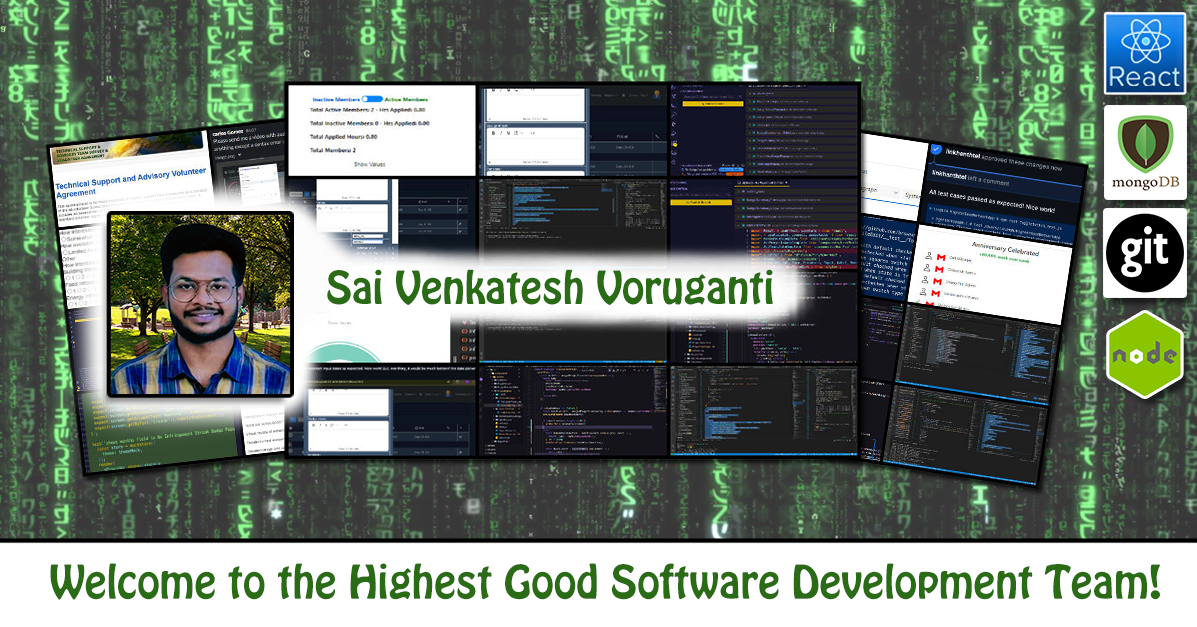
Sai Venkatesh is currently pursuing an M.S. in Computer Science at Illinois Institute of Technology, with a GPA of 3.66. With a solid foundation in mobile application development, full-stack development, and cloud computing, he has a proven track record in software development, database management, and dynamic UI/UX design. Sai Venkatesh is proficient in languages and frameworks like Python, Java, Flutter, and React, and skilled in tools such as AWS, VMware, and Microsoft Project. He has applied his expertise in roles such as System Engineer at Tata Consultancy Services, where he improved system reliability and user experience. At One Community, Venkatesh has contributed to the development of a Highest Good Network software application using the MERN stack, enhancing functionality, debugging and ensuring high availability and reviewing PR’s.
WELCOME TO THE TEAM SAI VENKATESH!
FOLLOW ONE COMMUNITY’S PROGRESS (click icons for our pages)
INVESTOR PAGES
GET INVOLVED
One Community Welcomes Sriram Seelamneni to the Software Development Team!
Posted on December 4, 2024 by One Community Hs
One Community welcomes Sriram Seelamneni to the Software Development Team as our newest Volunteer/Consultant!
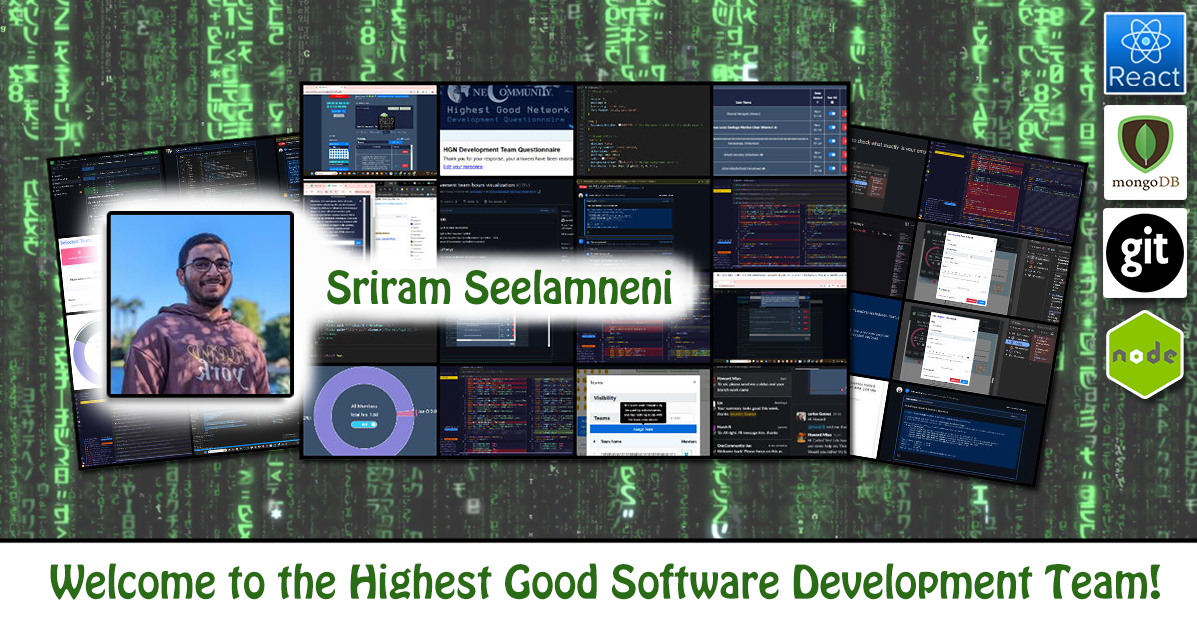
Sriram is an alumnus of Michigan State University with a passion for creating innovative products that tackle complex problems and positively impact people. He specializes in full-stack development, focusing on technologies such as React.js, Python, C++ and integrating machine-learning/AI infrastructure. Sriram thrives in collaborative environments, where he works with large teams to develop new features and provide effective solutions. As a member of the One Community team, Sriram has contributed to the open-source Highest Good Network software both as an engineer and as a manager, completing multiple features that enhance user experience and resolve critical bugs. Through his involvement in pull request reviews, Sriram provides constructive feedback that improves code quality and overall product performance.
WELCOME TO THE TEAM SRIRAM!
FOLLOW ONE COMMUNITY’S PROGRESS (click icons for our pages)
INVESTOR PAGES
GET INVOLVED
One Community Welcomes Anusha Tariq to the Graphic Design Team!
Posted on December 3, 2024 by One Community Hs
One Community welcomes Anusha Tariq to the Graphic Design Team as our newest Volunteer/Consultant!
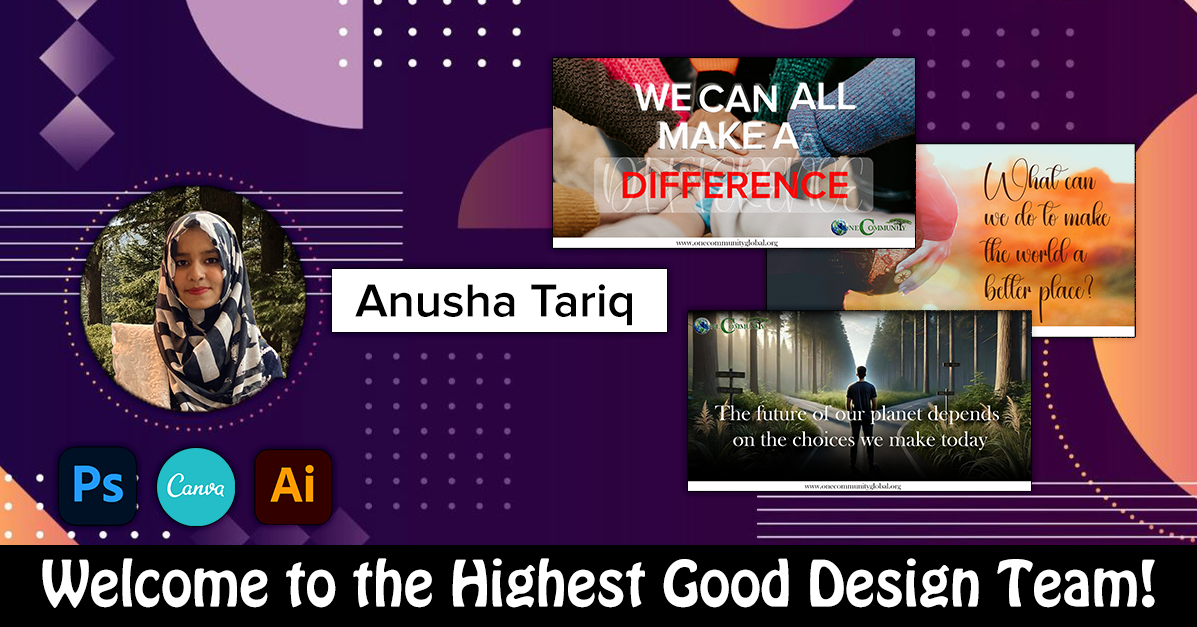
With over 4 years of international experience, Anusha has excelled in delivering innovative and impactful solutions across diverse creative projects. Her work demonstrates a strong ability to adapt to dynamic challenges, merge strategic thinking with artistic vision, and bring complex concepts to life. Anusha’s dedication to excellence has been recognized on a global scale, including her collaboration with UNDP, where she contributed to high-profile initiatives promoting social impact. As part of the Highest Good Network, Anusha has applied her expertise to create compelling visual narratives that align with the organization’s mission, further showcasing her commitment to leveraging creativity for meaningful and sustainable change.
WELCOME TO THE TEAM ANUSHA!
FOLLOW ONE COMMUNITY’S PROGRESS (click icons for our pages)
INVESTOR PAGES
GET INVOLVED
Maximizing Eco-potential – One Community Weekly Progress Update #611
Posted on December 2, 2024 by One Community Hs
At One Community, we are maximizing eco-potential in a way that will regenerate our planet and create a world that works for everyone. Our all-volunteer team is focused on sustainable approaches to food, energy, housing, education, economics, and social architecture. By open sourcing and freely sharing sharing the complete process, we aim to build a self-replicating model that inspires a global collaboration of teacher/demonstration hubs, all for “The Highest Good of All.” Together, we are evolving sustainability and fostering global stewardship practices that promote fulfilled living and lasting impact.
- Here’s our project overview on maximizing eco-potential
- Here’s our world-change methodology
- Here’s how this becomes self-replicating
- Here’s how we are open source and free-sharing all the do-it-yourself designs
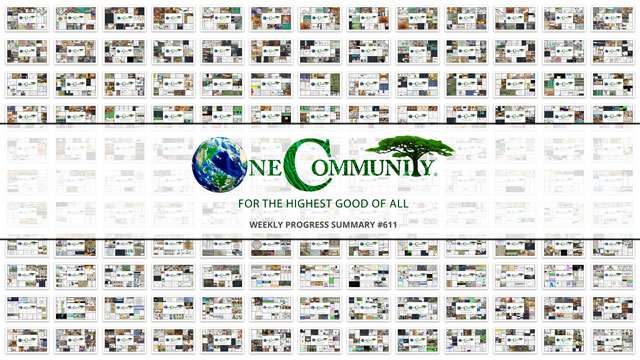
OUR MAIN OPEN SOURCE HUBS
Click on each icon to be taken to the corresponding Highest Good hub page.
One Community’s physical location will forward this movement as the first of many self-replicating teacher/demonstration communities, villages, and cities to be built around the world. This is the December 2, 2024 edition (#611) of our weekly progress update detailing our team’s development and accomplishments:
Maximizing Eco-potential
One Community Progress Update #611
DONATE | COLLABORATE | HELP WITH LARGE-SCALE FUNDING
CLICK HERE IF YOU’D LIKE TO RECEIVE AN EMAIL EACH WEEK WHEN WE RELEASE A NEW UPDATE
YOU CAN ALSO JOIN US THROUGH SOCIAL MEDIA
ONE COMMUNITY WEEKLY UPDATE DETAILS
HIGHEST GOOD HOUSING PROGRESS
 One Community is maximizing eco-potential through Highest Good housing that is artistic and beautiful, more affordable, more space efficient, lasts longer, DIY buildable, and constructed with healthy and sustainable materials:
One Community is maximizing eco-potential through Highest Good housing that is artistic and beautiful, more affordable, more space efficient, lasts longer, DIY buildable, and constructed with healthy and sustainable materials:
- Learn about maximizing eco-potential: Our Upcoming Crowdfunding Campaign
- Learn about the different village models: 7 Sustainable Village Models
- Visit the open source portals for the first two: Earthbag Village OS Hub | Straw Bale Village OS Hub
This week, Adefola (Fola) Madehin (Electrical Design Specialist) continued his work with Earthbag Village electrical designs. Fola completed the lighting circuit and cable wiring for the ground floor of the Earthbag 4 Dome Village project. Switches were positioned and connected to the wiring for the lighting fixtures, aligning with the electrical design. The lettering for the electrical circuit was finalized for use in the schematic diagram for the distribution board design. The Earthbag Village is the first of 7 to be built as the housing component of One Community’s open source model for maximizing eco-potential. See some of his work in the collage below.
Adil Zulfiquar (Engineer) continued working on the Vermiculture Toilet engineering designs. His work centered on updating the Safety Guidelines for Operating Electric Utility Vehicles (EUVs) and Utility Trailers. A new section was added to the EUV guidelines to address critical operational challenges, including detailed instructions with visuals to support safe practices. The Utility Trailer guidelines were updated with new illustrations and sketches emphasizing safety concerns like load distribution and stability controls. The Earthbag Village is the first of 7 to be built as the housing component of One Community’s open source model for maximizing eco-potential. See below for some of the pictures related to work.
Charles Gooley (Web Designer) continued working on the Aircrete Engineering and Research: Compression Testing, Mix Ratios, R-value, and More page. Charles worked on refining the Open Source DIY Earth Dam Design & Construction for Water Retention, Pond & Lake Creation tutorial important in maximizing eco-potential. The updates included correcting typographical and grammatical errors and adding new sections to improve the tutorial’s content. The document provides guidance on constructing small to medium-scale earth dams for uses such as irrigation, aquaculture, recreation, and ecosystem restoration. Aircrete is an alternative we’re exploring for the Earthbag Village, a foundational part of One Community’s open-source model for maximizing eco-potential. Take a look at some of the work in the images below.
Karthik Pillai (Mechanical Engineer) continued helping finish the Vermiculture Toilet engineering and helping with the Earthbag Village 4-dome home roof plan. Karthik focused on the cluster roof project, identifying suitable beam dimensions to maintain deflection under one inch and discussing with Michaela the possibility of using a larger beam to support the central section of the roof structure. Progress was also made on the vermiculture project, with the final design completed and plans to review it with Jae for potential modifications or enhancements. The Earthbag Village is the first of 7 to be built as the housing component of One Community’s open source model for maximizing eco-potential. See the work in the collage below.
Manjiri Patil (Mechanical Design Engineer) started helping with the engineering details for the Ultimate Classroom part of the Highest Good Education component. Manjiri reviewed the wind load calculations, providing feedback on the methodology and results while verifying the accuracy of equations and ensuring compliance with ASCE 7-16 standards and California codes. She assessed the report’s structure and clarity, recommending improvements such as incorporating diagrams and simplifying complex sections to enhance its visual presentation and readability. The One Community model of combining forward-thinking education with sustainably built classrooms like this is an excellent example of maximizing eco-potential. This approach exemplifies maximizing eco-potential by creating environments fostering collaboration and innovation. See the collage below for his work.
Michaela Silva (Architect) continued working on the interior details for the Earthbag Village 4-dome home design. Michaela facilitated an MEP coordination meeting and updated the primary bedroom layout in the Revit model, incorporating necessary drawing adjustments based on the changes. She also began developing a detailed 3D model representing each earthbag layer and the main structural roof, which will serve as the basis for analyzing the structural frame of the roof. The Earthbag Village is the first of 7 villages to be built as part of One Community’s open source model for maximizing eco-potential. See her work in the collage below.
DUPLICABLE CITY CENTER PROGRESS
 One Community is maximizing eco-potential through a Duplicable and Sustainable City Center that is LEED Platinum certified/Sustainable, can feed 200 people at a time, provide laundry for over 300 people, is beautiful, spacious, and saves resources, money, and space:
One Community is maximizing eco-potential through a Duplicable and Sustainable City Center that is LEED Platinum certified/Sustainable, can feed 200 people at a time, provide laundry for over 300 people, is beautiful, spacious, and saves resources, money, and space:
- Learn about this building and it’s function: Duplicable City Center Open Source Hub
This week, Arnob Mutsuddi (Mechanical Engineer) continued working on the Duplicable City Center structural engineering model and details. He worked on the design for the row 6-1 hub connector was completed, and two additional variants of the connector for row 6 were identified, initiating work on the row 6-2 hub connector. Progress continued on the row 6-2 hub connector, with the middle ring and five side struts designed. Work began on aligning the side struts with the middle ring while adhering to GD&T requirements, and the alignment of three side struts was completed. The Duplicable City Center is a foundational part of One Community’s open-source model, which excels in the mission of maximizing eco-potential. This approach is integral to their mission of maximizing eco-potential through innovative and scalable solutions. See some of this work in the pictures below.
Chris Blair (GIS Technician/Horticulturist) continued working with GIS data as part of One Community’s Permaculture Design that includes the location of the Duplicable City Center. He worked with GIS data as part of One Community’s Permaculture Design critical in maximizing eco-potential. Using scaled footprints of the villages and city center, he analyzed and placed them in locations on the property based on slope and solar aspects. Chris completed maps showing the original village locations and proposed relocation suggestions and integrated these maps into a Google document, adding text and shapes for additional context. Within One Community’s open-source framework, the Duplicable City Center plays a central role in maximizing eco-potential. The images below showcase some of this work.
Faeq Abu Alia (Architectural Engineer) continued his work on the Duplicable City Center kitchen. He focused on refining the Duplicable City Center kitchen model in SketchUp, resolving design issues, and incorporating feedback to enhance its quality. He added human figures to provide a realistic scale and perspective. Giving life to designs makes maximizing eco-potential real and achievable. In Lumion, he fine-tuned materials, added more human figures, and created three walkthrough paths showcasing the kitchen. Additionally, Faeq started rendering the walkthrough video, a process expected to take over 200 hours, to ensure a high-quality visual presentation that aligns with project standards. The Duplicable City Center represents a fundamental element of One Community’s open-source approach, dedicated to the mission of maximizing eco-potential. View examples of this work in the pictures provided below.
Mohammed Maaz Siddiqui (Mazz) (Architect) continued working on the outdoor landscape areas for the Duplicable City Center project. He worked on enhancing the front landscape area of the Duplicable City Center by updating the design file to include additional plants and trees, improving the scene’s visual coherence. The incorporation of natural vegetation in designs like a pointer to maximizing eco-potential. He replaced trees that were unsuitable for the overall landscape and California’s climate and modified the soil to natural grass instead of mowed carpet grass. Additional details were incorporated into the design to enrich the overall appearance. Maaz also organized the layout for a test walkthrough, optimizing camera angles to effectively showcase the landscape, and concluded by rendering the video to produce the final output. Within One Community’s open-source framework, the Duplicable City Center plays a central role in the mission of maximizing eco-potential. The images below showcase some of this work.
Nimika Devi (Architect) continued her contributions to the landscape design and development of the Duplicable City Center‘s urban farm. Plants were reorganized and replaced based on the approved site plan to align with the project’s vision of maximizing eco-potential. Edible flowers, fruit-bearing trees, and a broader variety of vegetable plants were introduced to enhance the farm’s utility and aesthetic appeal. Due to limitations in the software library, chickens and hens were substituted with alternative bird species to simulate the intended visual and functional elements of the design while addressing resource constraints. Within One Community’s open-source framework, the Duplicable City Center plays a central role in the mission of maximizing eco-potential. The images below showcase some of this work.
Nika Gavran (Industrial Designer) continued with her work on the Duplicable City Center dormer window installation plans. She focused on expanding the final document for the dormer window instructions, continuing to implement changes based on feedback. Maximizing eco-potential is achievable based on either positive or negative feedback. One key update involved adjusting the roof of the dormer to have a greater slope, which required setting up and completing new renders reflecting this modification. She prepared these renders for integration into the presentation’s graphic layout. Additionally, she began a new page providing a more detailed description of how to cut the rock wool insulation. As a foundational component of One Community’s open-source strategy, the Duplicable City Center is designed with the mission of maximizing eco-potential. The images below showcase some of this work.
Rudrani Sravya Mukkamala (Mechanical Engineer) continued researching the structural components of a hydraulic elevator, focusing on the framework, guide rails, and load-bearing elements. Researching on different components and cases makes maximizing eco-potential vision attainable. She focused on the design of the guide rails and elevator car subassemblies for their DIY hydraulic elevator project. Sravya analyzed key design aspects of the guide rails and elevator car subassemblies, considering factors critical to their functionality and integration. A detailed design plan was created to outline the process, ensuring that insights gained from designing the guide rails and elevator car would inform the development of subsequent subassemblies. This step-by-step approach aims to streamline the overall design and facilitate iterative improvements. Within One Community’s open-source framework, the Duplicable City Center plays a central role in the mission of maximizing eco-potential. The images below showcase some of this work.
Tasmia Hasan (Design Engineer) continued with her work on the structural engineering of the Duplicable City Center. She worked on the ring formation of the design, focusing on adjusting the angles of the hub connectors to improve alignment. She also began laying out the second row of the structure, ensuring consistency with the initial design specifications. Additional efforts included refining the connection points to enhance structural stability and preparing for the integration of subsequent rows. As a foundational component of One Community’s open-source strategy, the Duplicable City Center is designed for the mission of maximizing eco-potential. You can see examples of this work in the following images.
Umema Ali (Mechanical Design Engineer) continued working on the Duplicable City Center Engineering. She worked on the static structural analysis of a new dome structure, focusing on snow loads of 20 and 30 pounds. Using Inventor, she evaluated the displacement and stress values caused by a uniformly distributed load across the structure. The analysis aimed to assess the structural integrity of the dome under varying snow load conditions and identify any potential areas of concern. Within One Community’s open-source framework, the Duplicable City Center plays a central role in the mission of maximizing eco-potential. The images below showcase some of this work.
HIGHEST GOOD FOOD PROGRESS
 One Community is maximizing eco-potential through Highest Good food that is more diverse, more nutritious, locally grown and sustainable, and part of our open source botanical garden model to support and share bio-diversity:
One Community is maximizing eco-potential through Highest Good food that is more diverse, more nutritious, locally grown and sustainable, and part of our open source botanical garden model to support and share bio-diversity:
- Learn about the structures maximizing eco-potential: Hoop House Hub | Aquapini & Walipini Open Source Hub
- See what we’ll be growing: Gardens & Hoop Houses | Large-scale Structures | Food Forest | TA
This week, the core team continued the review of the Apiary and portions of the Earthbag Tools, Equipment, and Material/Supplies lists. They also reviewed the electrical plan for the Earthbag Village, examining individual circuits and suggesting uniform wire gauges and appropriate breaker amperes. An electrical reassessment will be performed for the 4-dome cluster, and the bathroom layout was also addressed by suggesting an alternative location and outlining the rationale for the proposed change, outlined as part of One Community’s open source model for maximizing eco-potential. See below for some of the pictures related to this work.
And the core team continued their work on the Chicken Coop Step-by-Step building instructions document, updating images for specific walls on various pages. We continue to focus on maximizing eco-potential that works for everyone through iterative improvements and user-centric solutions. See the Highest Good Society and Highest Good Network pages for more on how this relates to maximizing eco-potential. The collage below shows some of their work.
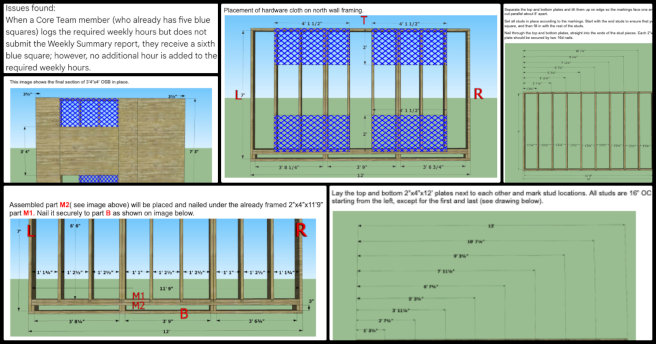
Jay Nair (BIM Designer) continued working on Aquapini and Walipini Planting and Harvesting lighting and HVAC design. He focused on advancing the greenhouse design by resolving challenges encountered during the heat load analysis in Revit and addressing software limitations and errors. Addressing the challenges is important in maximizing eco-potential. Research into alternative methods for performing the analysis was undertaken to achieve accurate results aligned with the greenhouse’s requirements. A work breakdown structure (WBS) was developed for HVAC and plumbing designs to facilitate task assignments and project planning. The Highest Good Food initiative is a key component of One Community’s open source plans, focused on maximizing eco-potential, and exemplifies the organization’s commitment through innovative design and implementation. Below are some of the images showcasing this work.
Silin Wang (Landscape Designer) continued rendering work for Aquapini and Walipini Planting and Harvesting #2: Tropical Moist House. She searched for edible aquatic plant models that were not available in the Lumion asset library and created custom models to supplement them. Silin then arranged these accurate, high-quality plant models within the planting beds in the aquatic zones on both sides. While preparing the rendering documentation for the Highest Good Food initiative, focused on maximizing eco-potential, she identified discrepancies between some models and the CAD drawings, along with design flaws that could hinder circulation within the space, prompting her to propose potential optimization suggestions. Her work is showcased in the collage below.
Syahrina Maulida Majid (Nutritionist) continued working on creating menu implementation tutorials as a part of One Community’s Transition Food Self-Sufficiency Plan. She worked on menu implementation by refining and testing the master recipe template, and important in maximizing eco-potential. She developed step-by-step instructions for a tutorial to guide users on data input, adapting the template to different dietary needs, and interpreting its outputs. Observations from earlier testing were integrated to address potential challenges and enhance the tutorial’s clarity. Additionally, she documented examples to provide practical context, ensuring the tutorial is accessible and applicable to a variety of users. The Highest Good Food initiative plays a crucial role in One Community’s open source plans to maximizing eco-potential. Her work is showcased in the collage below.
Vatsal Tapiawala (Mechanical Engineer) continued working on integrating ideas from Paul Wheaton’s “Truly Passive Greenhouse” designs into the Aquapini/Walipinis structures. The incorporation of Aquapini is essential to maximizing eco-potential. He focused on analyzing the heating and cooling loads for Walipini 1. He performed a comparative study of the peak loads under various scenarios to understand the thermal performance of the structure. In addition to the analysis, Vatsal initiated sketches for the next phase, focusing on the “Earth on Roof” design. The Highest Good Food Initiative is a key component of One Community’s open source plans, focused on maximizing eco-potential. See his work in the collage below.
Ziyi Chen (Landscape Designer) continued working on the design of the outdoor spaces for the Aquapini/Walipinis structures. She completed most of the layout for the fruit tree area and the corner rest area. In the fruit tree area, she used a variety of fruit trees for the canopy layer, while different types of berries, including raspberries and blueberries, were planted in the lower layer to improve both food and aesthetic appeal. The planting design also included wider spacing between the plants to allow easier access and harvesting. In the rest area, low-growing berries were placed between the plants and architectural structures. The Highest Good Food initiative is a key component of One Community’s open source plans, focused on maximizing eco-potential. See her work in the collage below.
HIGHEST GOOD ENERGY PROGRESS
 One Community is maximizing eco-potential through Highest Good energy that is more sustainable, resilient, supports self-sufficiency and includes solar, wind, hydro and more:
One Community is maximizing eco-potential through Highest Good energy that is more sustainable, resilient, supports self-sufficiency and includes solar, wind, hydro and more:
- Learn about the open source sustainable-energy foundations: Solar, Hydro, and Wind
- Explore our research into the most sustainable products and companies for saving water and energy: Insulation, Eco-laundry, Lightbulbs and Light Bulb Companies, Doors and Door Companies, Windows and Window Companies, Toilets, Faucets and Faucet Accessories, Urinals, and more. The resource conservation employed here is maximizing eco-potential.
This week, Muhammad Sarmad Tariq (Electrical Engineer) continued helping finish the Highest Good energy component and evaluating grid-tie vs off-grid solar design. Sarmad reviewed literature and publications within the IEEE spectrum related to economic comparisons of grid-tie versus off-grid solar PV systems. He focused on several Net Present Cost evaluations from past studies. Maximizing eco-potential must therefore be sensitive to the cost and other resource required. One publication compared off-grid and on-grid PV systems for a 1000 Wp residential system, and Sarmad analyzed the methodology used in this study. Based on this analysis, he determined that a grid-connected PV system costs 1,244 IDR/kWh, while an off-grid PV system costs 4,644 IDR/kWh, indicating that off-grid systems are more expensive. The methodology and results are summarized in the document titled: Sarmad and One Community Collaboration & WBS Complete Grid-tie vs Off-grid Cost Analysis and Rollout Report. Further studies on additional methodologies will continue in the coming weeks. The team has made good progress within One Community’s open-source framework, with the Duplicable City Center plays a central role in maximizing eco-potential. Take a look at some of this work in the images below.
Vatsal Hitendra Shah (Volunteer Engineering Project Manager) reviewed the One Community Highest Good energy initiative and gained an understanding of its phases, particularly focusing on cost analysis for power generation equipment like diesel generators and solar systems. He met with Rachan to learn about creating cost analysis sheets and expectations for detailing equipment specifications. Additionally, he explored the Highest Good Network (HGN) Phase 2 User’s Manual, brainstorming strategies for its development. Vatsal also completed onboarding tasks to access and familiarize himself with the necessary tools for contributing to the manual project, which is dedicated in maximizing eco-potential. See below for the work done.
Yi-Ju Lien (Environmental Engineer) continued with her work on the Highest Good energy LEED points related to stormwater retention. This week, Yi-Ju worked on a LEED tutorial for Earthbag Village, focusing on stormwater management; since maximizing eco-potential mechanisms must address environmental and climatic challenges with the surrounding. She outlined design strategies to address runoff and improve water retention, including pervious pavement, green roofs, and bioretention systems. Additionally, she created a step-by-step guide for calculating the 90th percentile rainfall event and runoff volume using the Direct Determination method, taking into account soil type and site conditions. The document concludes with an assessment of the Earthbag Village’s performance in relation to LEED certification requirements. The Duplicable City Center represents a fundamental element of One Community’s open-source approach, which is dedicated for maximizing eco-potential. Below is a collage of this work.
HIGHEST GOOD EDUCATION PROGRESS
 One Community is maximizing eco-potential through Highest Good education that is for all ages, applicable in any environment, adaptable to individual needs, far exceeds traditional education standards, and more fun for both the teachers and the students. This component of One Community is about 95% complete with only the Open Source School Licensing and Ultimate Classroom construction and assembly details remaining to be finished. With over 8 years of work invested in the process, the sections below are all complete until we move onto the property and continue the development and open sourcing process with teachers and students – a development process that is built directly into the structure of the education program and everything else we’re creating too:
One Community is maximizing eco-potential through Highest Good education that is for all ages, applicable in any environment, adaptable to individual needs, far exceeds traditional education standards, and more fun for both the teachers and the students. This component of One Community is about 95% complete with only the Open Source School Licensing and Ultimate Classroom construction and assembly details remaining to be finished. With over 8 years of work invested in the process, the sections below are all complete until we move onto the property and continue the development and open sourcing process with teachers and students – a development process that is built directly into the structure of the education program and everything else we’re creating too:
- Program Overview: Education Open Source Hub
- How the components work together in designing human orchestrated eco-abundance: How to use the Education for Life Program
- Lesson Plans for Life – Lesson Plans How-to
- Foundations of Outstanding Leaders, Teachers, and Communicators
- Curriculum for Life
- Teaching Strategies for Life
- Learning Tools and Toys for Life
- Evaluation and Evolution
This week, Apoorv Pandey (Mechanical Engineer) continued helping with the engineering details for the Ultimate Classroom part of the Highest Good Education component. He continued working on the final draft of the Structural Engineering Report for the Ultimate Classroom Project, incorporating the changes recommended by Jae. He focused on reformatting the title block for the AutoCAD files and improving text visibility in the drawings within the software. Apoorv is nearly finished with the report’s engineering calculations and analysis section and has worked on reformatting certain tables to present data more effectively. The One Community model of combining forward-thinking education with sustainably built classrooms like this is an excellent example of maximizing eco-potential. This approach exemplifies maximizing eco-potential by creating environments fostering collaboration and innovation. See the collage below for his work.
HIGHEST GOOD SOCIETY PROGRESS
 One Community is maximizing eco-potential through a Highest Good society approach to living that is founded on fulfilled living, the study of meeting human needs, Community, and making a difference in the world:
One Community is maximizing eco-potential through a Highest Good society approach to living that is founded on fulfilled living, the study of meeting human needs, Community, and making a difference in the world:
- Read the Highest Good society overview: Highest Good Society
- Learn about the model for fulfilled living and sharing: A Day in the Life
- Learn about the 4 economic models: RBE | For-profit | Non-profit | Entrepreneurship
- Learn about our open source community collaboration and management software: The Highest Good Network
This week, the core team completed over 36 hours managing One Community’s volunteer-work review not included above, emails, social media accounts, web development, new bug identification and bug-fix integration for the Highest Good Network software, and interviewing and getting set up new volunteer team members. They also shot and incorporated the video above that talks about maximizing eco-potential and how maximizing eco-potential is a foundation of the bigger picture of everything One Community is doing. The image below shows some of this work.
Anoushka Hazari (Data Analyst) continued working on code to automate and simplify the Highest Good Network software promotion process. She focused on enhancing code functionality by adding filters to extend communication capabilities beyond Slack messages, allowing options for emails and text messages. This development involved referencing research on automated mailing systems and troubleshooting integration challenges using VSC. Additional efforts were directed toward PR review management, including reviewing team pull requests, updating the PR review table, and improving documentation accuracy. Work also included addressing existing errors in the code, exploring API integration strategies to streamline processes, and allocating time to overcome technical distractions. Tasks completed encompassed blog creation, collage design, and updating the HGN spreadsheet to maintain organized team workflows. This work helps One Community’s mission of maximizing eco-potential and reinforces our commitment to maximizing eco-potential. The following images show her work for the week.
Chitra Siddharthan (Data Analyst And Team Administrator) continued her training for the Admin role, with her work evaluated by Jibin, Rishab, and Vishnu, who provided feedback on the training document. She incorporated their suggestions and made revisions accordingly. Following this, she was assigned to a team within the Highest Good Network and tasked with overseeing the completion of Phase 2 of the HGN Construction Management Software. Chitra also reviewed and familiarized herself with the “Congratulations, you’re an admin now!” document and began reading the “HGN Phase II: Materials, Equipment, Tools and Project Tracking System Outline – Team Collaboration” document. This work helps One Community’s mission of maximizing eco-potential and reinforces our commitment to maximizing eco-potential. The following images show his work for the week.
Feras Rehman (Data Analyst) continued working on developing One Community’s Mastodon account and strategy. He also managed his part of the One Community Updates Blog by reviewing and adding images to supplement the summary. He reviewed Sneka, Ratna, Rahul, and Praneeth’s blogs and provided feedback on identified errors. Images were added to enhance the weekly summary, and six additional Mastodon posts were scheduled on Buffer for the following week. Targeted strategies for Mastodon were developed, leading to a threefold increase in post reach through optimized hashtag usage and improved post structuring. This work helps One Community’s mission of maximizing eco-potential and reinforces our commitment to maximizing eco-potential. The following images show his work for the week.
Hritvik Mahajan (Data Analyst) continued focusing on Figma development, marketing, and administrative tasks. He developed a new strategy for posting images to Twitter communities to increase impressions and attract followers. He continued designing the social media scheduler in Figma, focusing on updates and improvements. For the HGN Phase 1 frontend software testing, he reviewed various pull requests, addressed merge conflicts, and followed up with team members on Slack for necessary changes. Additionally, he posted content with relevant hashtags to Twitter communities and provided feedback on multiple admin team members for Blog #610 in the Step 4 document. He also managed tags on GitHub, commented on the Phase 1 bug document, and collaborated with team members to ensure project progress. This work helps One Community’s mission of maximizing eco-potential and reinforces our commitment to maximizing eco-potential. The following images show his work for the week.
Praneeth Kruthiventi (Volunteer Data Analyst) continued helping manage the One Community Google Ads campaigns. He increased the budget for all active Google Ads campaigns, leveraging a promotion from Google. He focused on optimizing these campaigns by updating keywords to improve relevance and analyzed the impact of bidding strategy adjustments on ad visibility. He also explored methods for generating automated reports to monitor campaign performance. Additionally, Praneeth reviewed training exercises completed by new volunteers and contributed to the hiring process for future roles. This work helps One Community’s mission of maximizing eco-potential and reinforces our commitment to maximizing eco-potential. The following images show his work for the week.
Shireen Kayal (Humanitarian Program Developer & Data Manager) continued her work on branding graphics for all of One Community. This week she created new graphics for both the Highest Good energy page and the For The Highest Good of All® philosophy page by creating clearer visual representations of key concepts. She updated three images associated with Highest Good energy. She began creating new graphics for Conflict Resolution and made additional modifications to the existing images. In addition, Shireen worked on illustrations intended for the latest graphics focused on Conflict Resolution, enhancing the overall visual representation of the concepts. This work helps One Community’s mission of maximizing eco-potential and reinforces our commitment to maximizing eco-potential. The following images show her work for the week.
Vatsal Mendpara (Security Analyst) reviewed the plugins list to verify their usage and identify unnecessary plugins for removal. He collaborated on optimizing WordPress settings through a detailed performance analysis to implement improvements, including removing Nitropack, integrating a new cache plugin, performing ping tests before and after updates, reviewing resources, cleaning up unused optimization plugins, and preparing documentation for a refund request. Additionally, he researched alternative website plugins, performed website maintenance, and monitored system and server logs to ensure security. Vatsal also completed a report on plugin findings and proceeded with the recommended changes. This work helps One Community’s mission of maximizing eco-potential and reinforces our commitment to maximizing eco-potential. The following images show his work for the week.
Yash Shah (Data Analyst and Team Administrator) continued his admin work and managed the social architecture component of the Highest Good Network software. He created a blog for Dev Dynasty, organized the folder structure for the week, and designed a collage. The weekly summary was edited to include contributions from all team members. Participation in the Phase 3 meeting involved discussing progress and tasks, as well as explaining specific assignments and workflows to new team members using Figma and document modification tools. Additional gaps in documentation were identified, and missing elements were added to ensure clarity and completeness. These tasks collectively focused on enhancing team coordination and maintaining organized project documentation. This work helps One Community’s mission of maximizing eco-potential and reinforces our commitment to maximizing eco-potential. The following images show his work for the week.
ADMINISTRATION TEAM A-O
The Administration Team’s summary, covering their work administrating and managing most of One Community’s program for maximizing eco-potential was managed by Muhammad Huzaifah (Administrative Assistant) and includes, Durgeshwari Naikwade (Data Analyst), Jessica Fairbanks (Administrative Assistant), Michael Juma (Administrative Assistant), Kishan Sivakumar (Administrative Assistant and Software Team Manager), Jibin Joby (Data Analyst), Vishnu Murali (Data Analyst), Wasim Akram (Administrative Assistant) and Olawunmi “Ola” Ijisesan (Administrative and Management Support). This week, Durgeshwari created comprehensive documentation for integrating Rank Math with Google Accounts, including instructions for connecting Google Analytics and Google Search Console, managing permissions, and optimizing integration. She also updated the progress tracking spreadsheet and analyzed previous post metrics to assess their utility.
Jessica edited her project on integrating Highest Good Food into small-scale organizations, reorganizing content into bullet points for improved clarity, and met with Syahrina to discuss next steps for the Menu Implementation Tutorials. And ensuring clarity of every component is the road to maximizing eco-potential. She also completed administrative tasks, including creating a collage and reviewing updates from other volunteers. Jibin reviewed his team’s work, created collages, updated assigned blogs by improving keyword density and SEO scores, and shared finalized PDFs. He also researched Rank Math Analytics and its integration with Google Analytics and Google Search Console. Kishan focused on senior administrative tasks, reviewed volunteer documents, tracked progress, addressed comments, edited assigned SEO pages, revisited optimized pages based on feedback, and completed a weekly blog.
Michael managed the Energy team, updated summary reports, improved the keyword density of blog #610 to achieve an SEO score of 87%, and addressed administrative feedback and communication challenges. Huzaifah conducted blog audits, followed up on team bios, managed team deadlines by coordinating volunteer updates, and wrote his bio for publication. Ola supported the manager by supervising tasks, monitoring PR review team progress, providing feedback, and updating weekly folders for the admin team. Constant monitoring and analysing reviews on ec0-programs is one way of maximizing eco-potential.
Vishnu reviewed team work, provided onboarding feedback, updated pages and blogs to improve SEO, finalized PDFs, researched dashboard layouts, and attended a Google Analytics meeting to enhance reporting and project performance. Wasim completed administrative tasks for the Highest Good energy team, uploaded summaries and collages to WordPress, participated in a career-focused meeting with Jae, and began assisting the Google Analytics team by familiarizing himself with workflows, tools, and optimization processes. One Community’s model for maximizing eco-potential includes developing and maintaining a supportive administration team like this. You can see the work for the team in the image below.
ADMINISTRATION TEAM R-Z
The Administration Team’s summary, covering their work administrating and managing most of One Community’s ongoing process for maximizing eco-potential was managed by Sneka Vetriappan (Data Analyst) and includes Ratna Meena Shivakumar (Data Analyst and Admin), Rishabh Rao (Administrator), Saumit Chinchkhandi (Administrative Assistant and Software Engineer), Shrinivas Patil (Software Engineer) and Zuqi Li (Administrative Assistant and Economic Analyst). This week, Ratna prepared the weekly summary and created engaging collages for blog posts featuring members from the Education, Core Team, and Highest Good Society groups. She also scheduled posts for One Community’s Facebook and Instagram pages and initiated work on the AI music task in Suno AI.
Rishabh completed administrative tasks for Team Skye by uploading their team summary and collage to WordPress and addressing feedback corrections. Reacting to feedbacks on the eco-initiatives you are implementing is important in maximizing eco-potential. He created a Facebook post for the Sustainable Lives page, exported insights data into a .csv file for analysis, familiarized himself with RankMath for SEO optimization, and sought editing rights to enhance previous blogs. Saumit managed the pull request workflow for volunteers with first names between L and Sg, reviewed submissions, provided feedback, and verified necessary changes. He updated his WordPress page, handled questions from Wasim and Tanmay, and coordinated three hiring interviews for admin and software team roles. He also completed frontend testing for multiple pull requests, communicated with developers about merge conflicts and approvals, and documented hiring details. Shrinivas finalized blogs 610 for both Team Moonfall and Team Reactonauts, providing feedback to team members. He managed 28 individuals across two teams, reviewed admin feedback spreadsheets, and tested multiple pull requests in the development environment for admin, owner, and volunteer accounts.
Sneka provided detailed feedback on teammates’ contributions to the weekly blog, identified and corrected errors, and followed up on team comments to ensure alignment with project goals. She reviewed the final blog review document, maintained the associated review table, and uploaded weekly summaries and collages to the webpage, refining outputs based on reviews. Zuqi organized the weekly summary for the Graphic Design Team and supported other admins by reviewing their summaries. She explored collaborative documents for Google AdWords and Google Analytics, researched blog performance metrics, and developed strategies to improve SEO outcomes. One Community’s model for maximizing eco-potential includes developing and maintaining a supportive administration team like this. You can see the work for the team in the image below.
GRAPHIC DESIGN TEAM
The Graphic Design Team’s summary was managed by Zuqi Li (Administrative Assistant and Economic Analyst) and included Anusha Tariq (Graphic Designer), Aurora Juang (Graphic Designer), Junyuan Liu (Graphic Designer, UI/UX Designer), and Jaime Yao (Creative Technologist), covering their work on graphic designs for maximizing eco-potential. This week, Anusha focused on creating and refining an announcement post, implementing required changes, performing color corrections, and integrating a nature background for better visual alignment. The post was optimized for SEO before being uploaded to the website. Additionally, she created AI-generated images to complement text for a social media post and edited two distinct social media posts in Photoshop, experimenting with shadow techniques to enhance their aesthetic appeal. All finalized materials were organized and uploaded to Dropbox for accessibility.
Aurora completed bio announcements for volunteers who required additional imagery, sourcing images as per Jae’s instructions and finalizing all previously assigned bios. She also updated and revised designs for social media campaigns and refined the final version of the brand book. Jaime completed web pages for Adil, Vimarsh, Yash, Strallia, and Praneeth and worked on social media visuals based on four selected concepts: “Planting Tomorrow” and “Healing the Earth,” focusing on reforestation and ecosystem restoration, and “Living Skyscraper” and “Community Green Wall,” which emphasized urban sustainability and community collaboration for maximizing eco-potential. These projects aimed to highlight actionable solutions for climate change and sustainability. Junyuan created three new social media images through an iterative design process, collected images, and explored design options for upcoming projects while brainstorming future image concepts. See the Highest Good Society pages for more on how this contributes to maximizing eco-potential. See the collage below to view some of their work.
HIGHEST GOOD NETWORK PROGRESS
 One Community is maximizing eco-potential through open source Highest Good Network® software that is a web-based application for collaboration, time tracking, and objective data collection. The purpose of the Highest Good Network is to provide software for internal operations and external cooperation. It is being designed for global use in support of the different countries and communities replicating the One Community sustainable village models and related components.
One Community is maximizing eco-potential through open source Highest Good Network® software that is a web-based application for collaboration, time tracking, and objective data collection. The purpose of the Highest Good Network is to provide software for internal operations and external cooperation. It is being designed for global use in support of the different countries and communities replicating the One Community sustainable village models and related components.
- Learn about our open source community collaboration and management software: The Highest Good Network
ALPHA SOFTWARE DEVELOPMENT TEAM
The Alpha Team’s summary, covering their work on the Highest Good Network software software was managed by Lin Khant Htel (Frontend Software Developer) and includes Rupa Rajesh Bhatia (Software Engineer), and Sheetal Mangate (Software Engineer). The Highest Good Network software is how we will manage and measure our processes for maximizing eco-potential across our social architecture, construction, production, and maintenance processes. This week, Lin reviewed and approved PR #2903, gaining further familiarity with the codebase and testing the changes locally, with all seven test cases passing. Lin also reviewed weekly summaries, photos, and videos submitted by Alpha team members and assigned new tasks to some team members based on project needs and priorities. Sheetal focused on exploring functionality of teamMembershipReducer. To gain a deeper understanding of how the teamMembershipReducer.js file works, Sheetal thoroughly reviewed the existing code and how payload carries data associated with action, which will assist in writing the necessary test cases, edge cases and positive and negative scenarios.
Rupa worked on the styling of Pages 1, 2, and 3, as well as the React code for Page 7 of the multi-step form project. For Pages 1, 2, and 3, Rupa focused on designing the layout and implementing custom CSS to ensure a consistent and user-friendly interface. The pages were structured to collect user input through various form elements like range sliders, checkboxes, and dropdown menus, with state management handled by React-controlled components. On Page 7, Rupa worked on the React functionality, implementing radio buttons for dispute resolution and agreement terms, as well as a text input for the digital signature. The page was designed to maintain consistency with previous pages, and the React Router was used to navigate between them. Additionally, Rupa reviewed Sheetal’s summary and evaluated Lin’s summary for insights and learning. See the Highest Good Society and Highest Good Network pages for more on how this relates to maximizing eco-potential. View some of the team’s work in the collage below.
BINARY BRIGADE SOFTWARE DEVELOPMENT TEAM
The Binary Brigade Team’s summary overseeing advancements in the Highest Good Network software was managed by Vijay Anand Pandian (Full Stack Software Engineer) and includes Aaryaneil Nimbalkar (Software Developer), Ashish Nagaraju (Software Engineer), Deepthi Kannan (Software Engineer), Geeta Matkar (Software Engineer), Huijie Liu (Software Engineer), Sandhya Adavikolanu (Software Developer), Sriram Seelamneni (Software Engineer) and Xiaolu Li (Software Engineer). The Highest Good Network software is how we’ll be managing and objectively measuring our process for maximizing eco-potential through our social architecture, construction, production, and maintenance processes. This week, Aaryaneil developed unit tests for several components, including teamByIdReducer.js, timeEntriesForSpecifiedPeriodReducer.js, totalOrgSummaryReducer, timeOffRequestReducer, and projectByIdReducer. The tests covered scenarios such as handling initial state, processing specific actions like GET_TEAM_BY_ID and GET_PROJECT_BY_ID, updating state with valid actions, and retaining current state for unmatched actions. He also submitted a pull request for updates to the popupEditorReducer and other unit tests.
Ashish worked on issue 37 in the Project/Teams/Tasks/WBS component, addressing a problem that allowed assigning an end date earlier than the start date. During the process, he identified an additional issue where assigned dates were displayed one day earlier due to timezone handling. He debugged the issue and continued resolving the original problem. Deepthi worked on resolving conflicts in existing pull requests to prepare them for merging. This included analyzing issues with the base branch, updating code based on recent reviews, testing functionality, and coordinating with reviewers to implement feedback and facilitate approvals. Detailed analysis of activities can also ensure maximizing eco-potential. Geeta began work on the Listing and Bidding Platform task by cloning the necessary repositories to her local machine. She encountered errors while running the code, which required troubleshooting. She focused on identifying and resolving these issues before proceeding with the development of the required components for the platform.
Huijie has wrapped up her work. She combined two charts into one PR, solved errors due to recent backend updates and made the PR ready to merge. Huijie also submitted the frontend and backend PR for application page category search dropdown menu. She has also solved merge conflicts for the bell notification PR and tested it. Finally, she added known bug of jobTitle missing problem in bug list documentation. Sandhya resolved a critical issue during the implementation of the TaskCompletedBarChart component for the Total Org Summary page. The problem was related to volunteer statistics data failing to load due to a missing authentication token in the front-end API request. She verified the front-end API call structure and identified the absence of authorization headers as the root cause. Collaborating with the backend team, Sandhya ensured the backend adjustments were made and updated the front-end code to include the required headers. After extensive testing, she finalized a pull request with detailed documentation and prepared for the code review process. Maximizing eco-potential of any eco-program is also much dependent on detailed documentation.
Sriram worked on unit tests for a previously incomplete task from an older pull request, starting by resolving issues and merge conflicts. He completed the first unit test and began implementing the remaining two tests, ensuring they aligned with project requirements and functionality expectations. Vijay focused on implementing and completing unit tests for key reducer files in the HGN software project. He finalized the unit testing for the notificationReducer file (PR #2903) after beginning work on it earlier in the week. He also worked on and completed the unit test implementation for the projectMembershipReducer file (PR #2909). These efforts contributed to improving test coverage and code reliability within the project. Xiaolu began creating unit tests for the WeeklySummariesReport/PasswordInputModal.jsx component and set up a branch named Xiaolu-add-unit_test-PasswordInputModal for updates. Work on the unit tests is ongoing. See the Highest Good Society and Highest Good Network pages for more on how this relates to maximizing eco-potential. View some of the team’s work in the collage below.
BLUE STEEL SOFTWARE DEVELOPMENT TEAM
The Blue Steel Team’s summary, presenting their work on the Highest Good Network software was managed by Jessica Fairbanks (Administrative Assistant) and includes Ramakrishna Aruva (Software Engineer) and Supriya Sudini (MERN Stack Developer). The Highest Good Network software is how we’ll be managing and objectively measuring our process for maximizing eco-potential through our social architecture, construction, production, and maintenance processes. This week, Ramakrishna reviewed and validated test cases to ensure proper functionality, addressing several pre-existing warnings in the codebase to improve code quality and maintainability. He tested his changes against all known test cases to confirm reliability and functionality, ensuring smooth operation in the local environment. After successful validation, he raised a pull request and provided detailed instructions to support an efficient review process.
Supriya expanded the header component of the application by integrating a dropdown menu with links to various project options, following designs from Figma. She programmed the dropdown to redirect users to respective pages and ensured it worked properly in both standard and dark mode views. Upon user selection, the interface dynamically updated to display options such as add material, log material, material list, add equipment/tool, log equipment/tool, update equipment/tool, equipment/tool list, issue, and lesson, improving the navigational efficiency of the bmdashboard and making it easier to access project tools and resources. See the Highest Good Society and the Highest Good Network pages to learn more on how their work contributes to maximizing eco-potential. See below to view images of their work.
CODE CRAFTERS SOFTWARE DEVELOPMENT TEAM
The Code Crafters Team, covering their work on the Highest Good Network software, was managed by Summit Kaushal (Backend Software Developer) and includes Anoushka Gupta (Software Engineer), Ashrita Cherlapally (Software Engineer), Dhrumil Dhimantkumar Shah (Software Engineer), Humera Naaz (MERN developer), Muhideen Mustapha (Software Engineer), Pavan Swaroop Lebakula (Software Engineer). The Highest Good Network software is how we’ll manage and objectively measure our process for maximizing eco-potential through our social architecture, construction, production, and maintenance processes.
This week, Summit addressed multiple issues related to badge assignment logic, resolving a bug where higher assigned badges did not appear in the database after a streak was broken. A loop error causing the i element to go out of bounds was mitigated by adding a condition to prevent this, improving efficiency. Partial progress was made on resolving badge assignment issues, with 40-hour badges assigned correctly but issues with lower streaks persisting. Debugging efforts uncovered flaws in the logic handling undefined badgeOfType conditions, which sometimes passed checks incorrectly, resulting in duplicate badge assignments. Changes included moving the !badgeOfType condition, wrapping logic in an if statement, and initializing badgeOfType with a value, though these adjustments did not fully resolve the issue. Further testing revealed badgeOfType values became undefined outside the loop, leading to an ongoing shift toward using methods from other functions. He also supported team members by providing guidance, creating a video on cloning the repository, and sharing instructions for creating branches. For effective maximizing eco-potential, there is need for creating multiple branches with distinct variables
Dhrumil resolved merge conflicts across four pull requests and worked on the “200 Fix People Report: ‘Projects With Completed Hours’ Not Being Correct” bug, nearing completion. He also reviewed HGN Phase 2 details in preparation for future work. Muhideen tested badge functionality and began developing a feature to display badges assigned to users by role, including a table or statistical representation with hover-over functionality to list associated users. He implemented functionality to fetch all badges and added a multiselect option for display. Ashrita began developing a badge component to display a chart or list of users who earned specific badges, fetching badge data using the fetchAllBadges() function and setting up checkboxes in a dropdown list format. She also reviewed the weekly summary reports task due to its similarities with the badge component task. Maximizing eco-potential can also raised a notch higher by introducing eco-badges.
Humera tested the “checkXHrsForXWeeks” functionality using Postman and MongoDB to verify badge system operation. She investigated an issue with the “XTeamLead badge” function, identifying a “PlanExecutor error” caused by exceeding MongoDB’s document size limit. Anoushka worked on enhancing the job application page by integrating search APIs and a job summary API with pagination, sorting, and filtering. She implemented a regex-based API endpoint to retrieve job summaries by title or category, provided sorting options, and explored MongoDB indexing for faster lookups. Pavan implemented a “Title” column and reduced the “Role” column on the User Management page, adding title data to the UI and integrating a search bar to improve usability. Categorizing your programs with unique titles is another way of maximizing eco-potential. See the Highest Good Society and Highest Good Network pages for more on how this relates to cooperatively building a world that works for everyone. View some of the team’s work in the collage below.
DEV DYNASTY SOFTWARE DEVELOPMENT TEAM
The Dev Dynasty Team’s summary, covering their work on the Highest Good Network software , was managed by Nishita Gudiniye (Software Engineer) and includes Fangle Xi (Software Engineer), Mrinalini Raghavendran (Software Engineer), Nikita Kolla (Full Stack Developer), Sailavanya Narthu (Software Engineer), and Shreya Vithala (Software Engineer). The Highest Good Network software is how we’ll manage and objectively measure our process for maximizing eco-potential through our social architecture, construction, production, and maintenance processes.
This week, Fangle encountered challenges with a task due to an API update that no longer supports direct login with account passwords. She considered collaborating with others to address the issue, assisted a colleague with a code review but awaited feedback, and continued further research as Meta’s documentation continued to change. Adopting collaborative programs is also way of maximizing eco-potential. Mrinalini worked on team visibility tasks and a Listing Page project, creating mockups for the Listings Homepage with grid and list views, pagination controls, and details like images, titles, and prices. She designed mockups for location-based search with a search bar featuring auto-suggestions and a map to display results. Additionally, she developed a “Create New Listing” feature with a multi-step form, image upload interface, and pricing and availability options, and detailed individual listing pages with high-quality images, descriptions, amenities, pricing, host information, and an availability calendar.
Nikita worked on an auto-poster for Tumblr, researching the API library tool and identifying compatibility issues with older library versions and the current npm and node versions. She focused on implementing the REST API version to resolve these issues. Nishita worked on improving the “Team Stats – Comparison Needed” component within the Total Organization Summary section. She updated the “getTeamMembersCount” method in overviewReportHelper.js to track metrics for users in teams and users without teams. Notably, maximizing eco-potential by accurately tracking such metrics. Additionally, she added functionality to compare these metrics over time and integrated the comparison statistics into the component.
Sailavanya continued working on a merge conflict issue, analyzing conflicting files and testing potential solutions, but the conflict still remains. She reached out for additional expertise and documented her progress and troubleshooting steps. Shreya completed two Figma design tasks, including visualizations for No-Show Rate Reports using charts like stacked bar graphs, grouped graphs, and pie charts, and optimizing email templates for One Community Global with interactive features such as rescheduling options and a feedback system. She also collaborated with Nishita on reviewing team members’ summaries and Dropbox images as part of her manager-in-training role. See the Highest Good Society and Highest Good Network pages for more on how this relates to maximizing eco-potential. View some of the team’s work in the collage below.
EXPRESSERS SOFTWARE DEVELOPMENT TEAM
The Expressers Team’s summary, covering their work on the Highest Good Network software, was managed by Christy Guo (Software Engineer) and includes Faye Lyu (Software Engineer), Rahul Trivedi (Software Developer), Reina Takahara (Software Developer), Shreya Laheri (Software Developer), and Strallia Chao (Software Engineer). The Highest Good Network software is how we’ll manage and objectively measure our process for maximizing eco-potential through our social architecture, construction, production, and maintenance processes. This week, Christy worked on improving the ProjectTaskChart component in React. Faye focused on the HGN Software Development project, reviewing documentation and testing an API interface.
Rahul completed development for the HGN Form App and implemented dynamic functionality. Reina addressed database connection and data loading issues by resetting her cache and enhanced the delete tag functionality in Phase 2. Shreya finalized the Phase 3 document and organized deliverables into actionable tasks with accompanying visuals. Strallia worked on backend tasks related to the Total Org Summary page. See the Highest Good Society and Highest Good Network pages for more on how this relates to maximizing eco-potential. See the collage below to view the team’s work this week.
LUCKY STAR SOFTWARE DEVELOPMENT TEAM
The Lucky Star Team’s summary, covering their work on the Highest Good Network software, was managed by Anne Zhang (Software Engineer) and includes contributions from Nikhitha Kalinga (Software Engineer), Samarth Bhadane (Software Engineer), T R Samarth Urs (Data Analyst), Vaibhavi Madhav Deshpande (Software Engineer) and Yashwanth Pokala (Software Engineer). This week, Nikhitha worked on resolving display issues with the delete badge options in the profile section for screens under 1000px width, addressing inconsistencies and resolving related merge conflicts. Samarth B developed a user interface and backend for managing CC options for posting categories, jobs, and positions, including creating a dashboard to manage CC lists, removing inactive users, and enabling role-based CC features for hiring processes. Permissions were configured to allow role assignments at both category and individual levels. Categorizing such initiatives for inclusivity leads to maximizing eco-potential. Samarth managed a PR review team, evaluating the quality of their reviewed PRs, providing feedback, reviewing uploaded images, and summarizing their efforts in a blog post with a collage.
Vaibhavi contributed to the HGN Phase 3 document, working on action items, correcting the index, and aligning UI components with project requirements. Yashwanth addressed the “Error Labels on New User Form” task by reviewing team contributions, implementing changes, and resolving duplicate values in the permission log box while progressing with fixes for the identified bug. Anne focused on the member column filter bug, which involves sorting the projects table by the number of active members in a project. Although she calculated the number of active members, attempts to sort the table resulted in a browser error (ERR_INSUFFICIENT_RESOURCES). Additionally, she managed tasks for her team, Lucky Star, reviewed team photos and videos, and submitted weekly summaries. Learn more about how the Highest Good Society and Highest Good Network measures and assists in maximizing eco-potential in the Highest Good Network open source hub. The collage below shows a compilation of the work from this team.
MOONFALL SOFTWARE DEVELOPMENT TEAM
The Moonfall Team’s summary, covering their work on the Highest Good Network software was managed by Satya Shanthi Tadiparthi (Team Manager), and includes Bhavya Prakash (Software Engineer), Calvin Liu (PR Team), Navya Sri Ankireddy (PR Team), Newell Newell (PR Team I-N), Rachana Zha (Software Engineer), Rashmitha Yadav (Software Engineer), Swathi Dharma Sankaran (Software Engineer), Vedant Gandhi (Software Engineer), and Yili Sun (Software Engineer). This week, Bhavya reviewed badge-testing videos and resources and set up a local database. She sought guidance on MongoDB through Slack discussions. She regenerated a newly reported bug, which was inconclusive and prompted a follow-up with the issue’s owner for clarification on the necessary steps. Making clear steps in programs ensures maximizing eco-potential definite. Calvin focused on addressing Bug 21 from the “HGN Phase I Bugs and Needed Functionalities” document. He resolved issues with the “Add Intangible Time Entry” feature by modifying multiple files to address modal behavior and hyperlink functionality while identifying additional challenges requiring further testing.
Navya worked on introducing a “Tracking Management” permission category and enabled specific modal interactions, with updates to manage state changes and validate inputs tested locally. Newell completed the migration of highestgood.com to Cloudflare and developed a software phase protections plan. Maximizing eco-potential is also delicate process that need proper safety and protecion as well. He optimized MySQL parameters and created website hosting and pricing comparison plans. Rachana enhanced API response compression using gzip, addressed a localhost error and hotfix request, and verified repository history to confirm task dependencies. Rashmitha reviewed and tested several pull requests. She validated functionalities such as toggles, visibility alignment, and user sorting logic, with detailed findings documented and shared.
Satya validated and tested pull requests focusing on loading icons, sorting logic, error label behavior, unit tests, and reset filter functionality while addressing team reporting tasks. Swathi implemented functionality to display project names on member pages and addressed issues with data fetching and asynchronous API handling. She improved state synchronization for team management. Vedant resolved a dark mode issue with pie charts and addressed failing node tests. He resolved merge conflicts related to the project delete modal. Yili fixed a permissions issue affecting non-Owner/Admin accounts with “Edit Team 4-Digit Codes” permissions and enabled affected users to edit team codes. See the Highest Good Society and Highest Good Network pages for more on how this relates to maximizing eco-potential . Below is a collage for the team’s work:
REACTONAUTS SOFTWARE DEVELOPMENT TEAM
Reactonauts’ Team’s summary, covering their work on the Highest Good Network software, was managed by Vijeth Venkatesha (Software Engineer) and includes Dhairya Mehta (Software Engineer), Gmon Kuzhiyanikkal (Software Engineer), Haoyue Wen (Software Engineer), Jinxiong You (Software Engineer), Khushi Jain (PR Team I-N), Nikhil Pittala (Software Engineer), Pallavi Thorat (PR Team O-Sh), Peterson Rodrigues (Full-Stack MERN Stack Developer), Rishitha Mamidala (Software Engineer), Saniya Farheen (Software Engineer), Sharadha Shivakumar (Software Engineer), and Vikram Badhan (Software Engineer). This week, Dhairya worked on the “Fix Projects find user function” task and identified issues affecting user discovery in the projects section. She developed a sort and search function to optimize user assignment processes. Gmon added a bell notification feature for task deadlines at 50%, 75%, and 90% completion and completed work on the active/inactive numbers by teams on the team page. She submitted PR 2850 for review while awaiting final approval for PR 2609. Approvals can also be an important way of maximizing eco-potential.
Haoyue implemented a user search functionality for the FAQ tool and added logging for unanswered questions. She configured email notifications and set up permission controls for managing FAQs. Jinxiong resolved bugs in the HGN Apps and completed reviews for several pull requests. She addressed specific issues such as visibility toggle alignment and percentage toggles in pie charts. Khushi updated the Phase 3 document with feedback and started work on Deliverable 1 to track event registrations. She began developing a full view for the community calendar. Developing calendar schedules with well defined activities leads to maximizing eco-potential. Nikhil reviewed 12 pull requests involving front-end, back-end, and unit testing tasks. He ensured code updates adhered to project requirements. Pallavi resolved an issue with the deadline check-in box functionality in the Admin Dashboard by refining state management and interaction logic to improve task resolution without page refreshes.
Peterson fixed design and functionality bugs on the 404 page. He improved dropdown behavior and text layout. Rishitha enhanced the People Report with features like percentage toggles, dynamic updates, and tooltips for data visualization while addressing interface clarity issues. Saniya resolved a bug and began her first pull request on Git but encountered challenges she planned to address. Sharadha updated the Weekly Summaries Reports page to indicate deactivated users’ statuses but identified a glitch requiring further debugging. Vijeth investigated app slowdown causes, managed team operations, and led weekly meetings to ensure progress and alignment. See the Highest Good Society and Highest Good Network pages for more on how this relates to maximizing eco-potential. Below is a collage for the team’s work.
SKYE SOFTWARE DEVELOPMENT TEAM
Skye Team’s summary covering their work on the Highest Good Network was managed by Rishabh Rao (Administrator) and Luis Arevalo (Software Engineer) and the team includes Laura Cohen (Software Engineer), Sai Preetham (Full Stack Developer), Snehal Dilip Patare (Software Engineer) and Yao Wang (Software Engineer). The Highest Good Network software is how we’ll manage and objectively measure our process for maximizing eco-potential through our social architecture, construction, production, and maintenance processes.
This week, Laura analyzed the back-end code in HGNRest to pinpoint essential files and functions needed to fix the broken front-end logic in the permission change modal, updating the profile initial setup controller to prevent it from generating an empty array for frontPermissions, which is critical to the modal logic she previously implemented. Yao investigated the LinkedIn poster issue by testing the local host API and using cURL testing, which confirmed the backend’s ability to process form posts but revealed that the frontend failed to post data to the backend, identifying issues with the data transaction process and focusing on their resolution for maximizing eco-potential.
Snehal reviewed the social media auto-poster document to better understand Facebook functionality, joined the “#tm-onlywire-replacement” group, and noted that another team member was already working on the social media auto-poster, awaiting their response. Social media also plays an integral part in maximizing eco-potential. She then worked on fixing a bug related to the team member toggling feature for the owner’s account and uncovered a separate issue where creating a team group on the /teams page was not functioning as expected, as detailed in the bug documentation. Sai Preetham enhanced the validation for the Media Folder input field in the Add New GST form within the AddNewTitleModal component for the HGN Software Development project by introducing strict URL validation for inputs starting with http:// or https://, updating confirm logic to block invalid submissions, and adding inline error messages to improve feedback, focusing on robustness and user experience. He also addressed change requests for PR#2778, resolved merge conflicts, prepared the pull request for merging, worked on the weekly summary, and updated images and videos for Dropbox to maximize eco-potential.
Luis worked on creating new warnings, incorporating feedback from Jae to adjust styling in the warning modal, including modifications to the header and the text displaying the user’s current warning count. He also implemented a warning tracker to display the current user’s warnings. Additionally, he identified a bug causing the system to crash when issuing a warning, which will require further investigation and resolution. See the Highest Good Society and the Highest Good Network pages to learn more about how their work contributes to maximizing eco-potential. See below for the work done by the group.
SOFTWARE PR REVIEW TEAM A-K
The PR Review Team’s summaries for team members’ names starting with A-K and covering their work on the Highest Good Network software was managed by Anoushka Hazari (Data Analyst). The Highest Good Network software is a foundation of what we’ll be using to measure our results for maximizing eco-potential. This week’s active members of this team were: Abdelmounaim Lallouache (Software Developer), Carl Bebli (Software Engineer) and Kurtis Ivey (Full Stack Developer). They reviewed all the Highest Good Network PRs (Pull Requests) shared in this week’s update. Learn more about how the Highest Good Network will measure and assist in maximizing eco-potential in the Highest Good Network open source hub. The collage below shows a compilation of the work from this team.
SOFTWARE PR REVIEW TEAM L-Sg
The PR Review Team’s summary for team members’ names starting with L-Sg and covering their work on the Highest Good Network software was managed by Saumit Chinchkhandi (Administrative Assistant and Software Engineer). The Highest Good Network software is a foundation of what we’ll be using to measure our results of maximizing eco-potential. This week’s active members of this team were: Nahiyan Ahmed (Full Stack Software Developer), Nathan Hoffman (Software Engineer), Pratyush Prasanna Sahu (Software Engineer) and Samman Baidya (Software Engineer). They reviewed all the Highest Good Network PRs (Pull Requests) shared in this week’s update. Learn more about how the Highest Good Network measures and assists in maximizing eco-potential in the Highest Good Network open source hub. The collage below shows a compilation of the work from this team.
SOFTWARE PR REVIEW TEAM Sh-Z
The PR Review Team’s summary for team members’ names starting with Sh-Z and covering their work on the Highest Good Network software was managed by Olawunmi “Ola” Ijisesan (Administrative and Management Support) and Samarth Urs (Administrative Assistant and Data Analyst). The Highest Good Network software forms the foundation for measuring our results in maximizing eco-potential. This week’s active members of this team were: Shraddha Shahari (Software Engineer), Sujith Reddy Sudini (Mern Stack Developer, Full Stack Developer, Software Developer) and Neeharika Koniki (Software Engineer, Developer). They reviewed all the Highest Good Network PRs (Pull Requests) shared in this week’s update. Learn more about how the Highest Good Network will measure and assist in maximizing eco-potential through the Highest Good Network open-source hub. The collage below shows a compilation of the work from this team.
AND WE PRODUCED THIS WEEKLY UPDATES BLOG – CLICK HERE TO SUBSCRIBE
FOLLOW ONE COMMUNITY’S PROGRESS (click icons for our pages)
INVESTOR PAGES
GET INVOLVED
Cooperatively Building a World that Works for Everyone – One Community Weekly Progress Update #610
Posted on November 25, 2024 by One Community Hs
At One Community, we are cooperatively building a world that works for everyone to regenerate our planet and create positive change. Our all-volunteer team is focused on sustainable approaches to food, energy, housing, education, economics, and social architecture. By open sourcing and freely sharing sharing the complete process, we aim to build a self-replicating model that inspires a global collaboration of teacher/demonstration hubs, all for “The Highest Good of All.” Together, we are evolving sustainability and fostering global stewardship practices that promote fulfilled living and lasting impact.
- Here’s our project overview on cooperatively building a world that works for everyone
- Here’s our world-change methodology
- Here’s how this becomes self-replicating
- Here’s how we are open source and free-sharing all the do-it-yourself designs
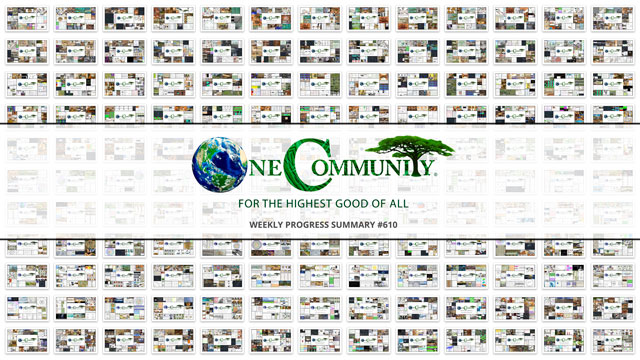
OUR MAIN OPEN SOURCE HUBS
Click on each icon to be taken to the corresponding Highest Good hub page.
One Community’s physical location will forward this movement as the first of many self-replicating teacher/demonstration communities, villages, and cities to be built worldwide essentially for cooperatively building a world that works for everyone. This is the November 25th, 2024 edition (#610) of our weekly progress update detailing our team’s development and accomplishments:
Cooperatively Building a
World that Works for Everyone
One Community Progress Update #610
DONATE | COLLABORATE | HELP WITH LARGE-SCALE FUNDING
CLICK HERE IF YOU’D LIKE TO RECEIVE AN EMAIL EACH WEEK WHEN WE RELEASE A NEW UPDATE
YOU CAN ALSO JOIN US THROUGH SOCIAL MEDIA
ONE COMMUNITY WEEKLY UPDATE DETAILS
HIGHEST GOOD HOUSING PROGRESS
 One Community is cooperatively building a world that works for everyone through Highest Good housing that is artistic and beautiful, more affordable, more space efficient, lasts longer, DIY buildable, and constructed with healthy and sustainable materials:
One Community is cooperatively building a world that works for everyone through Highest Good housing that is artistic and beautiful, more affordable, more space efficient, lasts longer, DIY buildable, and constructed with healthy and sustainable materials:
- Learn about cooperatively building a world that works for everyone: Our Upcoming Crowdfunding Campaign
- Learn about the different village models: 7 Sustainable Village Models
- Visit the open-source portals for the first two: Earthbag Village OS Hub | Straw Bale Village OS Hub
This week, Adil Zulfiquar (Engineer) continued working on the Vermiculture Toilet engineering and designing an ongoing path to making mainstream no-impact living; which is part of cooperatively building a world that works for everyone. His work centered on refining the vermiculture transportation report by incorporating changes suggested during multiple reviews. Backups were created for all referenced videos and PDF articles used in the report. Updates were made to the Excel lists that generate images for the report, and a backup was created for the website. A new safety section was added for operating the utility trailer, including pictorial illustrations. The report was further revised to enhance readability and presentation. The Earthbag Village is the first of 7 to be built as the housing component of One Community’s open source model for cooperatively building a world that works for everyone. See below for some of the pictures related to work.
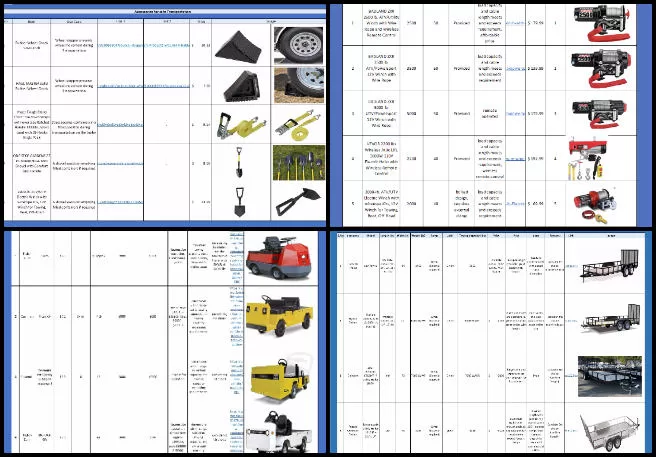
Akshit Sethi (Architectural Designer) continued working on updating the Earthbag Village SketchUp and AutoCAD layouts. Akshit worked on completing the base file for the SketchUp model of the EarthBag Village. His tasks included incorporating the atrium space, adjusting the ramp and door design to allow service vehicle entry, and integrating internal and external clusters. These updates established the foundational elements of the EarthBag Village model for further development. The Earthbag village is the first of 7 villages to be built as part of One Community’s open source model for cooperatively building a world that works for everyone. See his work in the collage below.
Anil Karathra (Mechanical Engineer) continued helping complete the Vermiculture Toilet engineering and designs. He focused on team activities, including managing weekly summaries and reviewing past work to ensure alignment with project goals; towards cooperatively building a world that works for everyone. Updates were made to the table of contents, bookmarks, and links, with formatting adjustments applied to the pest management section. The winch pull-out calculations document was revised with updated images and formatting, with a final review and touch-ups pending. Modifications were made to the hammer impact documentation based on recent feedback, and a new finite element analysis was conducted for the winch pull-out using a redesigned slider. The approach for cooperatively building a world that works for everyone enables the development of innovative solutions that are both environmentally friendly and effective. See below for some of the pictures related to the work.
Avery Hamilton (Mechanical Designer) continued working on finalizing the interior of the Earthbag Village 4-dome home design as a strategy for cooperatively building a world that works for everyone. Avery refined Revit schedules, finalized equipment layouts to align with project requirements, verified MEP system coordination with architectural plans, adjusted piping layouts for efficiency, and updated the Revit model with revised equipment specifications. He also created draft details for venting systems and prepared a mechanical and electrical coordination PDF to support interdisciplinary collaboration. The Earthbag village is the first of 7 villages to be built as part of One Community’s open source model for cooperatively building a world that works for everyone. See the work in the collage below.
Charles Gooley (Web Designer) continued working on the Aircrete Engineering and Research: Compression Testing, Mix Ratios, R-value, and More page. Charles updated the Aircrete Engineering and Research: Compression Testing, Mix Ratios, and R-value page, detailing the engineering steps, research, resources, and tools used to assess the safety of aircrete designs and structures. He identified sections in the related design document that need further clarification and expanded the content on the Tools and Equipment for Open Source Construction master page. Aircrete is an alternative we’re exploring for the Earthbag Village, a foundational part of One Community’s open-source model for cooperatively building a world that works for everyone. Take a look at some of the work in the images below.
Joseph Osayande (Mechanical Engineer) continued helping finish the Vermiculture Toilet engineering and design details. Joseph focused his efforts on cooperatively building a world that works for everyone; the drawer design was revised by adjusting its dimensions and fittings to align with the updated wall structure for improved compatibility within the chamber. Modifications to the Waste Removal System (WRS) included aligning the U-brackets with the updated drawer positioning. Finite Element Analysis (FEA) tests were planned to evaluate alternative unistrut materials for cost and performance. Research was also initiated to identify the most suitable material for the WRS, considering both performance and cost factors. The Earthbag Village is the first of 7 to be built as the housing component of One Community’s open source model for cooperatively building a world that works for everyone. See some of his work in the collage below.
Karthik Pillai (Mechanical Engineer) continued helping finish the Vermiculture Toilet engineering and helping with the Earthbag Village 4-dome home roof plan. For the vermiculture toilet will essentially promote cooperatively building a world that works for everyone Karthik worked on refining the roof joist design by testing various dimension combinations to reduce deflection to less than one inch. Simulation results showed a maximum deflection of 1.9 inches, leading to the identification of potential structural adjustments for optimization. Progress was also made on the vermiculture toilet design, with an assembly model developed to address coverage issues by minimizing structural gaps. Finite element analysis (FEA) is in progress to evaluate the assembly’s structural performance, focusing on ensuring functionality and reliability under operational conditions. The Earthbag Village is the first of 7 to be built as the housing component of One Community’s open source model for cooperatively building a world that works for everyone. See the work in the collage below.
Michaela Silva (Architect) continued working on finalizing the interior details for the Earthbag Village 4-dome home design. Michaela conducted structural research for the design of the 4-dome roof structure, reviewing live and dead load requirements from the California Residential Code and updating the building code sheet in Revit with the relevant sections. She also resolved a coordination issue between the mini-split and TV placement in the primary bedroom. The Earthbag Village is the first of 7 villages to be built as part of One Community’s open source model for cooperatively building a world that works for everyone. See her work in the collage below.
Vimarsh Acharya (Engineering Manager and Technical Reviewer) continued working on identifying sustainability-related arguments covering the Highest Good Lifestyle Considerations and sourcing quality research to support each one. The research support will definitely enhance cooperatively building a world that works for everyone. His work on reviewing the “Vermiculture Container Transport Solution” document involved implementing changes and addressing questions. The “Ultimate Classroom Structural Design” document is now in the final review stage. Earlier revisions, suggested by Jae and the user, were completed by Apoorv, and the current effort is directed toward rechecking and verifying the document for any remaining issues or uncertainties. The One Community model of combining forward-thinking education with sustainably built classrooms like this is an excellent example of cooperatively building a world that works for everyone. See the collage below for his work.
DUPLICABLE CITY CENTER PROGRESS
 One Community is cooperatively building a world that works for everyone through a Duplicable and Sustainable City Center that is LEED Platinum certified/Sustainable, can feed 200 people at a time, provides laundry for over 300 people, is beautiful, spacious, and saves resources, money, and space:
One Community is cooperatively building a world that works for everyone through a Duplicable and Sustainable City Center that is LEED Platinum certified/Sustainable, can feed 200 people at a time, provides laundry for over 300 people, is beautiful, spacious, and saves resources, money, and space:
- Learn about this building and its function: Duplicable City Center Open Source Hub
This week, Adithya Bhalaji (Mechanical Engineer) continued exploring various types of dormer designs available in the market and studied commonly used materials for windows and dormer construction, focusing on their insulation properties for the dormer interior. He focused on creating part drawings for individual components of the second-floor dormer design. The designs will cooperatively building a world that works for everyone. This involved referencing stackups and dimensions from the first-floor dormer design and making design assumptions to accommodate the incline caused by the steep angle changes in the dome structure and stacked diamond assembly. Additionally, considerations were made for the attachment methods of these parts. As previous concept explorations required a fresh approach, the design process started with initial concept sketching and development before progressing to assembly creation. The current scope of work includes the overall dormer structure, with remaining tasks involving the addition of insulation, an already-designed window frame, and the outer enclosure, which are planned to be addressed in the near term. The Duplicable City Center represents a fundamental element of One Community’s open-source approach, dedicated to cooperatively building a world that works for everyone. View examples of this work in the pictures provided below.![]()
Arnob Mutsuddi (Mechanical Engineer) continued working on the Duplicable City Center’s structural engineering model and details. He worked on the Row 6 hub connector design, which progressed with continued efforts on angle alignment and middle ring integration. The design process included aligning four side struts with the middle ring and addressing the angle alignment between the side struts and the middle ring. Three side struts were fully aligned, and adjustments to the remaining alignments are still in progress. The Duplicable City Center is a foundational part of One Community’s open-source model, which excels in cooperatively building a world that works for everyone. This approach is integral to their mission of cooperatively building a world that works for everyone through innovative and scalable solutions. See some of this work in the pictures below.
Chris Blair (GIS Technician/Horticulturist) continued working with GIS data as part of One Community’s Permaculture Design that includes the location of the Duplicable City Center. He worked with GIS data as part of One Community’s Permaculture Design. Using accurately scaled footprints of the villages and city center, he analyzed and placed them in optimal locations on the property, taking into account level ground and solar aspect. He also created maps displaying the original village locations alongside proposed relocation suggestions. Within One Community’s open-source framework, the Duplicable City Center plays a central role in cooperatively building a world that works for everyone. The images below showcase some of this work.
Faeq Abu Alia (Architectural Engineer) continued his work on the Duplicable City Center kitchen. He worked on refining the Duplicable City Center kitchen model in SketchUp, addressing design issues and incorporating feedback to improve its overall quality. He enhanced the model by adding human figures to provide a realistic perspective. In Lumion, he adjusted materials, included additional human figures, and developed three walkthrough paths for the kitchen. Key shots were rendered to improve the visual presentation and ensure alignment with project requirements. The Duplicable City Center represents a fundamental element of One Community’s open-source approach, dedicated to cooperatively building a world that works for everyone. View examples of this work in the pictures provided below.
Jason Bao (Architectural Designer) continued working on producing renders for the Duplicable City Center library. He made adjustments and updates to previous renders based on feedback from the weekly report. New ceiling lights were added to both the SketchUp and Lumion models to enhance interior lighting, aligning with a referenced lighting case study. Disposable containers were removed from all scenes, and the sport night scene was re-rendered with updated lighting. Books on the library’s shelves were re-textured to increase visual diversity, and minor clipping issues were resolved before re-rendering parts of the reading scene. The library layout for the education scene was revised, repositioning the tutor to the inner side of the group and surrounding them with students. Additional adjustments included rearranging furniture, textures, and items to achieve a corrected look, followed by rendering for economic and permaculture design education scenes. Work also began on constructing the game night scene, which involved rearranging furniture, adding game-related assets, and making lighting adjustments. The Duplicable City Center is a foundational part of One Community’s open-source model, which excels in cooperatively building a world that works for everyone. This approach is integral to their mission of cooperatively building a world that works for everyone through innovative and scalable solutions. See some of this work in the pictures below.
Nika Gavran (Industrial Designer) continued her work on the Duplicable City Center dormer window installation plans. She focused on expanding the final document for the dormer window instructions, incorporating feedback received on the design and renders. She began implementing changes, including adjusting the roof of the dormer to have a greater slope. This involved researching the appropriate slope for the specific structure size and updating the CAD model accordingly. Additionally, Nika researched waterproof roofing solutions and started a new page with detailed descriptions for cutting the rock wool insulation. As a foundational component of One Community’s open-source strategy, the Duplicable City Center is designed for cooperatively building a world that works for everyone. The images below showcase some of this work.
Rudrani Sravya Mukkamala (Mechanical Engineer) focused on researching the structural components of a hydraulic elevator, covering aspects such as the framework, guide rails, and load-bearing elements. Simultaneously, she worked on developing a design plan, integrating insights from the research into preliminary sketches and diagrams. Cooperatively building a world that works for everyone is truly attainable through well-designed strategic planning. The type of hydraulic elevator was determined based on its intended usage and an evaluation of each system’s merits and demerits. This effort aimed to align the structural design with functional requirements. Within One Community’s open-source framework, the Duplicable City Center plays a central role in cooperatively building a world that works for everyone. The images below showcase some of this work.
Sanket Basannavar (Mechanical Engineer) continued working on the Duplicable City Center spa cover as part of the City Center Natural Pool and Eco-spa Designs. He identified a design defect in the spa cover, specifically a gap between the panels. The design was updated by incorporating rubber insulation material to eliminate the gap, and the thermal analysis was rerun, showing improved efficiency. Additionally, a report detailing the updated spa cover design was completed. Within One Community’s open-source framework, the Duplicable City Center plays a central role in cooperatively building a world that works for everyone. The images below showcase some of this work.
Tasmia Hasan (Design Engineer) continued her work on the structural engineering of the Duplicable City Center. She worked on adjusting the row one angle of the frame to achieve proper alignment. She calculated and applied 66.18 degrees for the intermediate angles and 56.99 degrees for the angles on the two sides. To simplify the process, she removed the screws and inner ring, enabling easier adjustments using the Direct function for precise modifications. As a foundational component of One Community’s open-source strategy, the Duplicable City Center is designed for cooperatively building a world that works for everyone. You can see examples of this work in the following images.
Umema Ali (Mechanical Design Engineer) continued working on the Duplicable City Center Engineering. She worked on the static structural analysis of a new dome structure, focusing on evaluating its performance under snow loads of 10 and 20 lbs. Using Inventor, she analyzed the displacement and stress values resulting from the application of a uniformly distributed load. The analysis aimed to assess the structural integrity of the dome under varying conditions, providing data on how the structure responds to these specific load scenarios. Within One Community’s open-source framework, the Duplicable City Center plays a central role in cooperatively building a world that works for everyone. The images below showcase some of this work.
Yancong E (Architectural Designer) continued working on the Duplicable City Center project. He updated the Outdoor View Floor Plan to align with the latest revisions, adjusting dead areas and recalculating viewable area percentages for each room. He revised the overall analysis description to ensure alignment with the website and conducted individual floor analyses to identify specific details and determine which rooms qualify for points. The Duplicable City Center represents a fundamental element of One Community’s open-source approach, dedicated to the ongoing path to making no-impact living mainstream. This innovative initiative aims to showcase how an ongoing path to making no-impact living mainstream can transform urban spaces into more sustainable and community-oriented environments. You can see examples of this work in the following images.
HIGHEST GOOD FOOD PROGRESS
 One Community is cooperatively building a world that works for everyone through Highest Good food that is more diverse, more nutritious, locally grown, and sustainable, and part of our open source botanical garden model to support and share biodiversity:
One Community is cooperatively building a world that works for everyone through Highest Good food that is more diverse, more nutritious, locally grown, and sustainable, and part of our open source botanical garden model to support and share biodiversity:
- Learn about the structures: Hoop House Hub | Aquapini & Walipini Open Source Hub
- See what we’ll be growing: Gardens & Hoop Houses | Large-scale Structures | Food Forest | TA
This week, the core team completed the review of the Apiary and portions of the Earthbag Tools, Equipment, and Material/Supplies lists. They also reviewed the electrical plan for the Earthbag Village, examining individual circuits and suggesting uniform wire gauges and appropriate breaker amperes. An electrical reassessment will be conducted for the 4-dome cluster. The Earthbag Village is the first of 7 to be built as the housing component of One Community’s open source model for cooperatively building a world that works for everyone. See below for some of the pictures related to this work.
Jay Nair (BIM Designer) continued working on Aquapini and Walipini Planting and Harvesting lighting and HVAC design. He focused on advancing the greenhouse design by resolving challenges encountered during the heat load analysis in Revit addressing software limitations and errors. Addressing the challenges is important in cooperatively building a world that works for everyone. Research into alternative methods for performing the analysis was undertaken to achieve accurate results aligned with the greenhouse’s requirements. A work breakdown structure (WBS) was developed for HVAC and plumbing designs to facilitate task assignments and project planning. Additionally, Jay reviewed resumes to evaluate candidates for mechanical engineering roles, prioritizing the selection of individuals with relevant expertise to support the design and analysis phases of the project. The Highest Good Food initiative is a key component of One Community’s open source plans, dedicated to cooperatively building a world that works for everyone and exemplifies the organization’s commitment through innovative design and implementation. Below are some of the images showcasing this work.
Junyi Shi (Landscape Architect) started working on developing a design for Walipini #2 as a part of Aquapini and Walipini Planting and Harvesting project. A project that can lead to cooperatively building a world that works for everyone Her work on the CAD design concentrated on integrating a people space function into the Walipini 2 fruit greenhouse. After analyzing and researching potential options, a design plan for the people space was selected. The CAD design was synchronized with the SketchUp model, beginning with sectional views and utilizing SketchUp and Enscape to create 3D representations for improved spatial visualization. Corrections were also made to errors in the original Lumion model, which included replacing incorrect tree species and fixtures with accurate ones, followed by rendering perspective images to showcase the updated design. The Highest Good Food initiative is essential to One Community’s open source plans, focused on promoting a sustainable approach to cooperatively building a world that works for everyone. Her contributions are highlighted in the collage below.
Purva Borkar (Landscape Architect) continued with her work on creating an outdoor merge of a food-producing ecosystem and people spaces for the Aquapini and Walipini Planting and Harvesting structures. She focused on refining the CAD design to enhance accuracy and detail in the project layout. She also conducted research to identify and integrate relevant design features, improving both functionality and aesthetics which is a special feature for cooperatively building a world that works for everyone. Additionally, Purva worked on drafting a report that provides a thorough explanation of the overall design, highlighting its key components and objectives. As part of One Community’s open source efforts, the Highest Good Food initiative embodies a commitment to cooperatively building a world that works for everyone. The images below offer a glimpse into these ongoing efforts.
Surya Teja Anumolu (Volunteer Mechanical Engineer) continued his work on the Highest Good Food most sustainable construction and agricultural equipment. He focused on refining Aquapini and Walipini Planting and Harvesting footprint drawings to include scale bars and legends at each level for the different types of footprints created last week. Using the master AutoCAD file from the One Community Dropbox folder, he combined five distinct drawings to create the final file for the Aquapini and Walipni databases. The Highest Good Food initiative is a key component of One Community’s open-source plans, dedicated to cooperatively building a world that works for everyone. This approach is critical to ensure alignment with the initiative’s goals. See his work in the collage below.
Syahrina Maulida Majid (Volunteer Nutritionist) continued working on creating menu implementation tutorials as a part of One Community’s Transition Food Self-Sufficiency Plan. She worked on menu implementation by refining and testing the master recipe template; and important in cooperatively building a world that works for everyone. She developed step-by-step instructions for a tutorial to guide users on data input, adapting the template to different dietary needs, and interpreting its outputs. Observations from earlier testing were integrated to address potential challenges and enhance the tutorial’s clarity. Additionally, she documented examples to provide practical context, ensuring the tutorial is accessible and applicable to a variety of users. The Highest Good Food initiative plays a crucial role in One Community’s open source plans, to cooperatively building a world that works for everyone. Her work is showcased in the collage below.
Vatsal Tapiawala (Mechanical Engineer) continued working on integrating ideas from Paul Wheaton’s Truly Passive Greenhouse” designs into the Aquapini/Walipinis structures. The incorporation of Aquapini is essesntial to cooperatively building a world that works for everyone. He focused on analyzing the heating and cooling loads for Walipini 1. He conducted a comparative study of the peak loads under various scenarios to understand the thermal performance of the structure. In addition to the analysis, Vatsal compiled the findings and wrote a detailed report to document the results comprehensively. The Highest Good Food initiative is a key component of One Community’s open source plans, dedicated to cooperatively building a world that works for everyone. See his work in the collage below.
Ziyi Chen (Landscape Designer) continued working on the design of the outdoor spaces for the Aquapini/Walipinis structures. She organized current progress and worked on planning the webpage layout. To clarify the deliverables, Ziyi divided them into four sections: general plans and construction drawings, detailed plans, renderings, and sections. As part of this process, she created sample floor plans, prepared a design summary, and visualized canopy and ground cover coverage through distinct layers, documenting them in the sequence intended for the webpage. The Highest Good Food initiative is a key component of One Community’s open source plans, dedicated to cooperatively building a world that works for everyone. See her work in the collage below.
HIGHEST GOOD ENERGY PROGRESS
 One Community is cooperatively building a world that works for everyone through Highest Good energy that is more sustainable, resilient, supports self-sufficiency and includes solar, wind, hydro and more:
One Community is cooperatively building a world that works for everyone through Highest Good energy that is more sustainable, resilient, supports self-sufficiency and includes solar, wind, hydro and more:
- Learn about the open source sustainable-energy foundations: Solar, Hydro, and Wind
- Explore our research into the most sustainable products and companies for saving water and energy: Insulation, Eco-laundry, Lightbulbs and Light Bulb Companies, Doors and Door Companies, Windows and Window Companies, Toilets, Faucets and Faucet Accessories, Urinals, and more.
This week, Muhammad Sarmad Tariq (Electrical Engineer) continued helping finish the Highest Good energy fully-off-grid vs. grid-tie comparisons. This week he reviewed various battery cost projections that are available online. He developed a normalized battery cost projection extending to 2050, indicating a 34% reduction in battery costs from 2022 levels based on the datasets projection from the NREL website and included in the document titled “Muhammad Sarmad Tariq and One Community Collaboration” within the WBS Complete Grid-tie vs Off-grid Cost Analysis and Rollout Report. Additionally, he examined information comparing off-grid and on-grid solar PV systems, including qualitative analyses conducted by solar PV companies. The team has made significant progress within One Community’s open-source framework, and Highest Good energy plays a central role in cooperatively building a world that works for everyone. Take a look at some of this work in the images below.
Viktoriia Zakharova (Administrative Assistant) continued her research to complete the update of the Most Sustainable Lightbulbs and Light Bulb Companies. This week, Viktoriia researched the most sustainable lighting fixtures for the Duplicable City Center, organized the fixture requirements spreadsheet, and identified potential alternative options. Additionally, she revised the sustainable lightbulb webpage, updated the sustainability rankings of lighting solutions companies, added explanatory comments, and rearranged the webpage content. The updated webpage was submitted for the second round of feedback. Beyond this, Viktoriia reviewed training assignments submitted by two volunteers, providing detailed feedback on their work. She also completed administrative tasks, including managing the weekly progress update summaries for the Highest Good Food. The Highest Good energy component is a foundation of One Community’s approach for cooperatively building a world that works for everyone. View examples of this work in the pictures provided below.
Yi-Ju Lien (Environmental Engineer) continued on her Highest Good energy water collection and hydro-energy exploration. This week she developed a spreadsheet to estimate the performance of stormwater management practices using the direct determination method. She used scenarios from the EPA’s stormwater management guidance as examples for these calculations. Additionally, she calculated the potential of the Earthbag Village site to retain the 95th percentile storm, aiming to achieve the 5 LEED points. Yi-Ju also began working on a LEED tutorial to explain the calculations and design details of each stormwater management practice. Water collection and maximizing the use of micro-hydro are important aspects of One Community’s open-source approach to Highest Good energy and building a world that works for everyone. Below is a collage of this work.
HIGHEST GOOD EDUCATION PROGRESS
 One Community is cooperatively building a world that works for everyone through the Highest Good education that is for all ages, applicable in any environment, adaptable to individual needs, far exceeds traditional education standards, and is more fun for both the teachers and the students. This component of One Community is about 95% complete with only the Open Source School Licensing and Ultimate Classroom construction and assembly details remaining to be finished. With over 8 years of work invested in the process, the sections below are all complete until we move onto the property and continue the development and open sourcing process with teachers and students – a development process that is built directly into the structure of the education program and everything else we’re creating too:
One Community is cooperatively building a world that works for everyone through the Highest Good education that is for all ages, applicable in any environment, adaptable to individual needs, far exceeds traditional education standards, and is more fun for both the teachers and the students. This component of One Community is about 95% complete with only the Open Source School Licensing and Ultimate Classroom construction and assembly details remaining to be finished. With over 8 years of work invested in the process, the sections below are all complete until we move onto the property and continue the development and open sourcing process with teachers and students – a development process that is built directly into the structure of the education program and everything else we’re creating too:
- Program Overview: Education Open Source Hub
- How the components work together in designing human orchestrated eco-abundance: How to use the Education for Life Program
- Lesson Plans for Life – Lesson Plans How-to
- Foundations of Outstanding Leaders, Teachers, and Communicators
- Curriculum for Life
- Teaching Strategies for Life
- Learning Tools and Toys for Life
- Evaluation and Evolution
This week, Apoorv Pandey (Mechanical Engineer) continued helping with the engineering details for the Ultimate Classroom part of the Highest Good Education component. An important factor in cooperatively building a world that works for everyone. He continued working on the final draft of the Structural Engineering Report for the Ultimate Classroom Project, focusing on the changes recommended by Jae. He worked on making the AutoCAD files more presentable, especially the detailing of each drawing. He is also working on logging all of his work in a video format for a varied explanation of all the work he’s done. He researched ways to simplify the explanation of technical tables, such as the static check table and the beam force detail summary, to make the content more accessible to a layperson. Additionally, Apoorv is reworking the formatting of certain sections and referencing other published materials on One Community’s website to guide his work. The One Community model of combining forward-thinking education with sustainably built classrooms like this is an excellent example of cooperatively building a world that works for everyone. This approach exemplifies cooperatively building a world that works for everyone by creating environments fostering collaboration and innovation. See the collage below for his work.
HIGHEST GOOD SOCIETY PROGRESS
 One Community is cooperatively building a world that works for everyone through a Highest Good society approach to living that is founded on fulfilled living, the study of meeting human needs, Community, and making a difference in the world:
One Community is cooperatively building a world that works for everyone through a Highest Good society approach to living that is founded on fulfilled living, the study of meeting human needs, Community, and making a difference in the world:
- Read the Highest Good Society overview a model in cooperatively building a world that works for everyone: Highest Good Society
- Learn about the model for fulfilled living and sharing: A Day in the Life
- Learn about the 4 economic models: RBE | For-profit | Non-profit | Entrepreneurship
- Learn about our open source community collaboration and management software: The Highest Good Network
This week, the core team completed over 64 hours managing One Community’s volunteer-work review not included above, emails, social media accounts, web development, new bug identification and bug-fix integration for the Highest Good Network software, and interviewing and getting set up new volunteer team members. They also shot and incorporated the video above that talks about cooperatively building a world that works for everyone and how cooperatively building a world that works for everyone is a foundation of the bigger picture of everything One Community is doing. The image below shows some of this work.
Anoushka Hazari (Data Analyst) continued working on code for automating and simplifying the Highest Good Network software promotion process. The simplification of the process is a success factor in cooperatively building a world that works for everyone. Achieving the PR reviews for the team were completed, along with the creation of a blog and a collage. Errors in the blog were corrected, and updates were made to the HGN spreadsheet and PR review table. A dashboard sketch was created, and a Loom video was prepared and sent to Jae to solicit feedback and suggestions. Jae provided input on the Figma dashboard, identifying areas for improvement. Work is ongoing to review and incorporate these suggestions to refine the design, with a focus on enhancing functionality and presentation. Additionally, adjustments based on feedback from the Loom video are being addressed to ensure all elements are properly aligned for a polished final version. This work helps One Community’s mission of cooperatively building a world that works for everyone and reinforces our commitment to cooperatively building a world that works for everyone. The following images show her work for the week.
Aravind Yuvraj (Cyber Security Professional) continued helping with the One Community website and Highest Good Network software stability and security. This week, the site was monitored to assess its performance, and the steps required to add a dummy version of HGN on Bluehost were reviewed. Adjustments were made to Wordfence settings to enhance security, including enabling two-factor authentication for all users and refining configurations to prevent unauthorized access and unknown attacks. Additionally, efforts were focused on optimizing Wordfence functionality and analyzing site traffic, particularly identifying patterns of access from different countries to ensure proactive protection measures. This work helps One Community’s mission of cooperatively building a world that works for everyone and reinforces our commitment to cooperatively building a world that works for everyone. The following images show his work for the week.
Chitra Siddharthan (Data Analyst And Team Administrator) focused on training for the Admin role, with her work evaluated by Jibin, Rishab, and Vishnu, who provided feedback on the training document. She incorporated their suggestions and made revisions accordingly. Following this, she was assigned to a team within the Highest Good Network and tasked with overseeing the completion of Phase 2 of the HGN Construction Management Software. Chitra also reviewed and familiarized herself with the “Congratulations, you’re an admin now!” document and began reading the “HGN Phase II: Materials, Equipment, Tools and Project Tracking System Outline – Team Collaboration” document. This work helps One Community’s mission of cooperatively building a world that works for everyone and reinforces our commitment to cooperatively building a world that works for everyone. The following images show her work for the week.
Christopher Powell (Grant Writer) continued helping with grant writing as a source of funding. He communicated with Jae about the Brutten Family Foundation LOI. After extensive discussion, Christopher chose to rewrite the LOI using updated information, as he was not satisfied with the original version. The revised version, now at 2.0, is focused on hiring new staff and is awaiting Jae’s feedback. Additionally, Christopher reviewed several Loom recordings to gain a clearer understanding of Jae, his vision, and his project. This work helps One Community’s mission of cooperatively building a world that works for everyone and reinforces our commitment to cooperatively building a world that works for everyone. The following images show his work for the week.
Feras Rehman (Data Analyst) continued working on developing One Community’s Mastodon account and strategy. He also managed his part of the One Community Updates Blog by reviewing and adding images to supplement the summary. He reviewed the blogs of Sneka, Ratna, Rahul, Jessica, and Zuqi, providing feedback on the errors identified. Five more Mastodon posts were scheduled on Buffer for the following week. Targeted strategies for Mastodon were developed and implemented, leading to a fourfold increase in post reach through optimized hashtag usage and improved post structuring. Images were also added to supplement the weekly summary, providing additional context to the updates. This work helps One Community’s mission of cooperatively building a world that works for everyone and reinforces our commitment to cooperatively building a world that works for everyone. The following images show his work for the week.
Praneeth Kruthiventi (Volunteer Data Analyst) continued helping manage the One Community Google Ads campaigns. This week, he focused on optimizing Google Ads campaigns by updating keywords to enhance relevance and analyzing the effects of bidding strategy adjustments on ad visibility. Effective online campaigns disseminate vital information in cooperatively building a world that works for everyone. He interviewed two candidates for developer roles, including Frontend, Backend, and Fullstack positions, and explored approaches for generating automated reports to monitor the performance of ongoing campaigns. Additionally, he reviewed training exercises completed by new volunteers and contributed to the hiring process for upcoming roles. This work helps One Community’s mission of cooperatively building a world that works for everyone and reinforces our commitment to cooperatively building a world that works for everyone. The following images show his work for the week.
Hritvik Mahajan (Data Analyst) focused on Figma development, marketing, and administrative tasks. He worked on designing the HGN social media scheduler using Figma, integrating ideas from YouTube tutorials, and preparing documentation to support the design process. Cooperatively building a world that works for everyone is not a one time but must be implemtented progression of phases. He also participated in frontend testing for Phase 1, which involved testing multiple pull requests, managing tags, resolving merge conflicts, creating Loom videos for feedback, and collaborating with team members on Slack to address necessary changes. For marketing, he managed Twitter/X posts by selecting high-engagement content, updating tracking sheets, and planning post schedules. Administrative responsibilities included reviewing training documents for several admin team members, identifying overlooked errors, and tagging supervisors for additional input. He also provided feedback on the Step 4 document for the blog, completed reviews, and gave detailed suggestions for improvements. This work helps One Community’s mission of cooperatively building a world that works for everyone and reinforces our commitment to cooperatively building a world that works for everyone. The following images show his work for the week.
Rahul Bavanandan (Data Analyst) continued working on several key projects within the Highest Good Network software, One Community’s Reddit presence, and administration; central in cooperatively building a world that works for everyone. He completed the review of the document of two new trainees and worked on the HGN Phase 2 Figma dashboard. He also continued his work on the HGN Phase 2 Evolution project, focusing on translating the Figma designs for the Phase 2 dashboard. Additionally, he contributed to One Community Global by curating content for the weekly progress update. This involved adding the weekly summaries and photo collages to the webpage, ensuring all information was accurately presented and aligned with the review table criteria. He also reviewed summaries and images submitted by team members, providing feedback to enhance the quality and clarity of their contributions. He completed steps 2 and 4, and the manager’s feedback. Images have been attached to supplement this summary. This work helps One Community’s mission of cooperatively building a world that works for everyone and reinforces our commitment to cooperatively building a world that works for everyone. The following images show his work for the week.
Shireen Kayal (Humanitarian Program Developer & Data Manager) continued her work on branding graphics for all of One Community. This week she created new graphics for both the Highest Good Energy Page and the For The Highest Good of All® philosophy page by creating clearer visual representations of key concepts. She redesigned several graphics, including the Open-Source Portal and a new image for conflict resolution, while revising the “Using Consensus in Decision Making” to eliminate an unnecessary white line. Shireen created two more logo variations within the consensus image to help with preference assessment. Additionally, she developed new versions of images related to “Conservation,” “Infrastructure,” and “Sustainable off-grid energy infrastructure” while enhancing the logo on five images for “Our Pledge page. This work helps One Community’s mission of cooperatively building a world that works for everyone and reinforces our commitment to cooperatively building a world that works for everyone. The following images show her work for the week.
Vatsal Mendpara (Security Analyst) performed cybersecurity testing on the One Community Global website, focusing on OWASP’s top 10 vulnerabilities, including SQL injection and broken authentication. Cooperatively building a world that works for everyone needs greater and enhanced security and safety. He completed all pending security testing tasks, attended a planning meeting with Jae to discuss current and upcoming assignments, and began optimizing WordPress settings. This optimization involved detailed performance analysis to identify areas for improvement, such as removing Nitropack, implementing a new cache plugin, performing ping tests before and after changes, reviewing existing resources, cleaning up unused optimization plugins, and preparing a justification for a refund. This work helps One Community’s mission of cooperatively building a world that works for everyone and reinforces our commitment to cooperatively building a world that works for everyone. The following images show his work for the week.
Venkata Jaya Pavan Naru (Volunteer Network And Cybersecurity Engineer) continued helping with the One Community website and Highest Good Network software stability and security. This week, he performed website speed tests, researched alternatives to Bluehost, and completed a hosting plan comparison spreadsheet. He also collaborated with Jae and the team on weekly tasks, performed server-based website tests, and worked on Phase 1 of the cybersecurity task. Additionally, Pavan focused on website maintenance and further testing to enhance performance. This work helps One Community’s mission of cooperatively building a world that works for everyone and reinforces our commitment to cooperatively building a world that works for everyone. The following images show his work for the week.
Yash Shah (Data Analyst and Team Administrator) continued his admin work and managed the social architecture component of the Highest Good Network software. He created a blog for Dev Dynasty, organized the weekly folder, prepared a collage, and edited the summary to include all team members. Tasks for deliverables 3 and 4 were added, with updates monitored by other team members. During the weekly meeting, issues raised by teammates were resolved, and updates on tasks were provided. Feedback from Jae’s video for deliverables 3 and 4 was reviewed, and necessary updates were made. Additionally, new team member Shreya was introduced to Phase 3, assigned design tasks in Figma, and guided through the feedback video to implement the required changes. This work helps One Community’s mission of cooperatively building a world that works for everyone and reinforces our commitment to cooperatively building a world that works for everyone. The following images show his work for the week.
ADMINISTRATION TEAM A-O
The Administration Team’s summary, covering their work administrating and managing most of One Community’s program for cooperatively building a world that works for everyone was managed by Muhammad Huzaifah (Administrative Assistant) and includes, Durgeshwari Naikwade (Data Analyst), Jessica Fairbanks (Administrative Assistant), Michael Juma (Administrative Assistant), Kishan Sivakumar (Administrative Assistant and Software Team Manager), Jibin Joby (Data Analyst), Vishnu Murali (Data Analyst), Wasim Akram (Administrative Assistant) and Olawunmi “Ola” Ijisesan (Administrative and Management Support).
This week, Durgeshwari scheduled the weekly meeting for the Google Analytics Team and researched SEO optimization methods, including integrating Rank Math Analytics with Google Analytics or maintaining the use of Google Analytics, Google Search Console, and Keyword Planner separately. She optimized in-page SEO for over 12 blogs and assigned them to team members. Jessica advanced her work on integrating Highest Good Food into small-scale organizations, with a focus on corporate gardens, revising her previous work on the topic, and completing regular administrative tasks. Enhanced administration effectively establishes a cooperatively building a world that works for everyone.
Jibin reviewed team contributions, provided feedback on onboarding training, updated blogs for SEO, and finalized PDFs after revisions. He also researched analytics dashboards and custom event strategies to improve efficiency and data insights. Kishan managed senior admin duties by reviewing volunteer documents, tracking progress, addressing requests, revisiting previously optimized pages based on feedback, and completing assigned SEO page edits and weekly blog tasks. Information updates on webpages and blogs give the trends in a cooperatively building a world that works for everyone. Michael led the energy team by updating weekly summaries, optimizing the #609 blog’s keyword density to improve its SEO ranking, addressing admin tracking feedback, and following up with team members on their tasks.
Huzaifah conducted blog audits, followed up on team member bios, managed deadlines, and ensured volunteers updated their task durations in the system. Ola resolved a website link issue, reviewed pull requests, monitored task completion, supported a manager with administrative tasks, reviewed spreadsheets and weekly reports, and identified candidates for promotion. Vishnu developed a plan for event tagging on community websites to enhance Google Analytics reporting, reviewed training documentation for new administrators, assessed team progress, and updated a blog with insights from team activities. Wasim focused on training for the One Community Global website, gaining familiarity with its structure, communication protocols, and project management tools in preparation for future contributions. One Community’s model for cooperatively building a world that works for everyone includes developing and maintaining a supportive administration team like this. You can see the work for the team in the image below.
ADMINISTRATION TEAM R-Z
The Administration Team’s summary, covering their work administrating and managing most of One Community’s ongoing process for cooperatively building a world that works for everyone was managed by Sneka Vetriappan (Data Analyst) and includes Rachna Malav (Data Analyst), Ratna Meena Shivakumar (Data Analyst and Admin), Rishabh Rao (Administrator), Saumit Chinchkhandi (Administrative Assistant and Software Engineer), Shrinivas Patil (Software Engineer), Tanmay Koparde (Industrial Engineer) and Zuqi Li (Administrative Assistant and Economic Analyst). This week, Rachna interviewed two candidates, documented meeting notes in the hiring team spreadsheet, checked emails and comments, and continued working on SEO page optimization. Ratna prepared the weekly summary, created blog post collages for various teams, and scheduled posts for Facebook and Instagram. Facebook and Instagram are social media platforms to promote cooperatively building a world that works for everyone. She also worked on optimizing blogs and began exploring the AI music task using Suno AI.
Rishabh uploaded and corrected the team Skye summary on WordPress, created a Facebook post for Sustainable Lives, and brainstormed engagement strategies. He provided feedback on the new admin training run and participated in an analytics meeting focused on performance metrics. Saumit completed frontend testing for numerous pull requests, collaborated with developers to resolve conflicts, managed pull request workflows for volunteers, and updated his WordPress page with a team summary and collage. Shrinivas finalized blogs 608 and 609, managed 28 people across two teams, and assisted with admin feedback by reviewing corrected PDFs and updating spreadsheets. He also tested pull requests in the development environment and provided detailed feedback to developers.
Sneka concentrated on time log management, feedback, and tutorial development for administration. She reviewed weekly blog entries, provided corrections, followed up on comments, uploaded summaries, and collages, and ensured alignment with review table conditions. Tanmay completed initial onboarding, familiarized himself with the administrative process, and worked on several checklists and tasks to understand the workflow. Zuqi organized the Graphic Design Team’s weekly summary, integrated feedback, reviewed collaborative documents for Google AdWords and Analytics, and researched metrics to improve blog performance and SEO. One Community’s model for cooperatively building a world that works for everyone includes developing and maintaining a supportive administration team like this. You can see the work for the team in the image below.
GRAPHIC DESIGN TEAM
The Graphic Design Team’s summary was managed by Zuqi Li (Administrative Assistant and Economic Analyst) and included Anusha Tariq (Graphic Designer), Aurora Juang (Graphic Designer), Junyuan Liu (Graphic Designer, UI/UX Designer), Jaime Yao (Creative Technologist) and Pranali Desai (Communication Designer), covering their work on graphic designs for cooperatively building a world that works for everyone. This week, Anusha created and optimized an announcement post for SEO, incorporating necessary changes and uploading it to the website. She also generated AI-enhanced images to complement the post’s text, edited two distinct social media posts in Photoshop to align with branding and content requirements, and organized and uploaded them to Dropbox for accessibility.
Aurora designed bio announcement materials, organized content in Google Documents, and tailored imagery based on each volunteer’s profession using Photoshop. She updated and posted bio announcements for volunteers completing a full cycle with One Community, writing necessary code and ensuring all details were accurate. Jaime designed volunteer announcement images for Adil, Vimarsh, Yash, Strallia, Praneeth, and Ziyi, as well as his announcement image, and completed Ziyi’s announcement website. He also worked on social media visuals for the theme “Together, we can make a difference for future generations,” including concepts such as “Migratory Birds in Flight,” “Sky of Hope,” and “Wildlife Crossing,” emphasizing sustainability, generational impact, and collaborative efforts. Cooperatively building a world that works for everyone; needs partnership and collaboration from like-minded parties.
Junyuan focused on creating social media content, completing three new images through an iterative design process, and began gathering resources and brainstorming ideas for future designs. Pranali developed web content for volunteer announcements and bios, editing announcements and profile images for software engineer volunteers using Adobe Photoshop. She uploaded the content to the One Community website, ensuring the inclusion of SEO information, and created two sets of website codes for each volunteer: one for the announcement and another for the collaborator’s page. See the Highest Good Society pages for more on how this contributes to cooperatively building a world that works for everyone. See the collage below to view some of their work.
HIGHEST GOOD NETWORK PROGRESS
 One Community is cooperatively building a world that works for everyone through open-source Highest Good Network® software which is a web-based application for collaboration, time tracking, and objective data collection. The purpose of the Highest Good Network is to provide software for internal operations and external cooperation. It is being designed for global use in support of the different countries and communities replicating the One Community sustainable village models and related components.
One Community is cooperatively building a world that works for everyone through open-source Highest Good Network® software which is a web-based application for collaboration, time tracking, and objective data collection. The purpose of the Highest Good Network is to provide software for internal operations and external cooperation. It is being designed for global use in support of the different countries and communities replicating the One Community sustainable village models and related components.
- Learn about our open-source community collaboration and management software: The Highest Good Network
This week, the core team continued their work on the Highest Good Network PRs testing, confirming the fixed PRs and resolving several issues. The confirmed fixes for several issues include adjusting formatting to reduce vertical space (#2750), implementing a MailChimp replacement (#2595), and improving load time when assigning a user to a project (#2727). Unresolved issues include the task column being too narrow, the table not stretching to the full page width on the PEOPLE REPORT PAGE UI for 375px and up (#2650), and the “Paused” and “Inactive” buttons appearing to duplicate functionality when adding a button to display paused tasks (#2817). Additionally, they reported an issue with a Core Team account not generating the correct required hours after accumulating more than five blue squares for failing to submit a Weekly Summary, and provided comments on PR#1104, questioning whether Core Team members should receive an additional required hour for their sixth blue square. We continue to focus on cooperatively building a world that works for everyone through iterative improvements and user-centric solutions. See the Highest Good Society and Highest Good Network pages for more on how this relates to cooperatively building a world that works for everyone. The collage below shows some of their work.
ALPHA SOFTWARE DEVELOPMENT TEAM
The Alpha Team’s summary, covering their work on the Highest Good Network software software was managed by Lin Khant Htel (Frontend Software Developer) and includes Carlos Gomez (Full-Stack Software Developer), Nanguan Lin (Software Developer), Rupa Rajesh Bhatia (Software Engineer), and Sheetal Mangate (Software Engineer). The Highest Good Network software is how we will manage and measure our processes for cooperatively building a world that works for everyone across our social architecture, construction, production, and maintenance processes. This week, Lin reviewed and approved PR #2880, enhancing understanding of the codebase and testing changes locally with all test cases passing. Lin also reviewed weekly summaries, photos, and videos from Alpha team members and assigned new tasks based on project priorities.
Carlos collaborated with Howard to address a time log submission issue, reconstructing frontend and backend code based on screenshots shared via Slack. Carlos also resolved an “Unknown operation GET_DATE” error in the front end by rebuilding the backend using specific npm commands. Nanguan focused on CreateNewBadgePopup.jsx, testing the implementation, and creating pull requests for solutions to identified errors. Nanguan also worked on WBS/WBSDetail/ImportTask/ImportTask.jsx, writing tests to ensure functionality. Rupa developed Pages 4, 5, and 6 for a multi-step form project, creating forms with sections for rating familiarity or interest in various design and review areas using React-controlled components. Definitely, cooperatively building a world that works for everyone requires incorporation of multiple components.
Rupa also managed state with onChange event handlers, implemented navigation with React Router, and applied custom CSS for consistent styling. She also reviewed summaries and evaluated work from Sheetal and Carlos, while gaining insights from Lin’s summary for learning purposes. Sheetal reviewed the monthlyDashboardDataReducer.js file to understand its functionality for writing test cases, including edge cases and various scenarios and monitored comments on PR #2876. See the Highest Good Society and Highest Good Network pages for more on how this relates to cooperatively building a world that works for everyone. View some of the team’s work in the collage below.
BINARY BRIGADE SOFTWARE DEVELOPMENT TEAM
The Binary Brigade Team’s summary overseeing advancements in the Highest Good Network software was managed by Vijay Anand Pandian (Full Stack Software Engineer) and includes Aaryaneil Nimbalkar (Software Developer), Anirudh Sampath Kumar (Software Developer), Ashish Nagaraju (Software Engineer), Ashmita Pandey (Software Engineer), Deepthi Kannan (Software Engineer), Huijie Liu (Software Engineer), Sandhya Adavikolanu (Software Developer), Sriram Seelamneni (Software Engineer), Xiaolu Li (Software Engineer) and Ziyu Chu (Volunteer Software Engineer). The Highest Good Network software is how we’ll be managing and objectively measuring our process for cooperatively building a world that works for everyone through our social architecture, construction, production, and maintenance processes.
This week, Aaryaneil developed unit tests for the userProjectMembersReducer, covering scenarios including returning the initial state when no action is provided, handling the GET_USER_PROJECT_MEMBERS action, and maintaining the current state for unknown actions. He also wrote tests for the wbsReducer, addressing cases such as returning the initial state for unknown actions and handling actions including FETCH_WBS_START, FETCH_WBS_ERROR, RECEIVE_WBS, ADD_NEW_WBS, ADD_NEW_WBS_ERROR, and DELETE_WBS. For the userTeamMembersReducer, he examined the initial state, the behavior of the GET_USER_TEAM_MEMBERS action, responses to unknown action types, and handling null states. Aaryaneil further validated the userProjectReducer by testing its ability to return the initial state, process the GET_USER_PROJECTS action, and preserve the current state for unknown action types. He also tested the userProfileByIdReducer.js reducer, focusing on initial state handling, actions such as GET_USER_PROFILE, EDIT_USER_PROFILE, CLEAR_USER_PROFILE, and GET_USER_TASKS, as well as verifying the functionality of the updateObject utility function and ensuring the original object remained unchanged. cooperatively building a world that works for everyone must also be validated using appropriate parameters.
Anirudh tested and verified multiple pull requests, focusing on functionality, edge cases, and bug fixes. He reviewed fixes for UI issues, such as the delete badge button on small screens (PR 2873) and user roles displayed in different modes (PR 2872). He validated unit tests for reducers like projectReportReducer (PR 2880) and timeEntriesReducer (PR 2871). Bug fixes included addressing the “Active” filter on the Projects page (PR 2865) and “Rehireable” status updates (PR 2866). He tested enhancements to the user setup process (PR 2881) and verified a status column addition (PR 2882). Anirudh also worked on a bug causing delays in reflecting account status changes on the User Management page, implementing a partial fix with ongoing work. Initiatives for cooperatively building a world that works for everyone need no delays to enhance effective implementation.
Ashish worked on Bug 1 from the Management Dashboard component, which involved adding a column header to a table. After completing the task, he submitted a pull request. He then began addressing Bug 37 in the Projects/Teams/Tasks/WBS component, which relates to an issue allowing the assignment of an end date earlier than the start date. Ashish reproduced the issue and is now in the process of analyzing and implementing the required code changes. Ashmita divided complex tasks into smaller sub-tasks, each designed to take between 40 and 60 hours to complete. She combined sections of the document to link each URL with its corresponding action items. Clear priorities were established, with a focus on urgent tasks such as building the basic framework. She identified task dependencies and sequenced work to align with the framework’s development. Uniformity is central when it comes to cooperatively building a world that works for everyone. Additionally, she reorganized the document into sub-sections to streamline task assignments and allow team members to claim tasks individually without delay.
Deepthi worked on optimizing the load performance of the earned dates feature in the featured badges section of the profile to improve functionality. She also addressed feedback on previous pull requests by implementing updates and corrections as needed. Additionally, she followed up with reviewers to facilitate re-reviews and progress toward merging the changes into the GitHub. Huijie has been mainly working on the subtask in the application page, which is the search by category function. Cooperatively building a world that works for everyone is effectively implemented in categories in order to accommodate many. She implemented the corresponding API in the backend to retrieve data and the frontend elements for the dropdown menu for users’ selection. She is now checking the redirect function for each job. Sandhya resolved a network error affecting an Axios GET request to the /volunteer stats endpoint, which retrieves data for Task Completion Analysis and Total Org Summary charts. She verified API configurations, tested with Postman, and used mock data to confirm the issue was API-related. Sandhya enhanced error handling with detailed messages and fallback mechanisms while collaborating with the backend team to address a date-parsing mismatch causing the error. After the fix, she retested the integration, ensured charts displayed real-time data, and added a loading spinner and retry logic for improved user experience.
Sriram focused on reviewing and addressing issues in an existing pull request related to sorting functionality in the Projects feature. He analyzed the previous code changes to understand the current behavior and worked on resolving bugs in the implementation. After encountering and resolving npm and Node version mismatch issues, he added the sort button to the project table, ensuring it updates as expected. Additionally, he reached out to the original author of the pull request to clarify requirements for sorting specific fields, such as “Edits,” to align the implementation with project expectations. Vijay reviewed several PRs, including adding a status column header in the Team Member Tasks tab (PR #2882), unit tests for the UserManagement.jsx file (PR #2762), and unit tests for the managingTeamsReducer file (PR #2876). He also reviewed changes that added user role display in the Tasks tab (PR #2872) and a fix for deleting badges under 1000px screen width (PR #2873). Vijay completed unit testing implementations for multiple files, including the weeklySummaryRecipientsReducer (PR #2884) and projectReportReducer (PR #2880). The shift in user role and responsiblities enahances cooperatively building a world that works for everyone.
Xiaolu completed unit tests for the ScheduleExplanationModal/ScheduleExplanationModal.jsx component. The tests validate the correct rendering of the modal title and content, ensure the proper display of the infringements list with dates and reasons, confirm the accurate rendering of time off requests, and verify that the “Close” button triggers the handleClose function. A new pull request was created for these updates. Ziyu began working on writing unit tests for a component: TimeOffRequestsTable/TimeOffRequestsTable.jsx. She created 5 test cases, providing mock data to ensure testing. These 5 tests passed on her local machine. Following this, Ziyu submitted a pull request for review. See the Highest Good Society and Highest Good Network pages for more on how this relates to cooperatively building a world that works for everyone. View some of the team’s work in the collage below.
BLUE STEEL SOFTWARE DEVELOPMENT TEAM
The Blue Steel Team’s summary, presenting their work on the Highest Good Network software was managed by Jingyi Jia (Software Engineer, Team Manager), and includes Dieu-Anh Trinh (Software Engineer), Ramakrishna Aruva (Software Engineer), and Supriya Sudini (MERN Stack Developer). The Highest Good Network software is how we’ll be managing and objectively measuring our process for cooperatively building a world that works for everyone through our social architecture, construction, production, and maintenance processes. This week, Ramakrishna resolved a bug related to data handling within a component. He delved into the data flow and manipulation logic to identify the root cause of the issue. After pinpointing the problem, he implemented a solution that effectively handles both active and inactive states, ensuring complete coverage.
Ramakrishna applied asynchronous programming techniques to enhance the efficiency and responsiveness of the application, conducting rigorous testing to confirm the reliability of the updates across all scenarios. Being responsive is an important factor in enhancing cooperatively building a world that works for everyone. Simultaneously, Jingyi resolved merge conflicts for PR #2804 and initiated a new pull request, PR #2890, to introduce a feature that prompts users for confirmation when logging intangible time, aimed at enhancing compliance with time tracking guidelines. In preparation for her impending departure, Jingyi updated all of her raised PRs with the latest development changes to avoid any potential bugs and ensure a seamless transition.
Additionally, Supriya enhanced the application’s header component by adding a conditional dropdown menu that only appears when navigating to specific project-related URLs. She implemented this feature using a React state hook to make the dropdown visible only under appropriate conditions, thereby improving the navigation’s context sensitivity and maintaining a clean interface. This dropdown provides direct access to detailed project information, improving user interaction and ensuring visual consistency across the application, including in dark mode settings. Dieu-Anh reviewed the unit test spreadsheet and found several issues, including an empty column H, missing “Route” sections, and incomplete “Has Unit Tests” entries despite task assignments. She identified inconsistent values in the “Has Unit Tests” column and recommended replacing it with a multiple-choice dropdown. See the Highest Good Society and the Highest Good Network pages to learn more on how their work contributes to cooperatively building a world that works for everyone. See below to view images of their work.
CODE CRAFTERS SOFTWARE DEVELOPMENT TEAM
The Code Crafters Team, covering their work on the Highest Good Network software, was managed by Summit Kaushal (Backend Software Developer) and includes Anoushka Gupta (Software Engineer), Ashrita Cherlapally (Software Engineer), Denish Kalariya (Software Engineer), Dhrumil Dhimantkumar Shah (Software Engineer), Humera Naaz (MERN developer), Muhideen Mustapha (Software Engineer), Muzammil Moahmmed (Software Engineer), Pavan Swaroop Lebakula (Software Engineer), Swaroop Udgaonkar (Software Engineer). The Highest Good Network software is how we’ll manage and objectively measure our process for cooperatively building a world that works for everyone through our social architecture, construction, production, and maintenance processes. This week, Swaroop updated the backend code by integrating changes from the development branch, modifying two files, writing three new functions, and adjusting three existing ones. He worked on improving screen layouts for iPads and smaller screens while researching alternative placement methods. Tasks included updating UserProfile infringements to include an array of reasons for blue square issuance and resolving placement issues for projects, people, and teams in the Reports section.
Summit debugged badge-assignment logic, focusing on streak drop-off issues, duplicate badge assignments, and cron job behaviors. He explored refactoring the code by adding conditions to verify badge eligibility and identifying edge cases requiring further testing. Anoushka tested badge functionalities, reviewed a bug document, and started developing a job search feature, implementing APIs to filter jobs by title, sort by recency, and retrieve summaries based on user interactions. Dhrumil resolved inaccuracies in the “Projects With Completed Hours” report and provided updates on pull requests during a team call. Cooperatively building a world that works for everyone is only achievable by maintaining accurate data and consistency in reporting. Humera reviewed the logic of the checkMostHrsWeek function to ensure proper badge count increments and new badge additions to MongoDB. She investigated a database error related to the myTeam schema, consulting teammates for insights. Muhideen tested multiple badge components using debugging tools and reviewed pull requests to verify bug fixes and implementations, covering various badge functionalities.
Denish addressed issues in the Volunteer Activities tab by refining the backend code to improve the retrieval and presentation of total volunteer hours, testing API calls, and debugging discrepancies in reported metrics. Pavan worked on the User Management page, adding a “Title” column and adjusting the “Role” column width, implementing changes across frontend and backend systems. Ashrita reviewed badge-related code changes to ensure proper functionality and debugged issues with the “Most Hours Worked” badge. She also began developing a badge management component to display user badge assignments, including features to view user details by hovering over badges. See the Highest Good Society and Highest Good Network pages for more on how this relates to cooperatively building a world that works for everyone. View some of the team’s work in the collage below.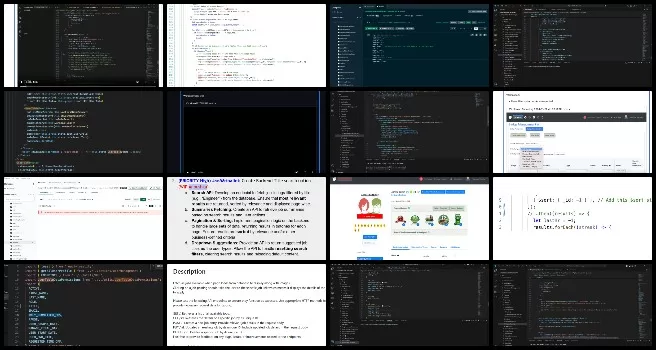
DEV DYNASTY SOFTWARE DEVELOPMENT TEAM
The Dev Dynasty Team’s summary, covering their work on the Highest Good Network software, was managed by Jatin Agrawal (Software Engineer) and includes Fangle Xi (Software Engineer), Nikita Kolla (Full Stack Developer), Nishita Gudiniye (Software Engineer), Sailavanya Narthu (Software Engineer), Shreya Vithala (Software Engineer) and Varun Elangovan (Software Engineer). The Highest Good Network software is how we’ll manage and objectively measure our process for cooperatively building a world that works for everyone through our social architecture, construction, production, and maintenance processes. This week, Fangle began researching the new API and discovered it may require support for company accounts and icons. The task is proving to be more complex than initially anticipated, especially since the API update cannot be directly used with account passwords for login. She has also been assisting a coworker with a code review. Jatin worked on implementing functionality to create various application question sets, developing both the frontend and backend components for the task. He created a customizable form to accommodate multiple job applications and prepared corresponding database models. Additionally, he wrote tests to ensure the models’ reliability and defined the necessary routes and controllers to support the feature.
Nishita worked on the “Team Stats – Comparison Needed” component in the total organization summary section, adding metrics to track and compare the number of users in teams versus those not in teams over time. She applied percentage changes, ensured data validation standards were met, refined data processing methods to improve the representation of team dynamics, and created a pull request for these changes. Nikita resolved issues with previously raised pull requests, addressing merge conflicts related to the React input components task and queries for the badge assignment task. She began work on a social media scheduler for Tumblr by researching the Tumblr API and developing an initial prototype for the component. Timed regular updates on the social media channel is a success factor in cooperatively building a world that works for everyone. Sailavanya addressed issues related to a blank page in the application caused by API token handling during CI builds, identifying the root cause by analyzing build logs and debugging the authentication flow. She updated token management logic to ensure proper handling in the CI pipeline, conducted testing to validate the fix, and documented additional failures in other components discovered during testing, providing recommendations for further analysis.
Shreya completed the User Management task by implementing sorting functionality to ensure newly added users appear at the top of the list upon refreshing, started a new Figma task as part of phase 3 documentation to work on prototyping designs, and verified the work of three team members in her role as a manager-in-training, reporting her assessments to Jatin. Varun verified the Anniversary Celebrated feature, which enables emails to be sent to individuals celebrating anniversaries, as well as the Global Volunteer Network Map feature, which displays a scalable map showing the locations of volunteers. He also updated all his findings in the Total Org Summary Google Sheets. See the Highest Good Society and Highest Good Network pages for more on how this relates to cooperatively building a world that works for everyone. View some of the team’s work in the collage below.
EXPRESSERS SOFTWARE DEVELOPMENT TEAM
The Expressers Team’s summary, covering their work on the Highest Good Network software, was managed by Christy Guo (Software Engineer) and includes Aishwarya Ramesh (Software Engineer), Faye Lyu (Software Engineer), Haoqing Zhu (Software Engineer), Howie Miao (Software Engineer), Rahul Trivedi (Software Developer), Reina Takahara (Software Developer), Shreya Laheri (Software Developer), and Strallia Chao (Software Engineer). The Highest Good Network software is how we’ll manage and objectively measure our process for cooperatively building a world that works for everyone through our social architecture, construction, production, and maintenance processes. This week, Aishwarya completed the showtrophyicon anniversaries functionality by implementing and integrating both frontend and backend logic. Christy worked on enhancing the ProjectTaskChart component in React, integrating features such as sorting tasks by date or hours and filtering tasks by completion status.
Faye addressed a BSON type bug, refactored code for improved efficiency, and validated pipeline updates using MongoDB and Postman. Haoqing focused on resolving formatting issues on the People Report page, specifically fixing bugs related to top alignment of components. Howie resolved a system date issue and implemented a hotfix to address actions in the development branch. Rahul advanced the HGN Form by finalizing Page 2 with various input types and started development on Page 3. Reina implemented tag management functionality and integrated Axios for handling HTTP requests. Shreya finalized phase 3 documentation by incorporating team feedback and organizing deliverables into actionable tasks. Strallia concentrated on backend tasks related to the Total Org Summary page. See the Highest Good Society and Highest Good Network pages for more on how this relates to cooperatively building a world that works for everyone. See the collage below to view the team’s work this week.
LUCKY STAR SOFTWARE DEVELOPMENT TEAM
The Lucky Star Team’s summary, covering their work on the Highest Good Network software, was managed by Anne Zhang (Software Engineer) and includes contributions from Chetan Sunku (Software Engineer), Koushica Bosadi Ulaganathan (Software Engineer), Nikhitha Kalinga (Software Engineer), T R Samarth Urs (Data Analyst), Vaibhavi Madhav Deshpande (Software Engineer), Yashwanth Pokala (Software Engineer) and Ziyan Wang (Software Engineer). This week, Chetan continued working on the issue related to time updates not automatically reflecting on the dashboard without a page reload, after completing a previous hotfix. He investigated the problem and sought assistance in the coding channel but did not receive any responses. Koushica worked on enhancing the functionality of the Dashboard’s Tasks tab by integrating Google Docs and Manager icons. She improved user interaction by adding distinct role colors, clickable profile links, and hover displays. She also reviewed and approved PR #2801, addressing issues with the Add Time Entry button and incorrect user profile data. Cooperatively building a world that works for everyone is automation-dependent for effective updates and dissemination.
Nikhitha resolved display issues in the Team Member Tasks section on smaller screens, fixing bugs where team member names were hidden and the section froze or shook during scrolling. She tested the changes under different user roles and across light and dark modes before submitting a pull request. Samarth managed a PR review team, evaluating their work, reviewing uploaded images, and providing feedback. He summarized the team’s work in a blog post, which included a collage of their images. Vaibhavi worked on action items for the HGN Phase III document, collaborating with teammates to define sub-deliverables and providing feedback to the UI team on integrating a poll tracking system in Figma. System tracking especially of tasks is important in enhancing cooperatively building a world that works for everyone.
Yashwanth focused on resolving bugs, fixing an issue with duplicate entries in the permission log table, and implementing design changes to improve its structure. He also addressed the “Missing Asterisk” bug and reviewed the overall implementation of the permission log feature. Ziyan identified and resolved an alignment issue with the Teams button and input field, traced the problem to a specific PR and code change, and updated the corresponding tasks in the documentation and the Phase 2 WBS Excel sheet. This week, Anne worked on fixing the member column filter bug in the Projects table, addressing an issue where the table could not be sorted by the number of active members. She encountered an error when clicking the sort button (ERR_INSUFFICIENT_RESOURCES) and attempted to resolve it using caching, but the issue persists. Anne also managed tasks within her team, Lucky Star, reviewed team photos and videos and submitted weekly summaries. Learn more about how the Highest Good Society and Highest Good Network measures and assists in cooperatively building a world that works for everyone in the Highest Good Network open source hub. The collage below shows a compilation of the work from this team.
MOONFALL SOFTWARE DEVELOPMENT TEAM
The Moonfall Team’s summary, covering their work on the Highest Good Network software was managed by Satya Shanthi Tadiparthi (Team Manager), and includes Bhavya Prakash (Software Engineer), Calvin Liu (PR Team), Navya Sri Ankireddy (PR Team), Newell Newell (PR Team I-N), Nikhil Giri (Software Engineer), Rachana Zha (Software Engineer), Rashmitha Yadav (Software Engineer), Shashank Kumar (Software Engineer), Swathi Dharma Sankaran (Software Engineer), Vedant Gandhi (Software Engineer), and Yili Sun (Software Engineer). This week, Bhavya reviewed documentation to identify potential tasks and explored different schemas. She engaged the community forum to address a lead badge bug, while examining the GitHub repository for insights and testing solutions. Calvin submitted materials for One Community Global recognition and worked on optimizing system performance. He addressed Bug 21, involving the “Add Intangible Time Entry” feature. Navya implemented a new “Tracking Button” permission for advanced management and positioned it under “User Management” to enhance access control and streamline updates. Newell updated PHP from 8.2 to 8.3 and resolved WordPress plugin issues. He completed backend development for a leaderboard system and achieved a website benchmark score of 100.
Nikhil addressed frontend and backend issues related to the “Add New User” popup by implementing toast notifications and asynchronous email operations, while analyzing PR conflicts and resolving layout issues on the Project Report Page. Rachana worked on implementing gzip compression in an Express.js application and created a GitHub branch for the enhancement. She assisted with workspace setup issues. Rashmitha reviewed multiple PRs and tested implemented features. She uploaded related screenshots. Satya reviewed and tested PRs for functionalities like TimeOffRequestsTable and User Management, managed team summaries, and reported on weekly progress. Shashank resolved a button alignment issue and tested the “Final Day” button but delayed the PR due to pending clarifications. Swathi addressed a UI jump issue in the tasks module by updating JavaScript and CSS and ensured resource alignment. She updated headers to display project names dynamically. Vedant fixed a dark mode issue in the project delete modal and raised a related pull request. He addressed test failures. Yili resolved issues affecting non-Owner/Admin accounts with edit permissions, fixed related unit tests, resolved merge conflicts, and addressed freezing issues caused by active buttons. See the Highest Good Society and Highest Good Network pages for more on how this relates to cooperatively building a world that works for everyone. Below is a collage for the team’s work.
REACTONAUTS SOFTWARE DEVELOPMENT TEAM
Reactonauts’ Team’s summary, covering their work on the Highest Good Network software, was managed by Vijeth Venkatesha (Software Engineer) and includes Dhairya Mehta (Software Engineer), Gmon Kuzhiyanikkal (Software Engineer), Haoyue Wen (Software Engineer), Khushi Jain (PR Team I-N), Mohan Gadde (Software Engineer), Nikhil Pittala (Software Engineer), Pallavi Thorat (PR Team O-Sh), Peterson Rodrigues (Full-Stack MERN Stack Developer), Rishitha Mamidala (Software Engineer), Saniya Farheen (Software Engineer), Sharadha Shivakumar (Software Engineer), and Vikram Badhan (Software Engineer). This week, Dhairya worked on the “Fix Projects find user function” task and identified the root cause of an issue affecting user discovery in the projects section. She developed a sort and search function to optimize user assignment processes. Gmon addressed the addition of bell notifications for task deadlines and resolved 404 errors. He completed work on adding active/inactive team numbers in the team page and created a new pull request (PR 2850) while awaiting final approval for PR 2609. Haoyue enhanced the FAQ tool by improving user search functionality and created a structured database for FAQs. She implemented features to log unanswered questions, send email notifications, and configure permissions. Khushi reviewed and updated the Phase 3 document by resolving comments, integrating feedback, and collaborating with team members to ensure accuracy and clarity in both content and visuals.
Mohan optimized the project list’s organization and resolved visibility toggle issues in user profiles. He addressed merge conflicts related to the team auto-save feature. Nikhil reviewed 12 pull requests involving frontend, backend, and unit testing tasks to ensure code quality and functionality. He made updates to the removeTaskFromUser function, focusing on simplifying logic, refining mapping, and improving integration between frontend and backend systems. Peterson improved the “My Team” filter in the “Leaderboard” table by enhancing the dropdown menu’s appearance, scroll functionality, and team member display. Rishitha implemented a percentage toggle feature for the People Report and added tooltips. She enhanced the display of percentage labels in charts. Saniya resolved a bug and submitted relevant screenshots and recordings. She requested Git access to create a pull request. Sharadha addressed a screen-shaking issue in the team member task section for smaller screens and verified functionality across user roles and devices. She created PR 2888. Vijeth identified load delay issues and data retention problems when switching dashboards. He conducted meetings, gathered updates, and managed team operations. See the Highest Good Society and Highest Good Network pages for more on how this relates to cooperatively building a world that works for everyone. Below is a collage for the team’s work:
SKYE SOFTWARE DEVELOPMENT TEAM
Skye Team’s summary covering their work on the Highest Good Network was managed by Rishabh Rao (Administrator) and Luis Arevalo (Software Engineer) and the team includes Abi Liu (Software Developer), Laura Cohen (Software Engineer), Sai Preetham (Full Stack Developer), Snehal Dilip Patare (Software Engineer), Yao Wang (Software Engineer) and Zhimin Liang (Full Stack Developer). The Highest Good Network software is how we’ll manage and objectively measure our process for cooperatively building a world that works for everyone through our social architecture, construction, production, and maintenance processes.
This week, Abi worked on debugging a query that, while no longer throwing errors, was still not returning correct results. He focused on researching, analyzing the problem, and consulting documentation to achieve a non-error response and identify potential solutions. Additionally, he reviewed and merged pull requests submitted by teammates to ensure smooth integration of their changes into the project. Laura finalized hard-coding the permission presets file to address back-end authorization issues and integrated it into the permission change modal by updating useEffects and related functions. She met with her manager to troubleshoot back-end issues and decided to update the back-end herself to resolve problems affecting the front end. Laura also fixed minor modal bugs to improve user-friendliness, reached her 80-hour milestone to qualify as an official team member, and completed her bio for the website by cooperatively building a world that works for everyone.
Yao worked on addressing a 401 error code associated with a LinkedIn post feature by analyzing router and controller implementations with input from the team lead, although the issue remained unresolved. Yao also started testing environment variables and implementing schedule posts and posts with media functionalities. Snehal resolved a merge conflict for PR2801, which was delayed by site performance issues and is now awaiting approval, addressed a failing test case in member.test.jsx for PR2862 with all test cases now passing and pending approval, and began developing a new feature to generate an auto-poster for Facebook and Facebook groups for cooperatively building a world that works for everyone.
Zhimin focused on front-end development for the YouTube auto-poster project, implementing components to interact with the backend. While working on the front end. Zhimin identified logic errors in the backend and plans to address these issues while connecting the front end and back end to ensure functionality. Sai Preetham worked on pull requests #2816 and #2864, resolving merge conflicts and fixing issues with the search functionality per project requirements, verifying that updates worked as intended. Sai also prepared the weekly summary and organized Dropbox images for the project cooperatively building a world that works for everyone’s documentation.
Luis worked on creating new warnings and making adjustments to the “get special warnings” route to ensure compatibility with updated data. He implemented functionality that allows users to assign warnings based on the button clicked, accounted for the current user’s warnings, and made adjustments for issuing a blue square and a warning. Additionally, he began working on functionality for a button that issues warnings for both “no summary” and “not enough hours.” See the Highest Good Society and the Highest Good Network pages to learn more about how their work contributes to cooperatively building a world that works for everyone. See below for the work done by the group.
SOFTWARE PR REVIEW TEAM A-K
The PR Review Team’s summaries for team members’ names starting with A-K and covering their work on the Highest Good Network software was managed by Anoushka Hazari (Data Analyst). The Highest Good Network software is a foundation of what we’ll be using to measure our results for cooperatively building a world that works for everyone. This week’s active members of this team were: Abdelmounaim Lallouache (Software Developer), Carl Bebli (Software Engineer) and Kurtis Ivey (Full Stack Developer). They reviewed all the Highest Good Network PRs (Pull Requests) shared in this week’s update. Learn more about how the Highest Good Network will measure and assist in cooperatively building a world that works for everyone in the Highest Good Network open source hub. The collage below shows a compilation of the work from this team.
SOFTWARE PR REVIEW TEAM L-Sg
The PR Review Team’s summary for team members’ names starting with L-Sg and covering their work on the Highest Good Network software was managed by Saumit Chinchkhandi (Administrative Assistant and Software Engineer). The Highest Good Network software is a foundation of what we’ll be using to measure our results of cooperatively building a world that works for everyone. This week’s active members of this team were: Nahiyan Ahmed (Full Stack Software Developer), Nathan Hoffman (Software Engineer), and Pratyush Prasanna Sahu (Software Engineer). They reviewed all the Highest Good Network PRs (Pull Requests) shared in this week’s update. Learn more about how the Highest Good Network measures and assists in cooperatively building a world that works for everyone in the Highest Good Network open source hub. The collage below shows a compilation of the work from this team.
SOFTWARE PR REVIEW TEAM Sh-Z
The PR Review Team’s summary for team members’ names starting with Sh-Z and covering their work on the Highest Good Network software was managed by Olawunmi “Ola” Ijisesan (Administrative and Management Support) and Samarth Urs (Administrative Assistant and Data Analyst). The Highest Good Network software forms the foundation for measuring our results in cooperatively building a world that works for everyone. This week’s active members of this team were: Sujith Reddy Sudini (Mern Stack Developer, Full Stack Developer, Software Developer) and Neeharika Koniki (Software Engineer, Developer). They reviewed all the Highest Good Network PRs (Pull Requests) shared in this week’s update. Learn more about how the Highest Good Network will measure and assist in cooperatively building a world that works for everyone through the Highest Good Network open-source hub. The collage below shows a compilation of the work from this team.
AND WE PRODUCED THIS WEEKLY UPDATES BLOG – CLICK HERE TO SUBSCRIBE
FOLLOW ONE COMMUNITY’S PROGRESS (click icons for our pages)
INVESTOR PAGES
GET INVOLVED
DONATE | WAYS ANYONE CAN HELP | MEMBERSHIP
CLICK HERE FOR ALL PAST UPDATES
One Community Welcomes Sai Preetham Dongari to the Software Development Team!
Posted on November 25, 2024 by One Community Hs
One Community welcomes Sai Preetham Dongari to the Software Development Team as our newest Volunteer/Consultant!
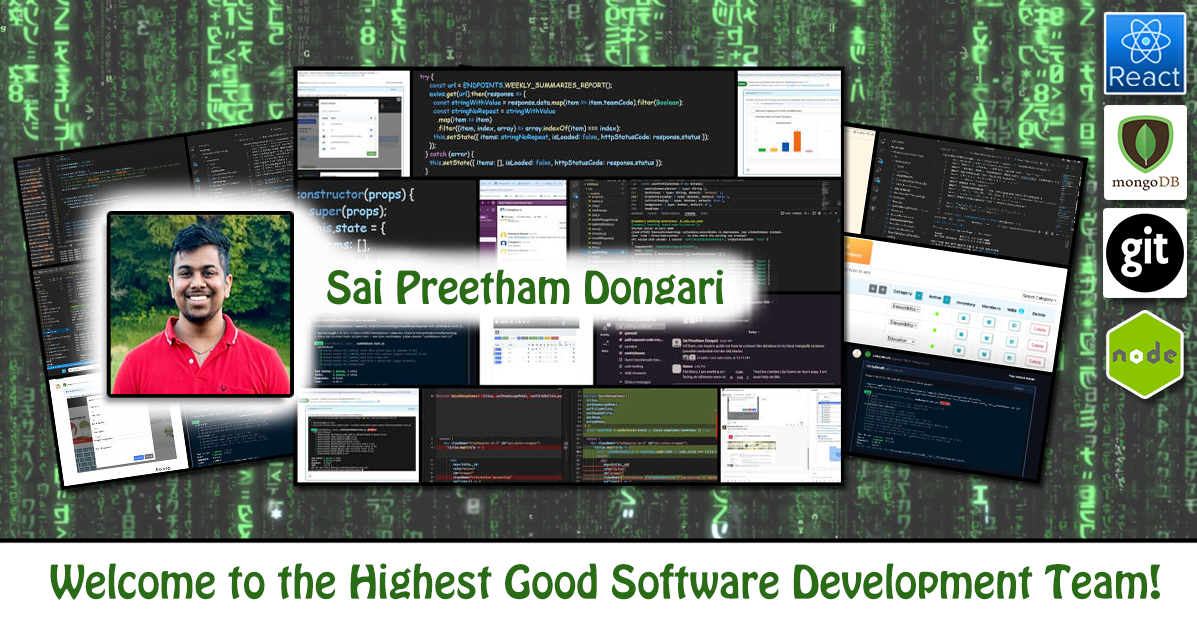
Sai Preetham is a versatile and highly skilled software developer with expertise in Python, Java, Spring, Spring Boot, Docker, Hibernate, Jenkins, React.js, Node.js, Express.js, MongoDB, Angular, Redis, MySQL, AWS, and agile methodologies. He has successfully built seamless, scalable solutions by integrating robust front-end and back-end systems. His contributions at One Community and working on the Highest Good Network include delivering impactful features like archive/unarchive functionality, advanced search capabilities, and enhanced state management, along with comprehensive time log tracking, seamless API integration, and UI/UX improvements. Sai Preetham actively reviews 5-10 pull requests (PRs) weekly across both front-end and back-end, ensuring high code quality and smooth integration.
WELCOME TO THE TEAM SAI PREETHAM!
FOLLOW ONE COMMUNITY’S PROGRESS (click icons for our pages)
 One Community
One Community